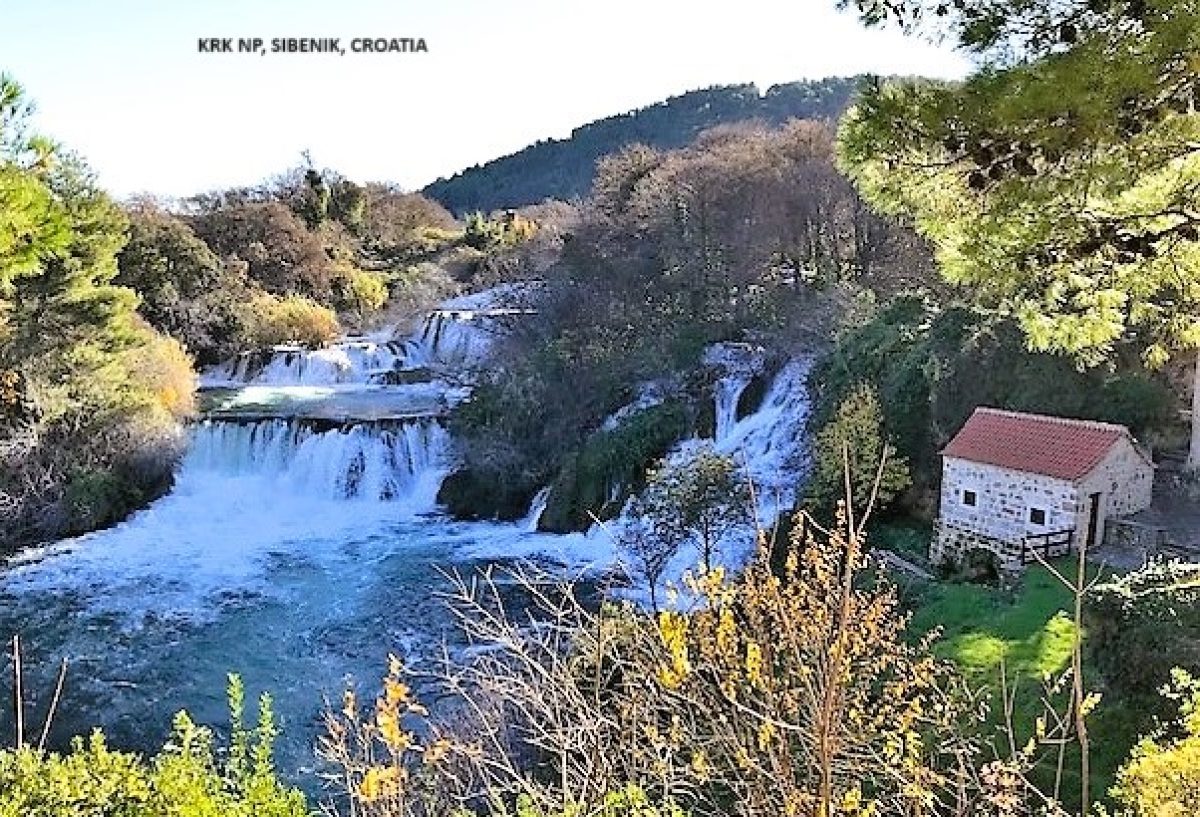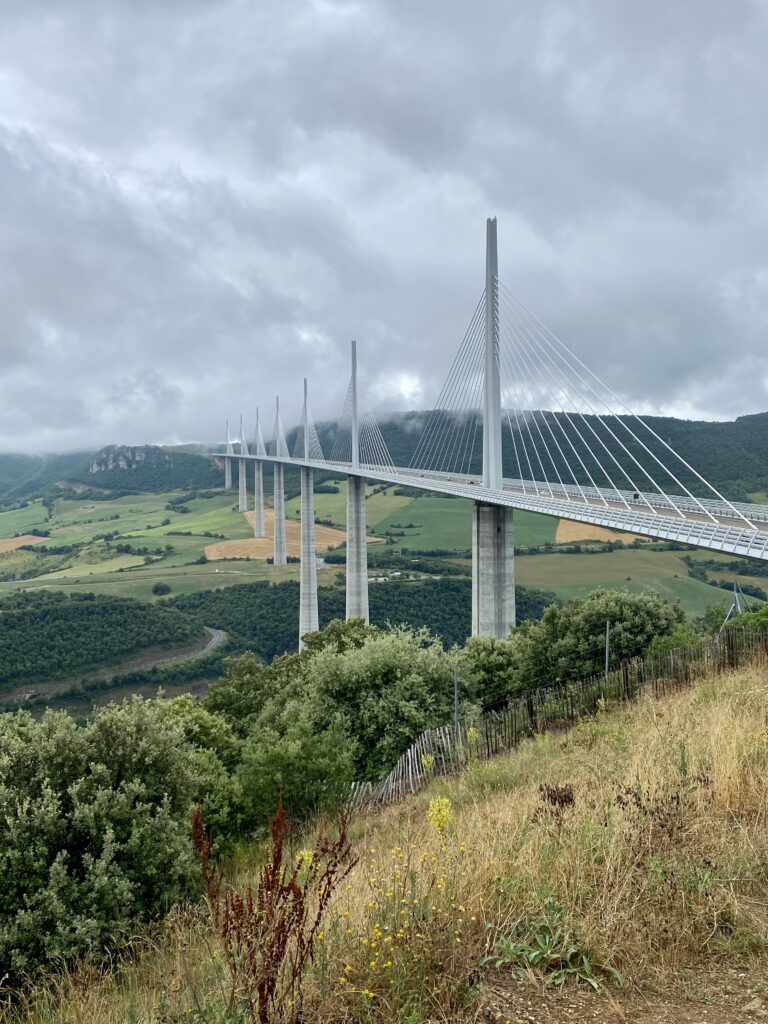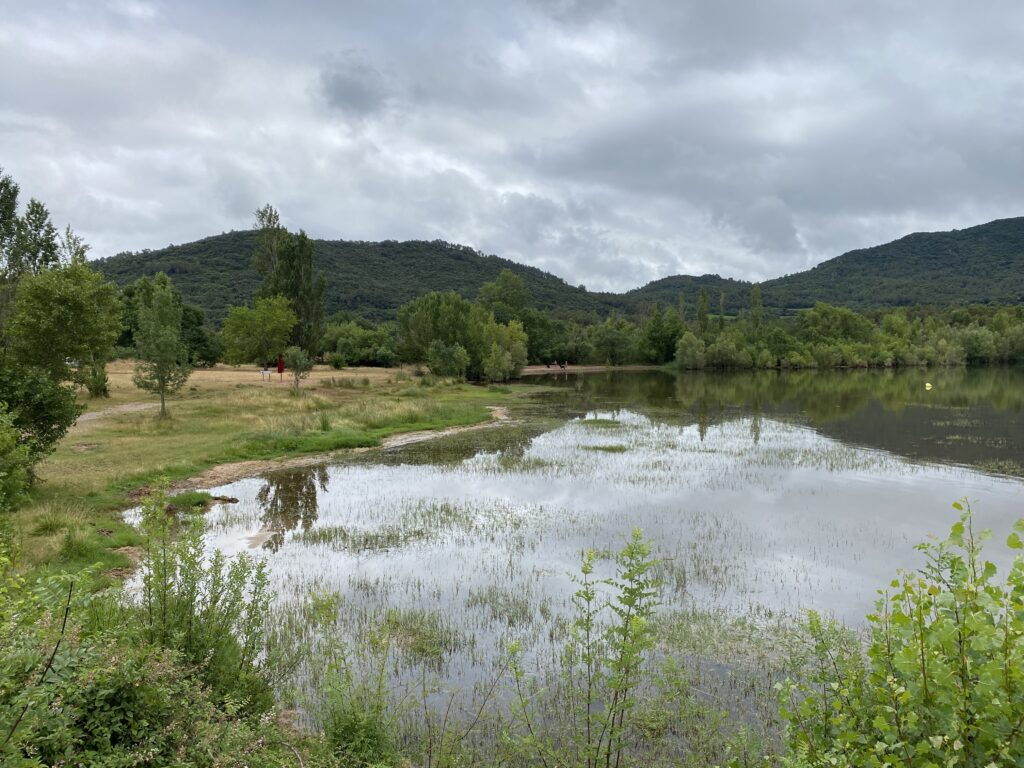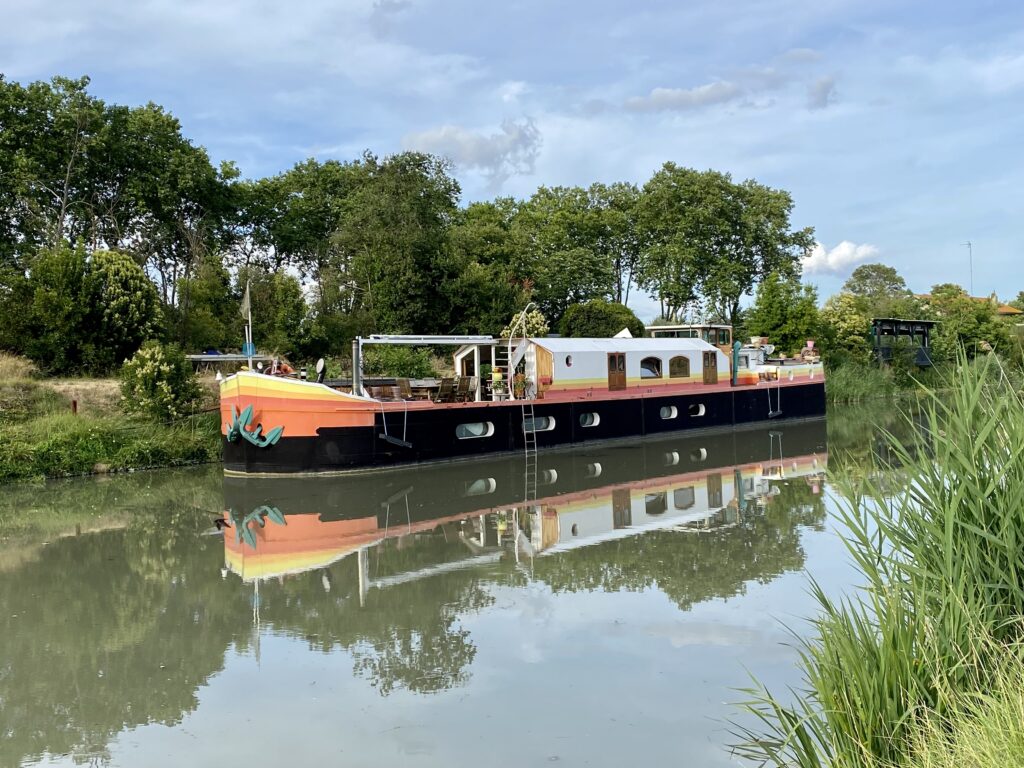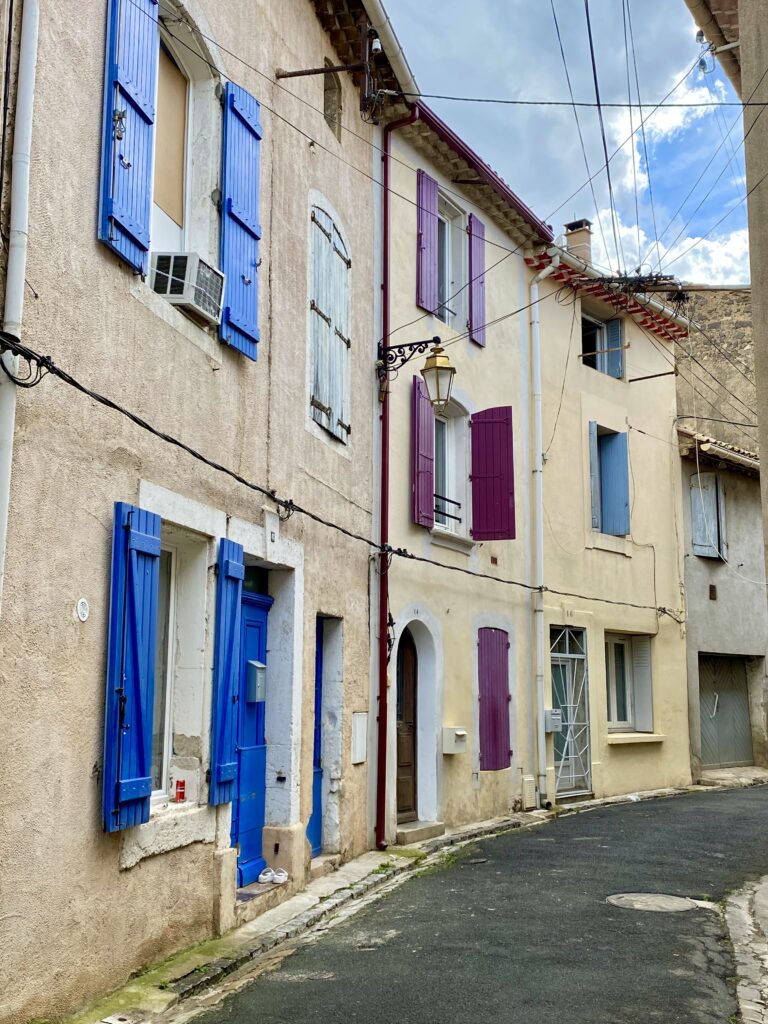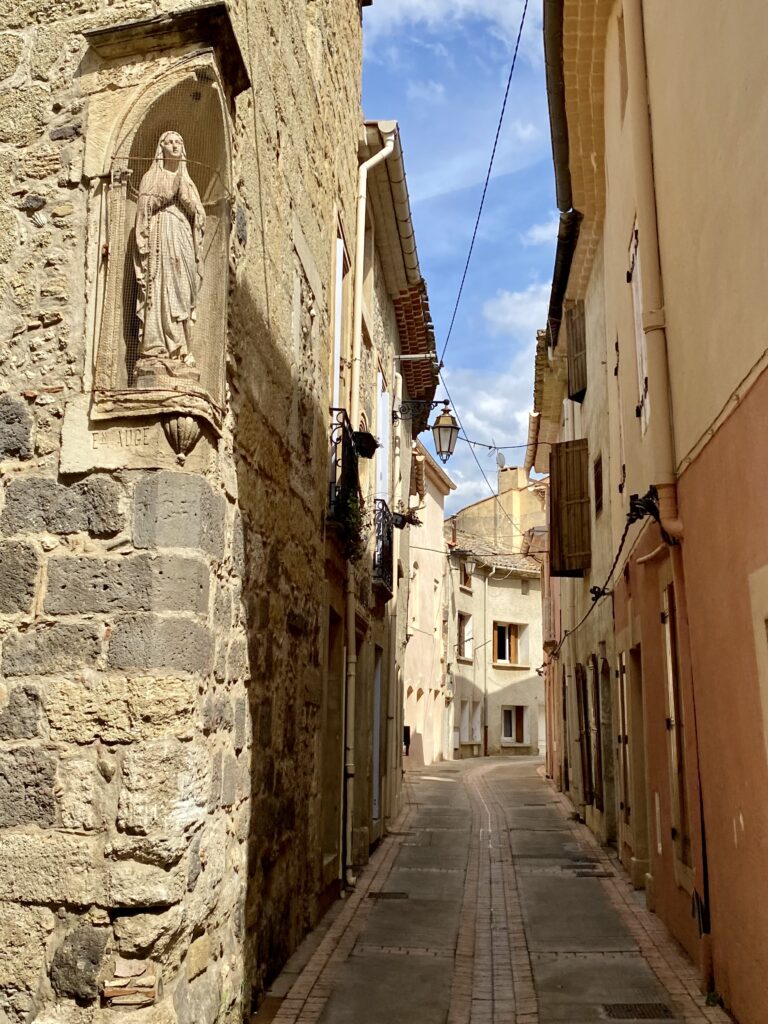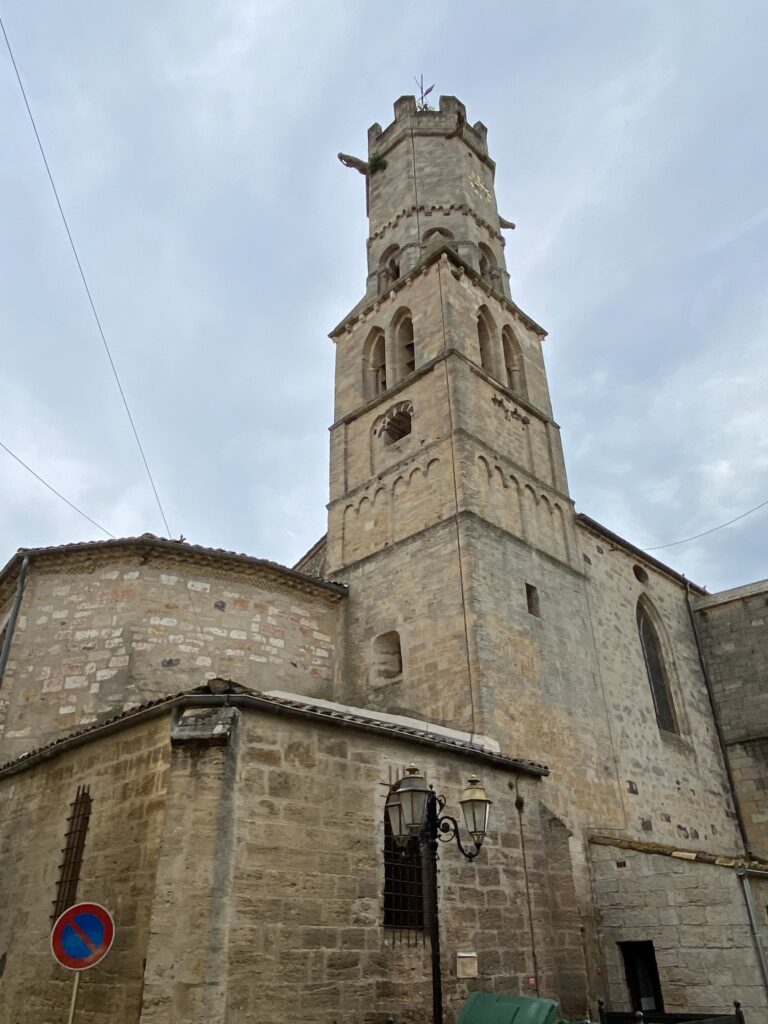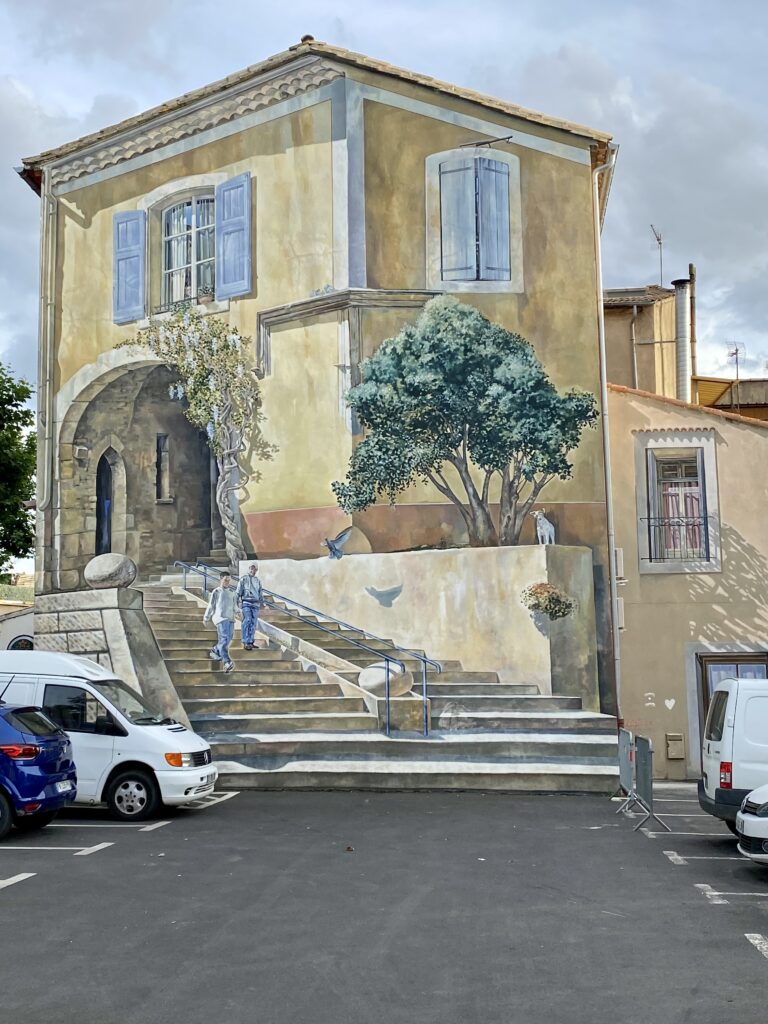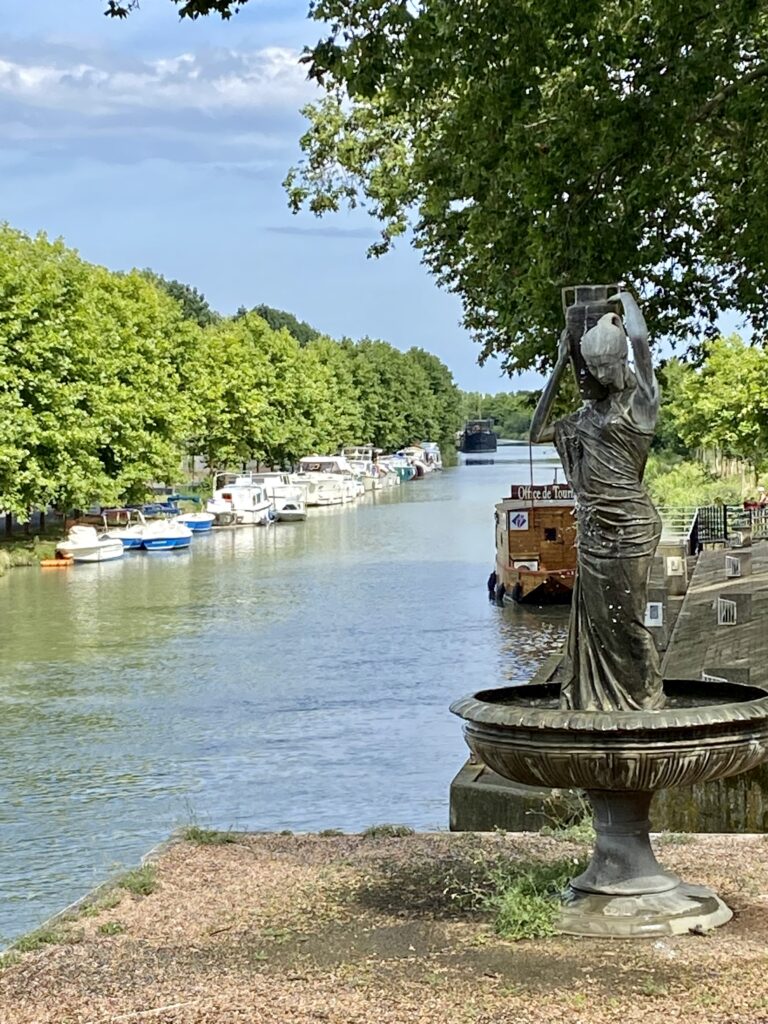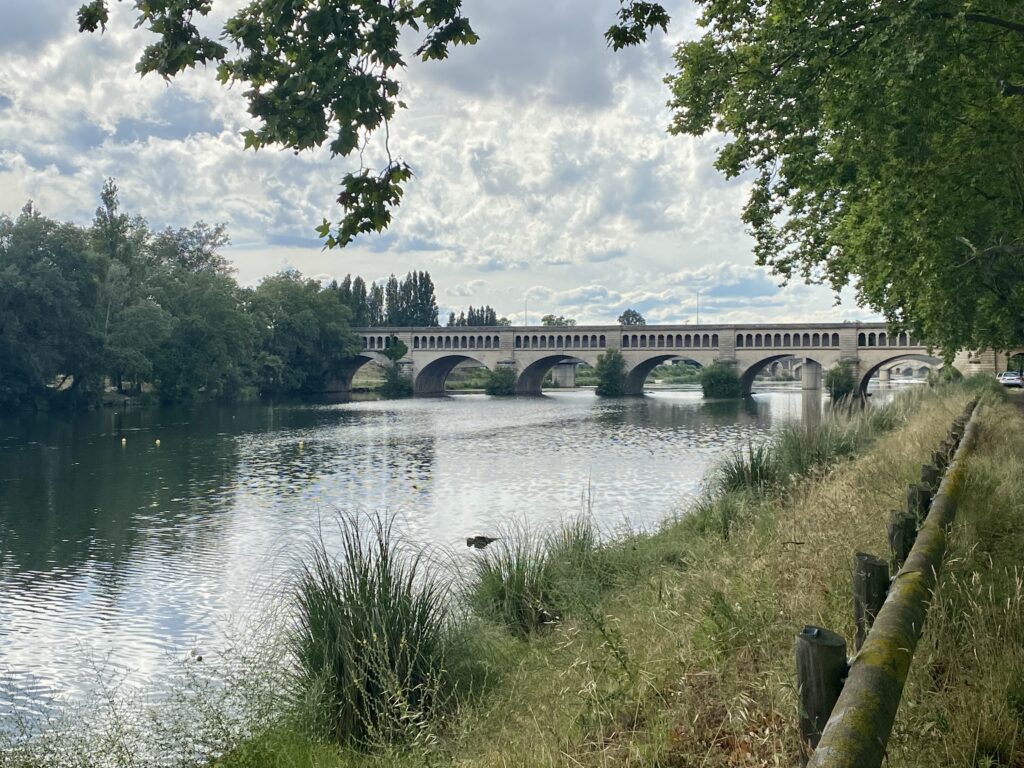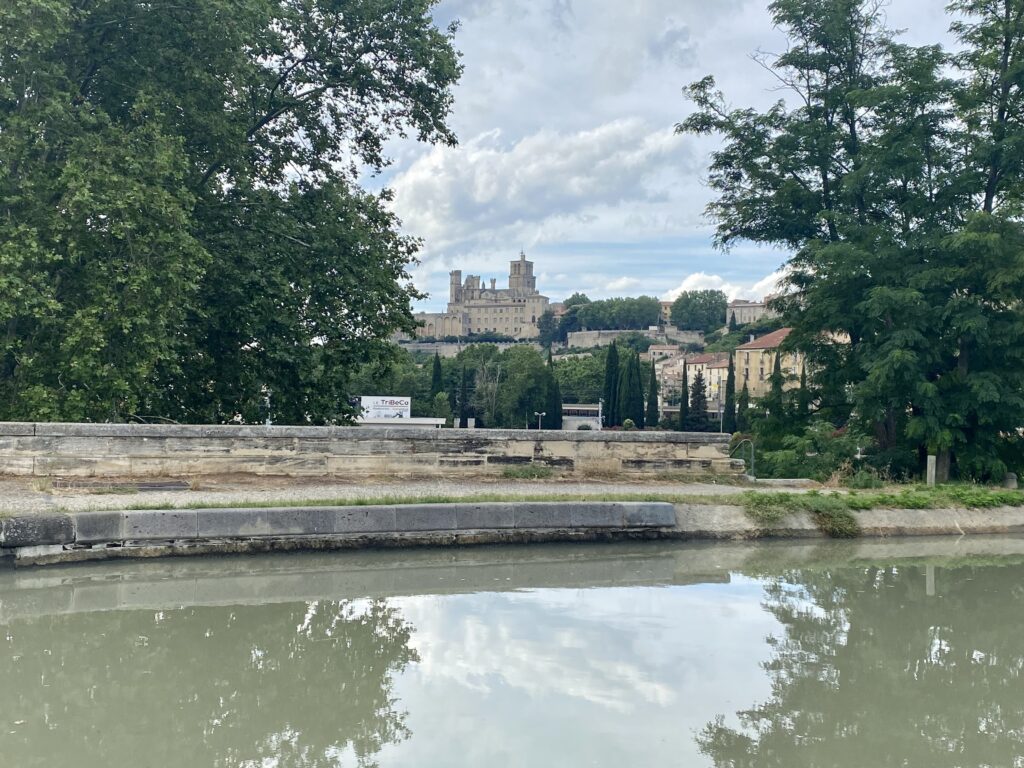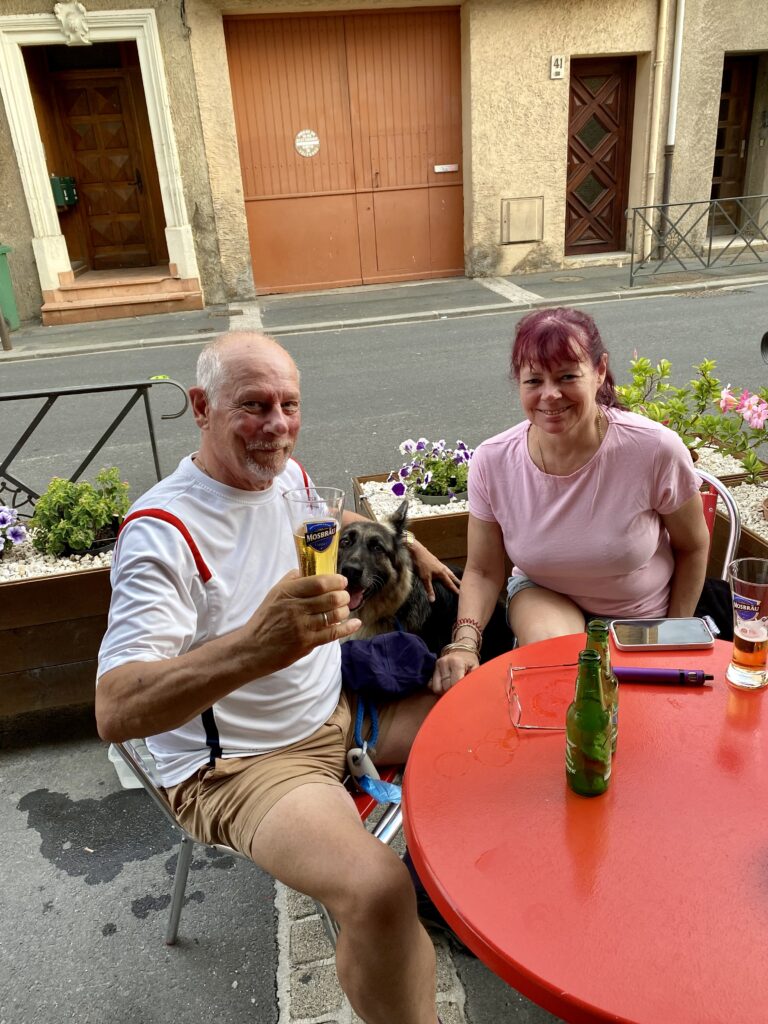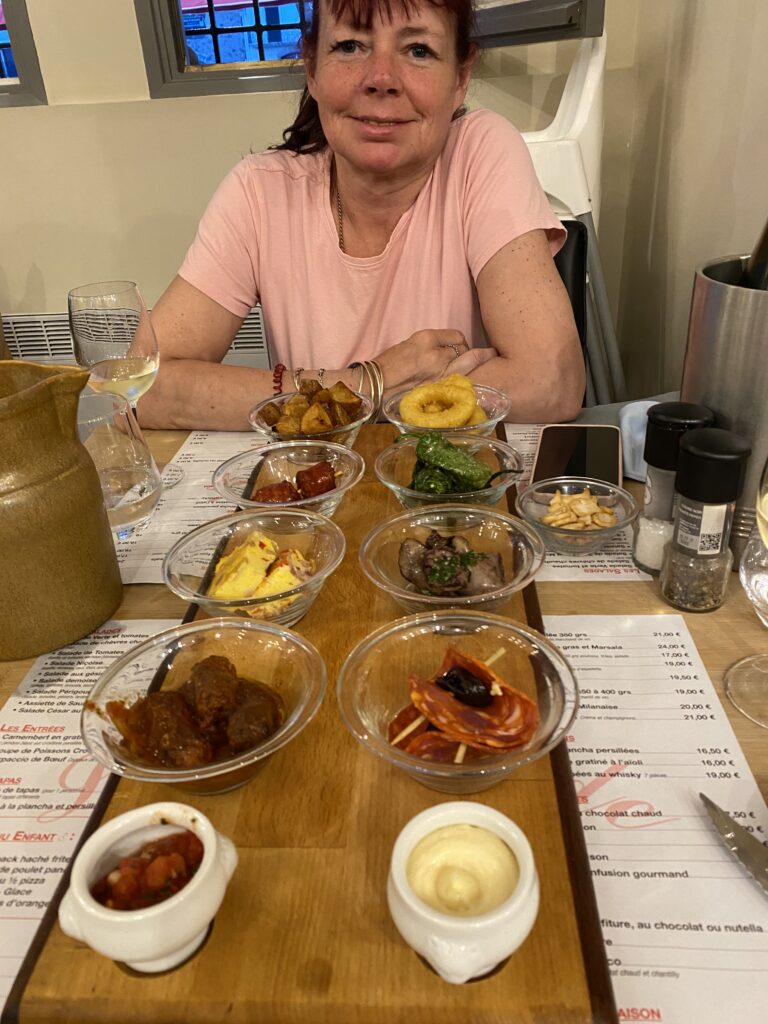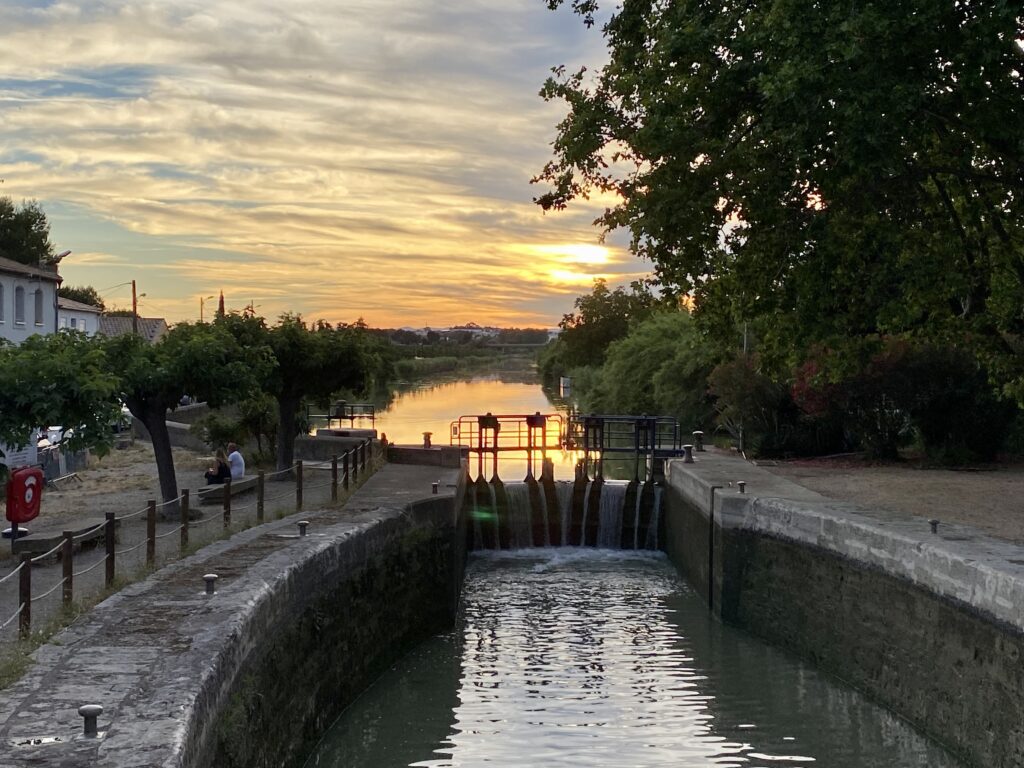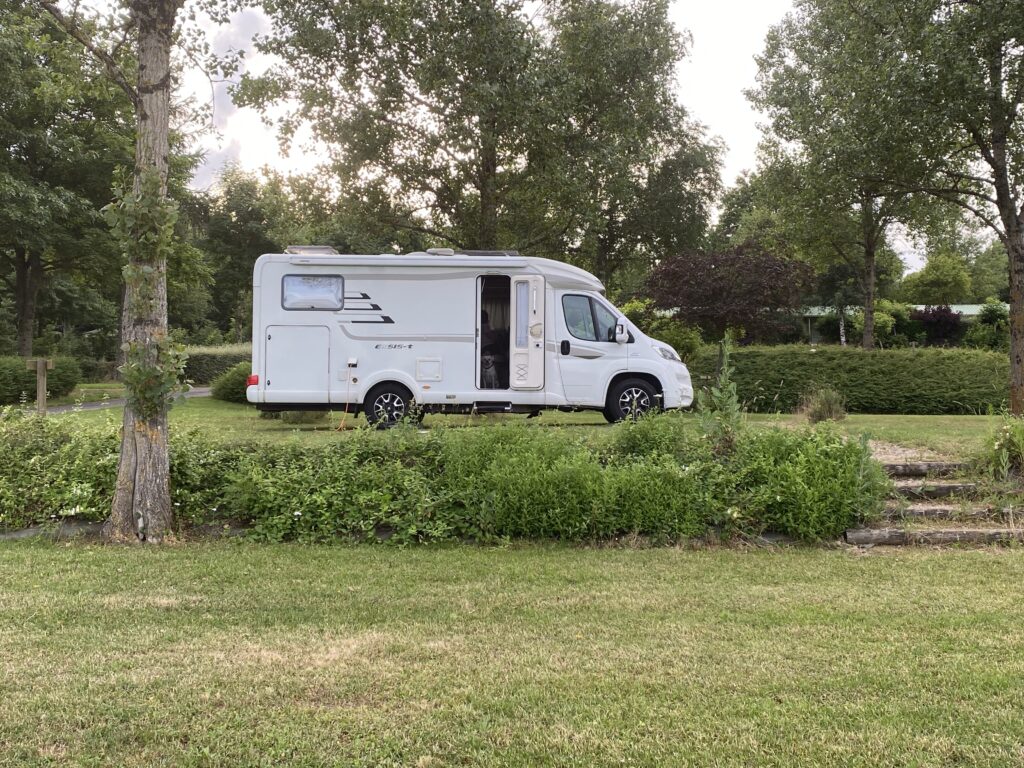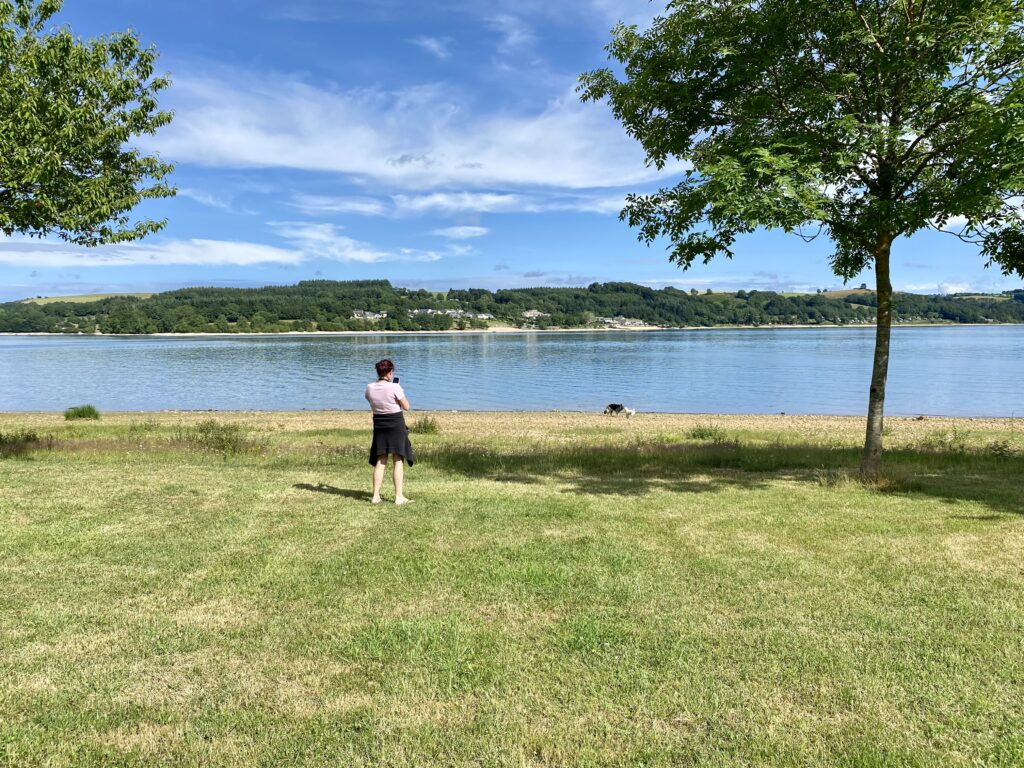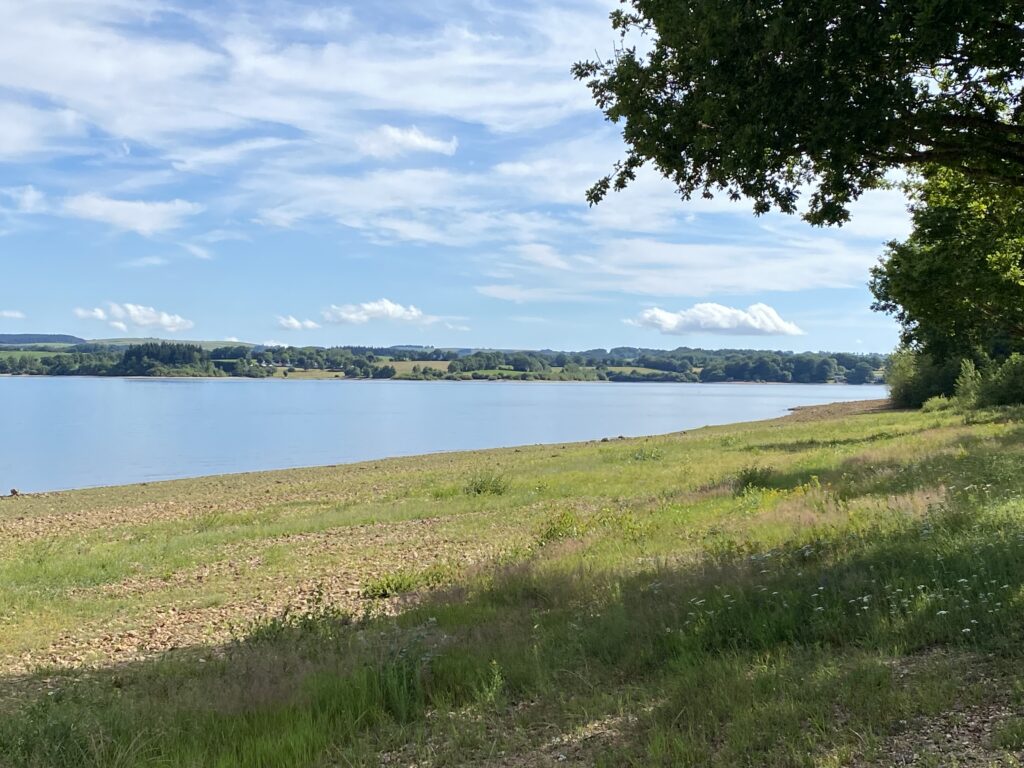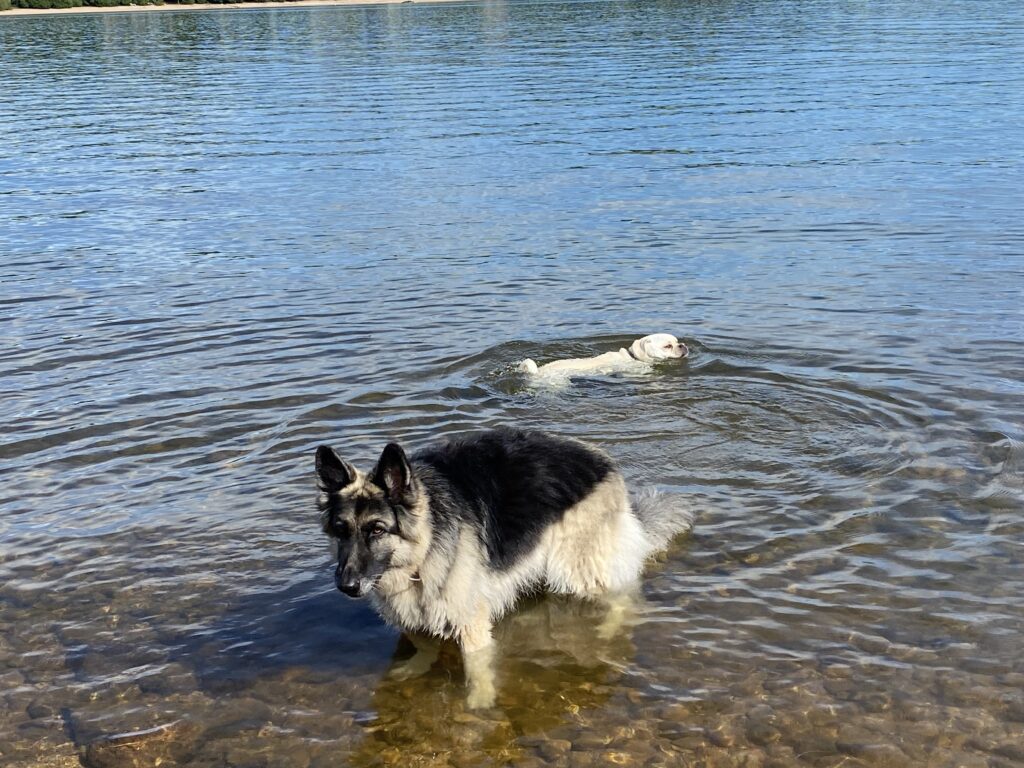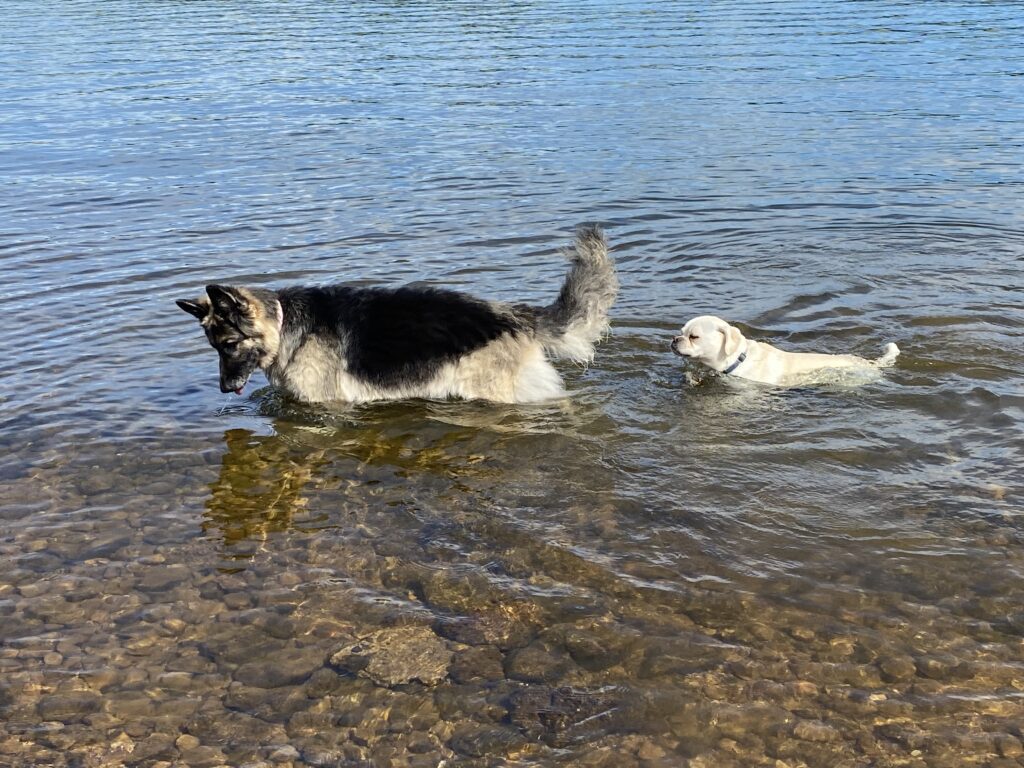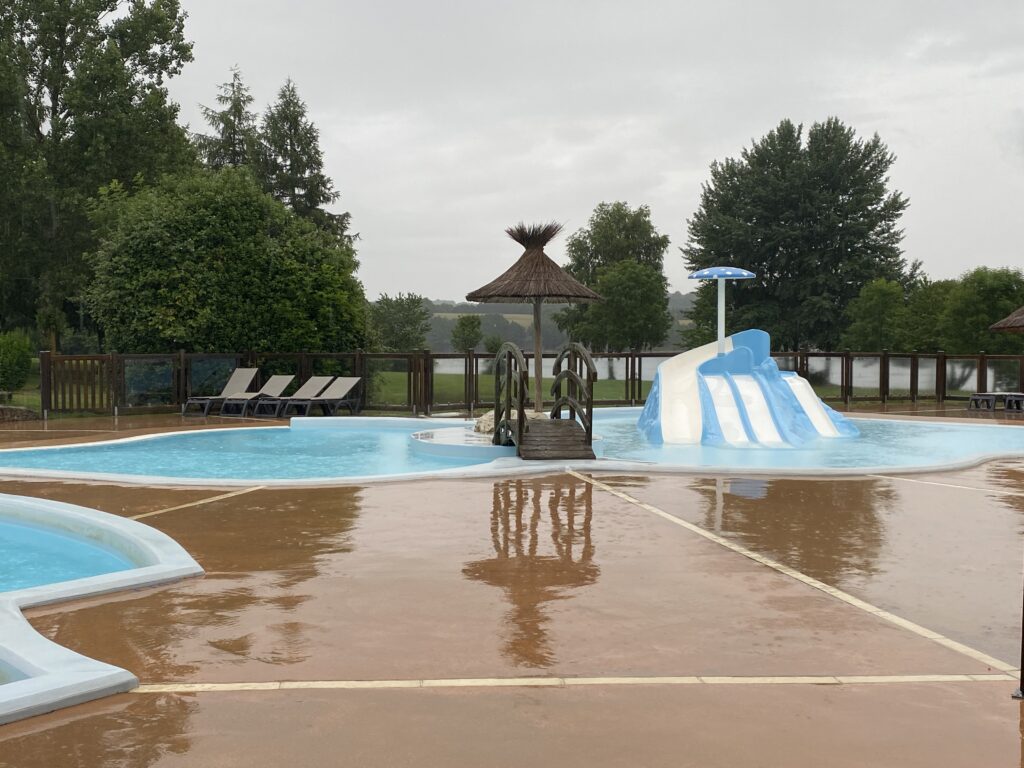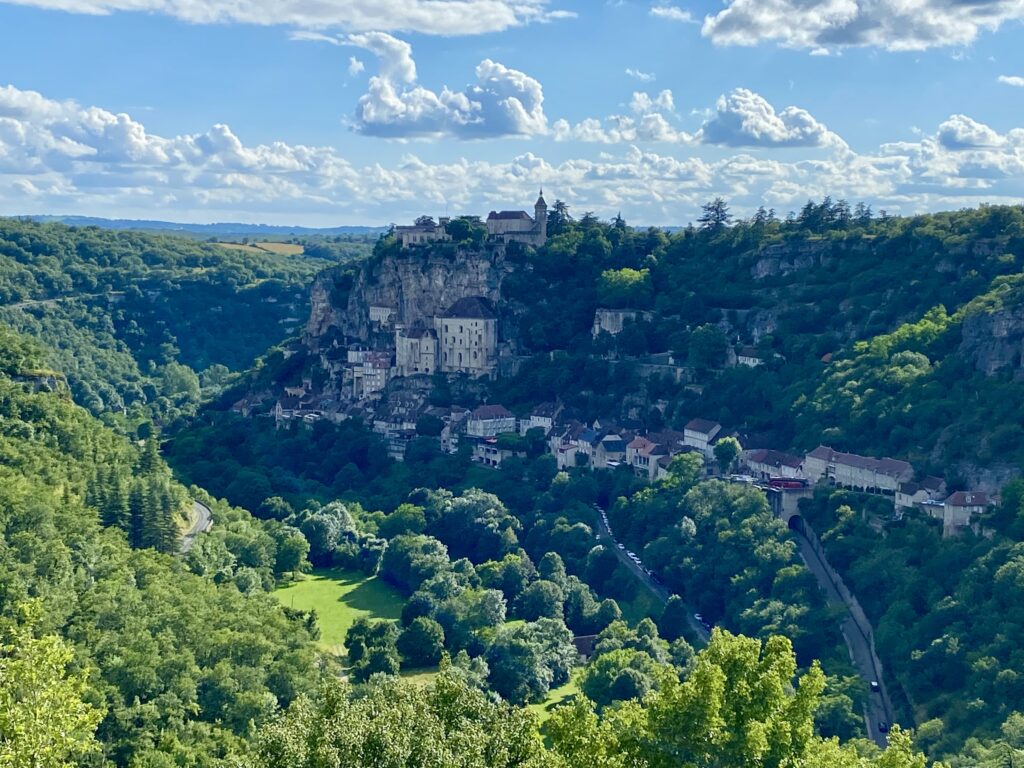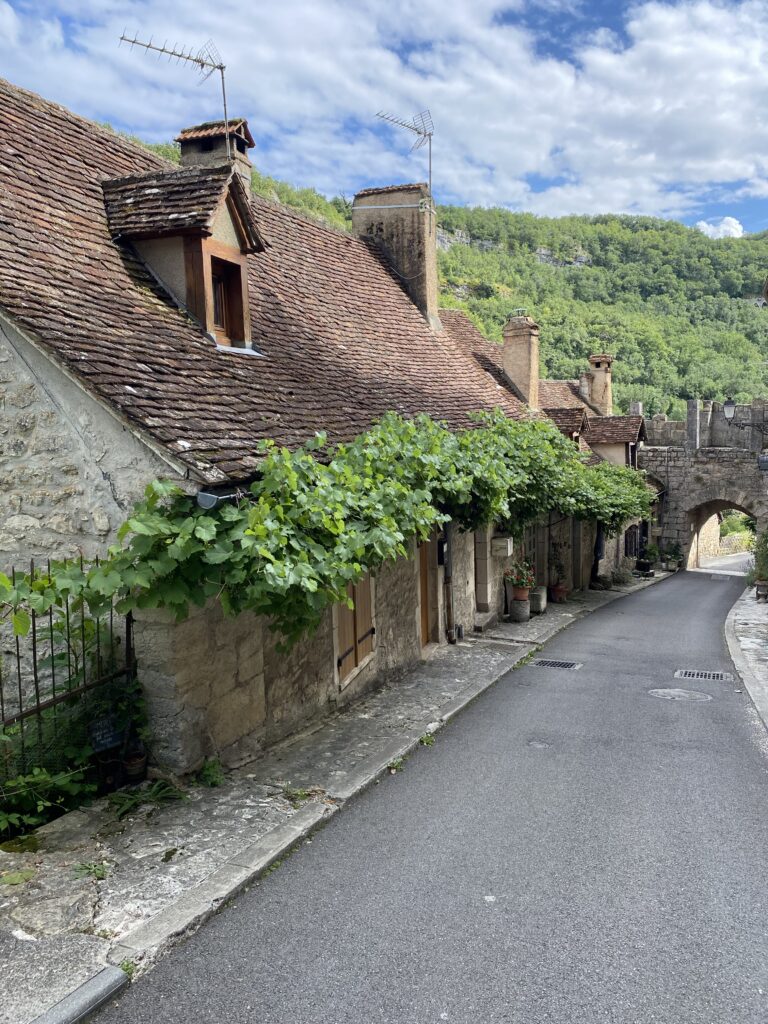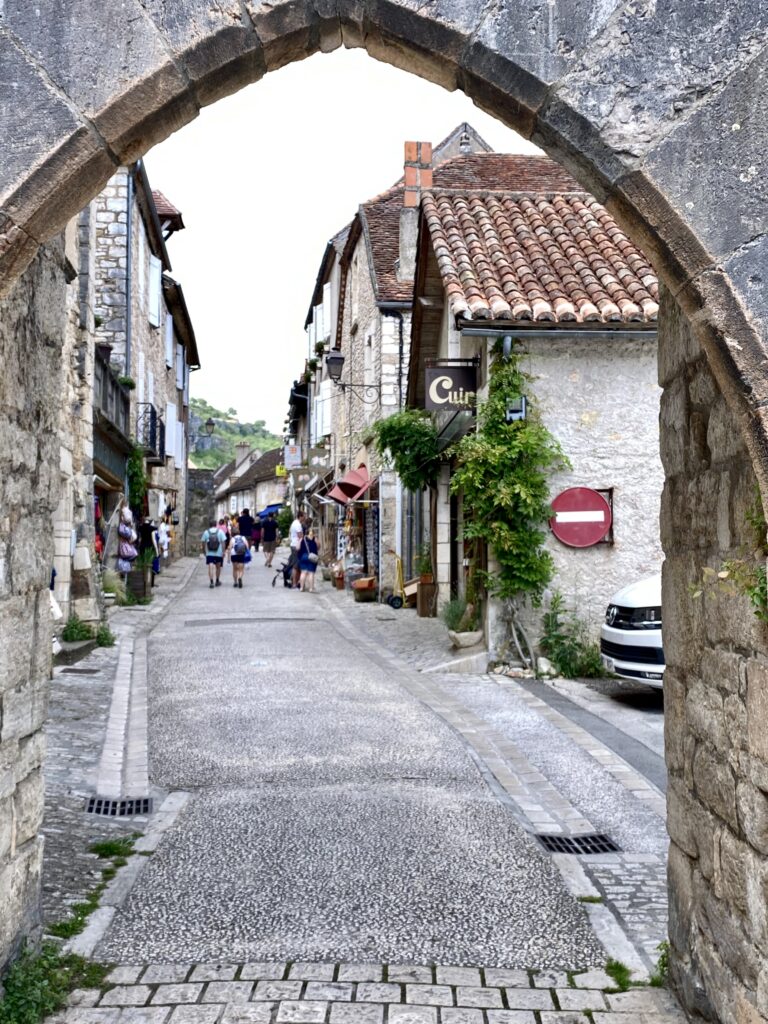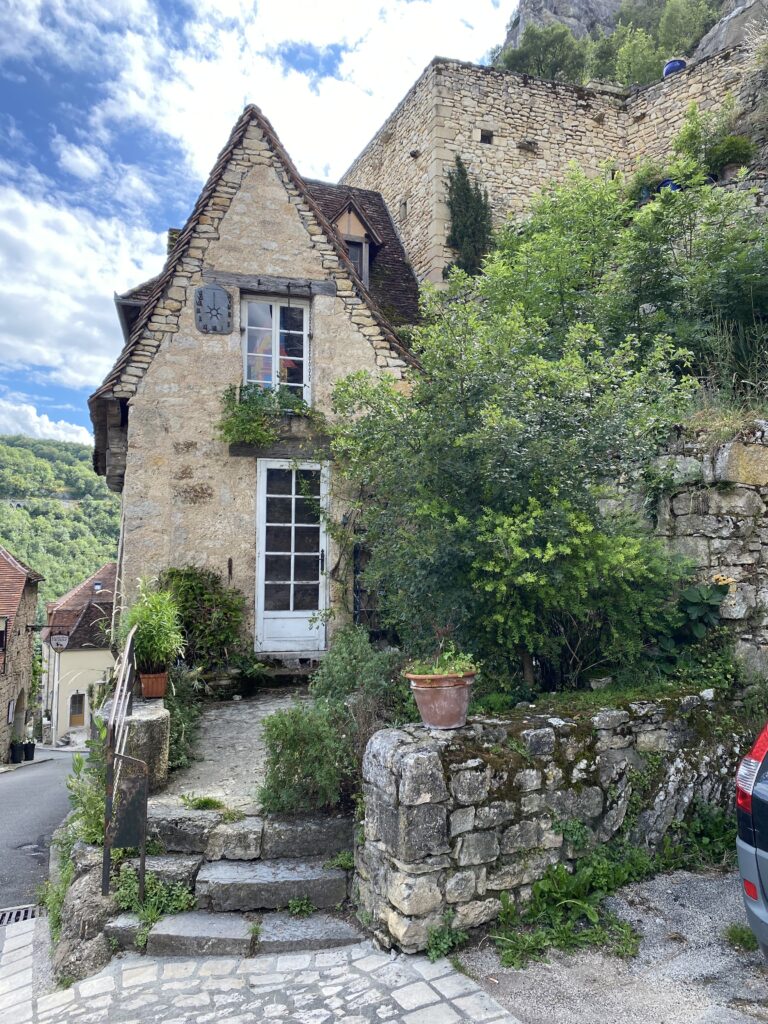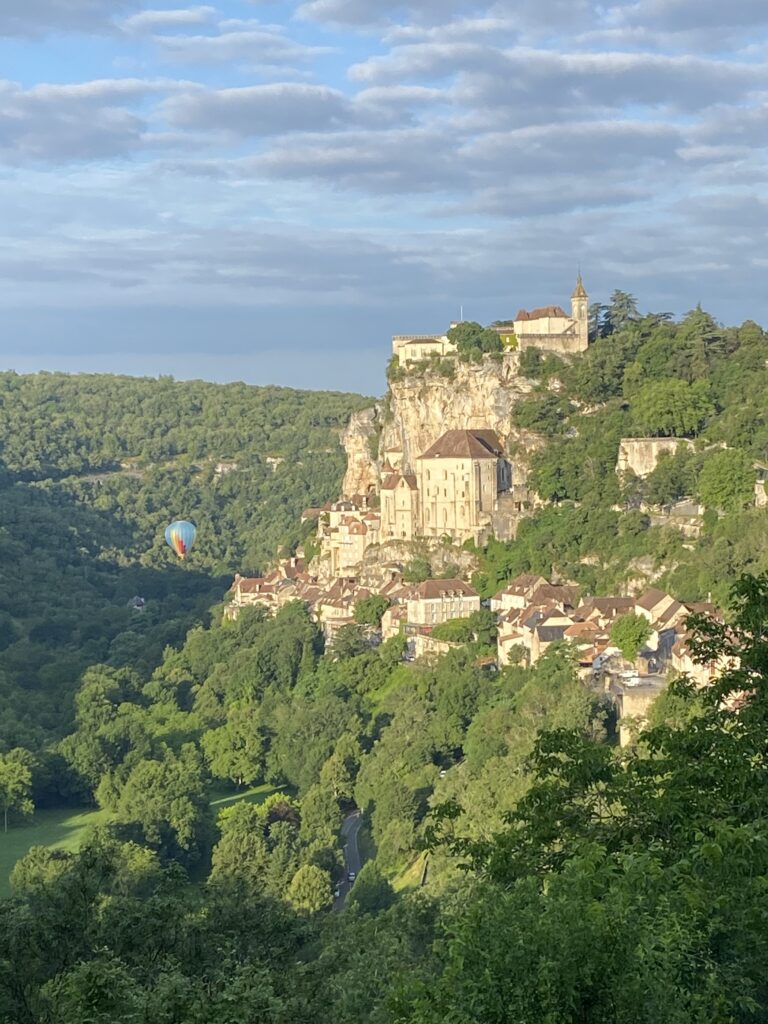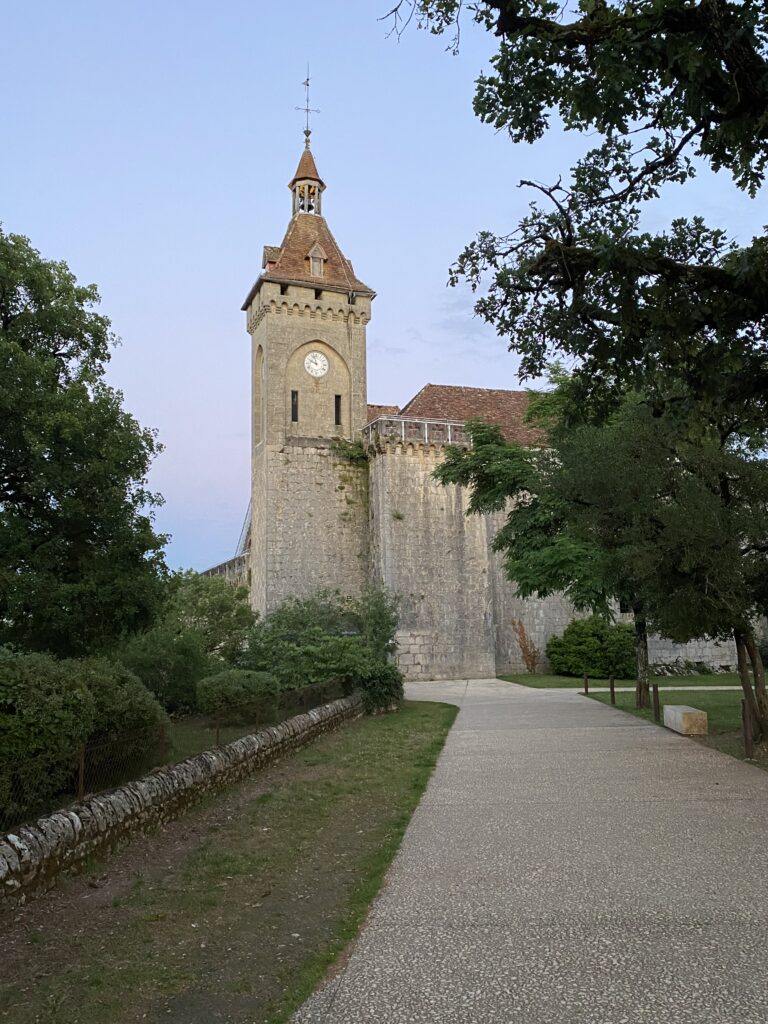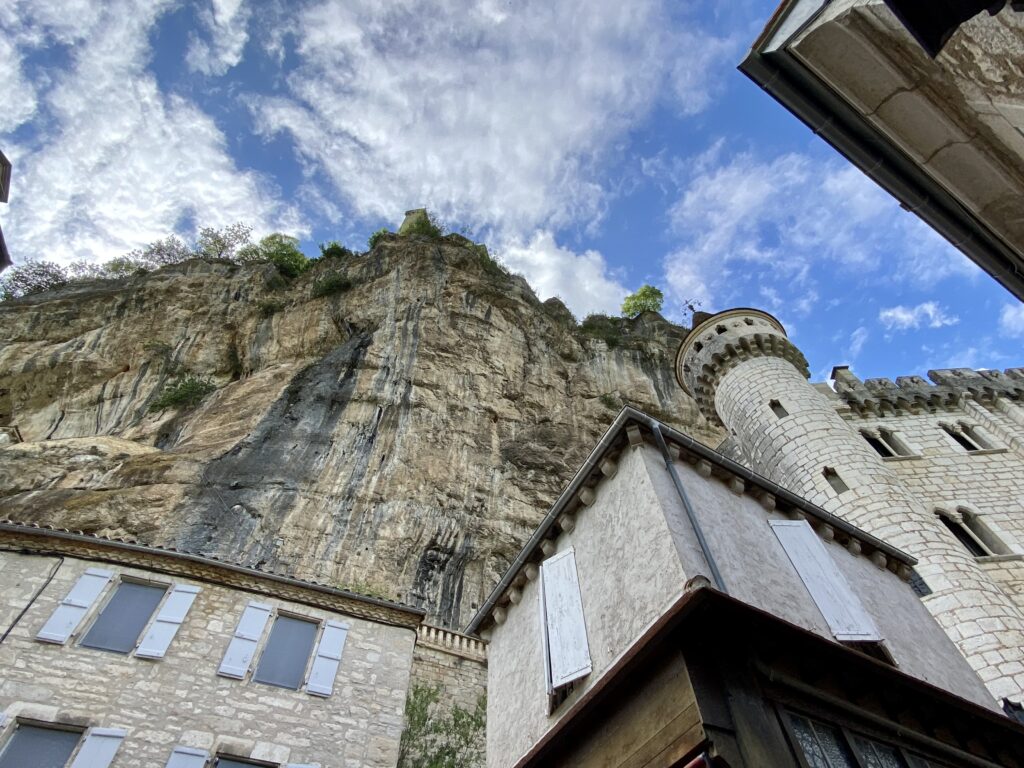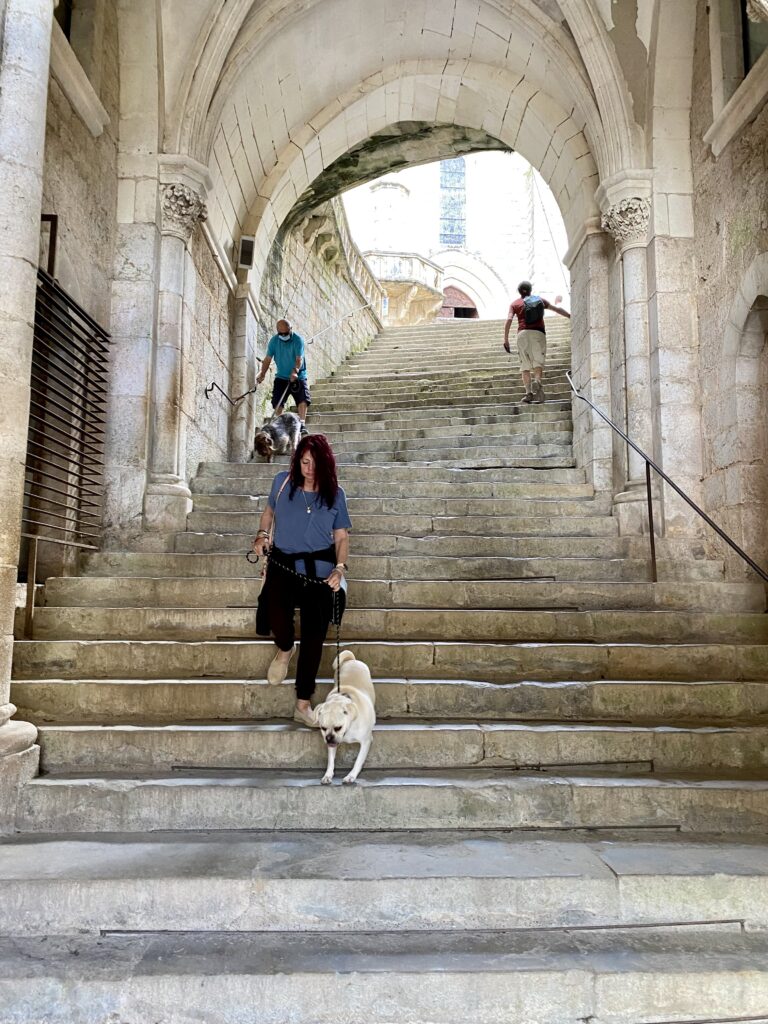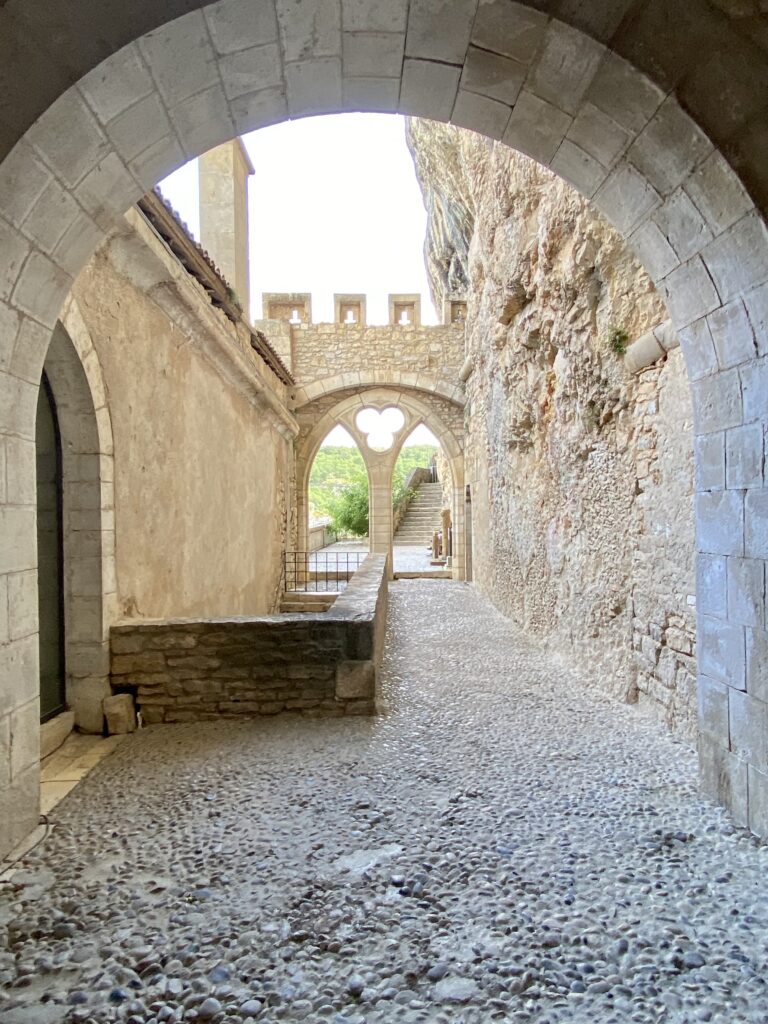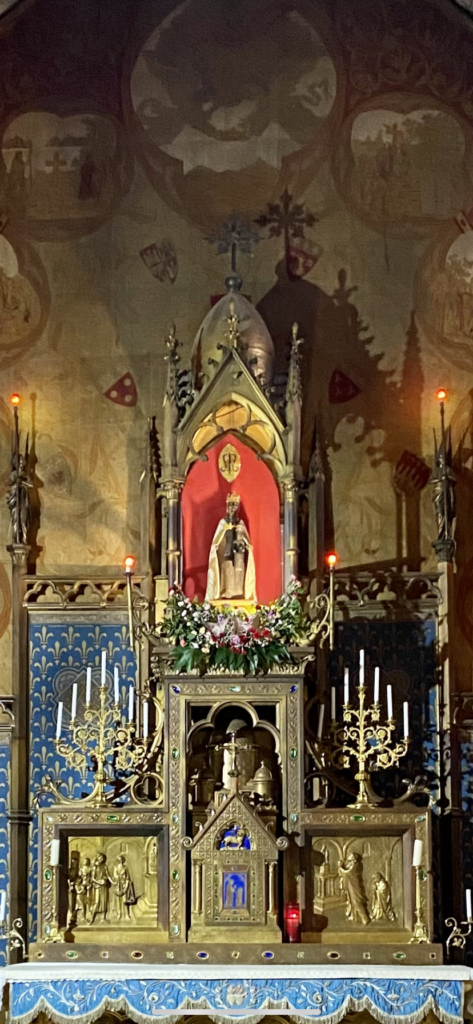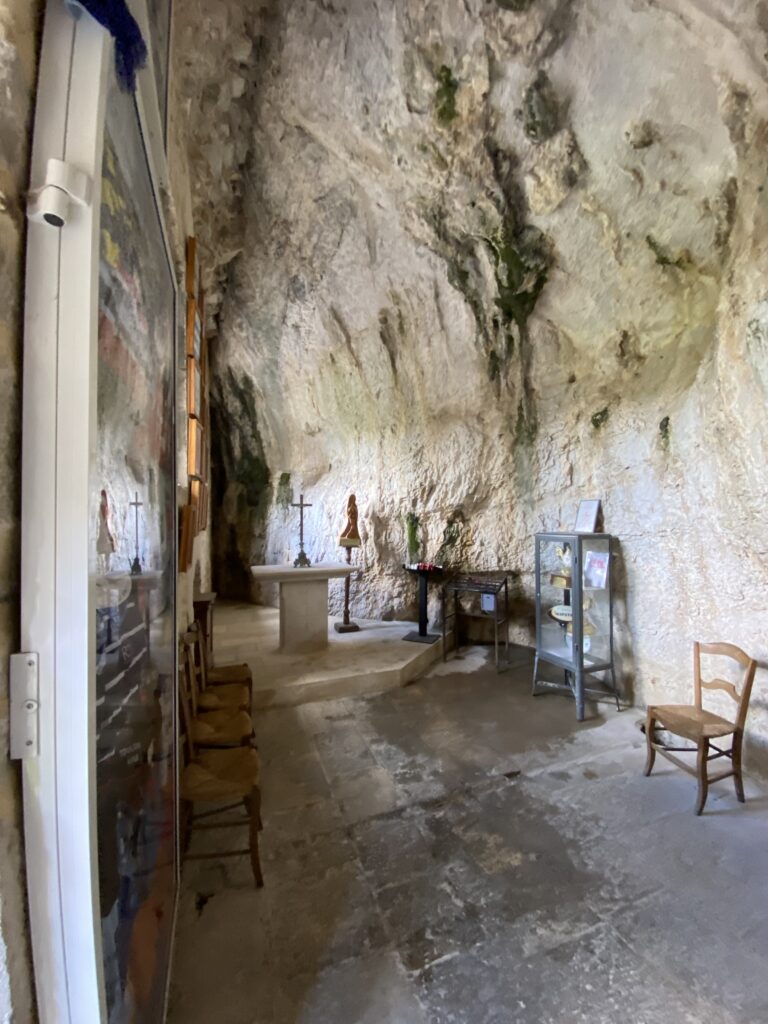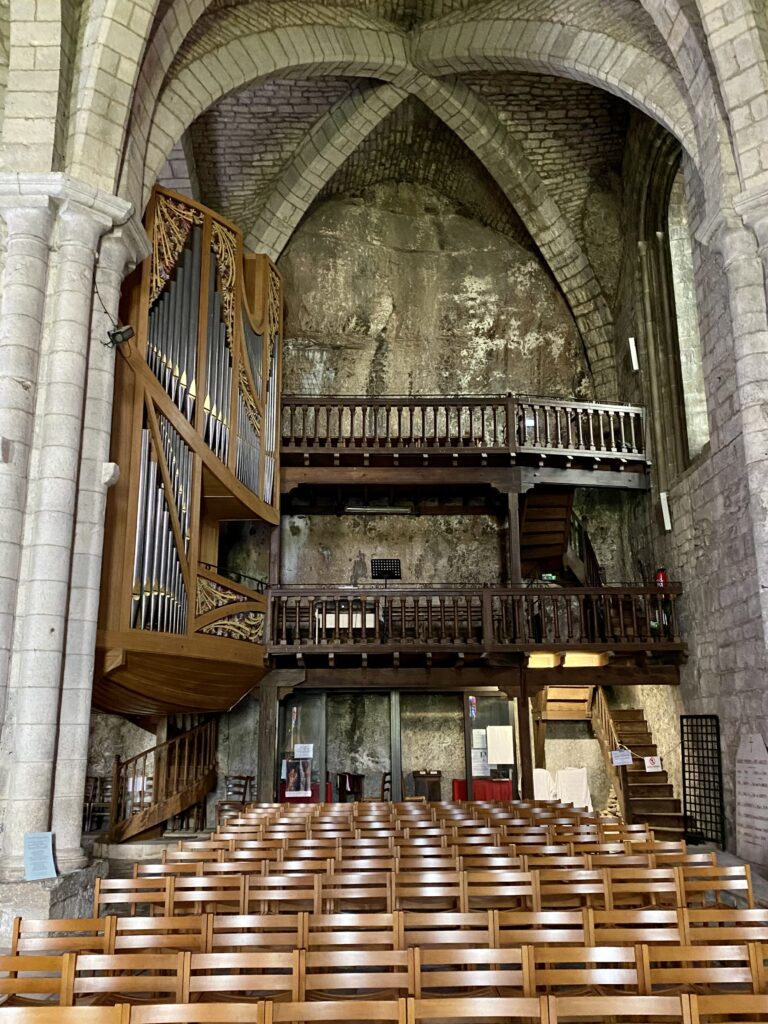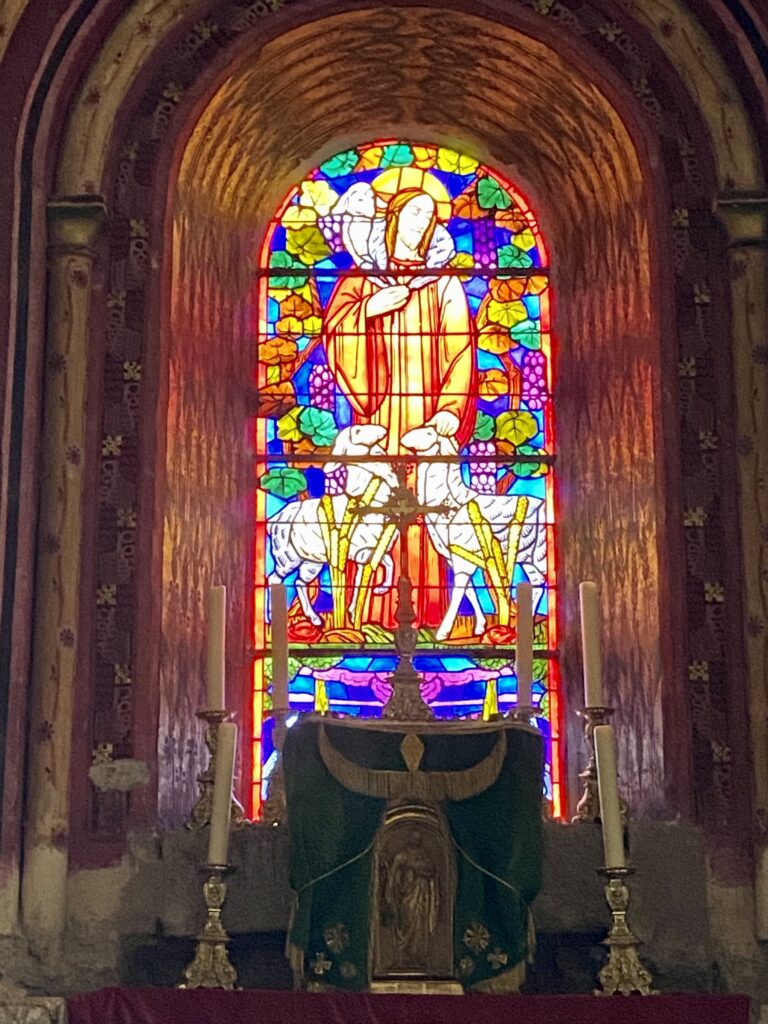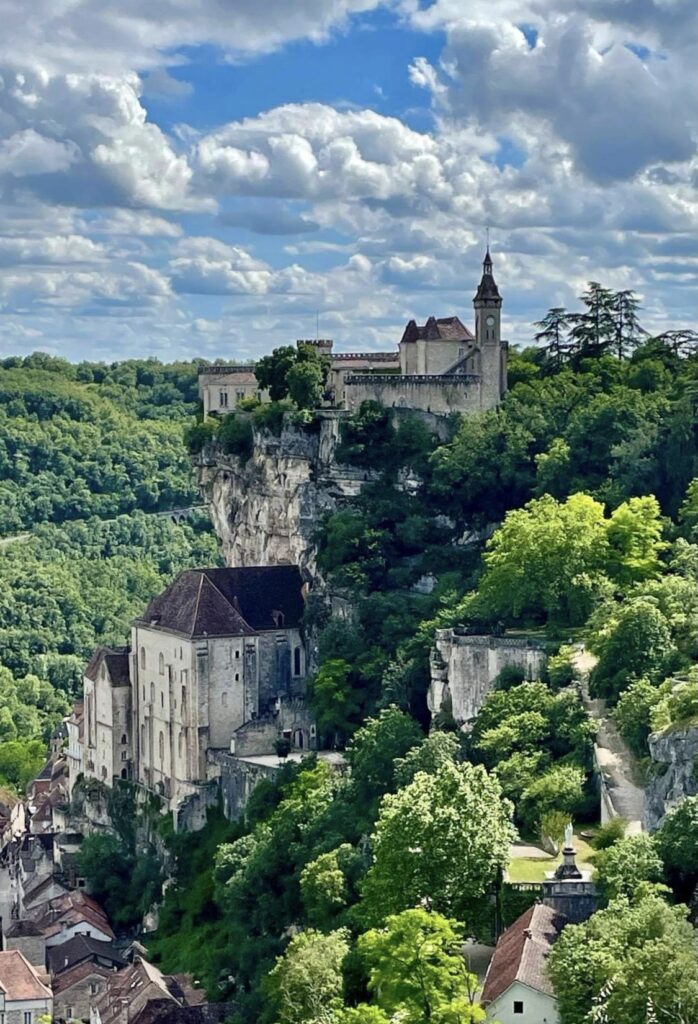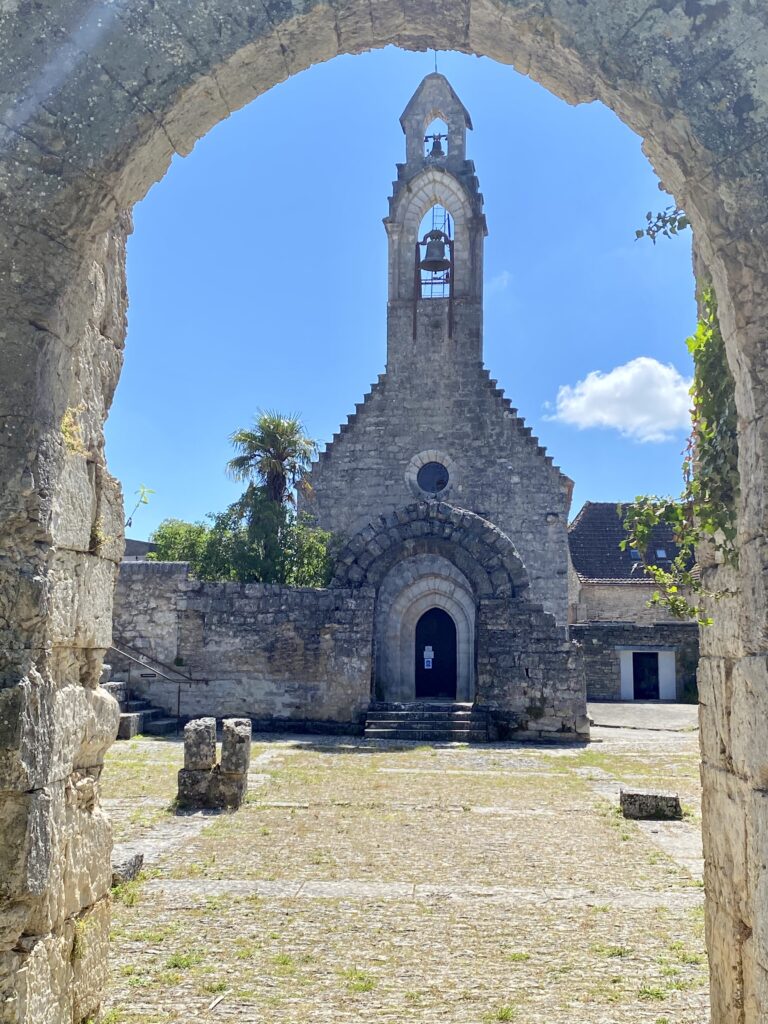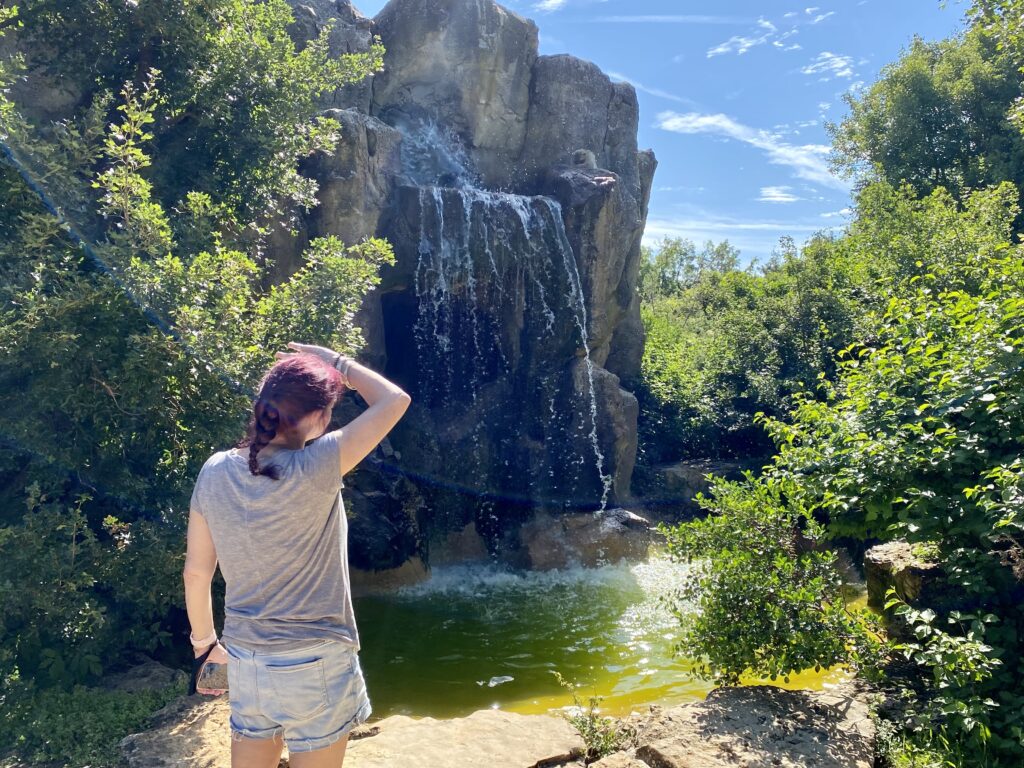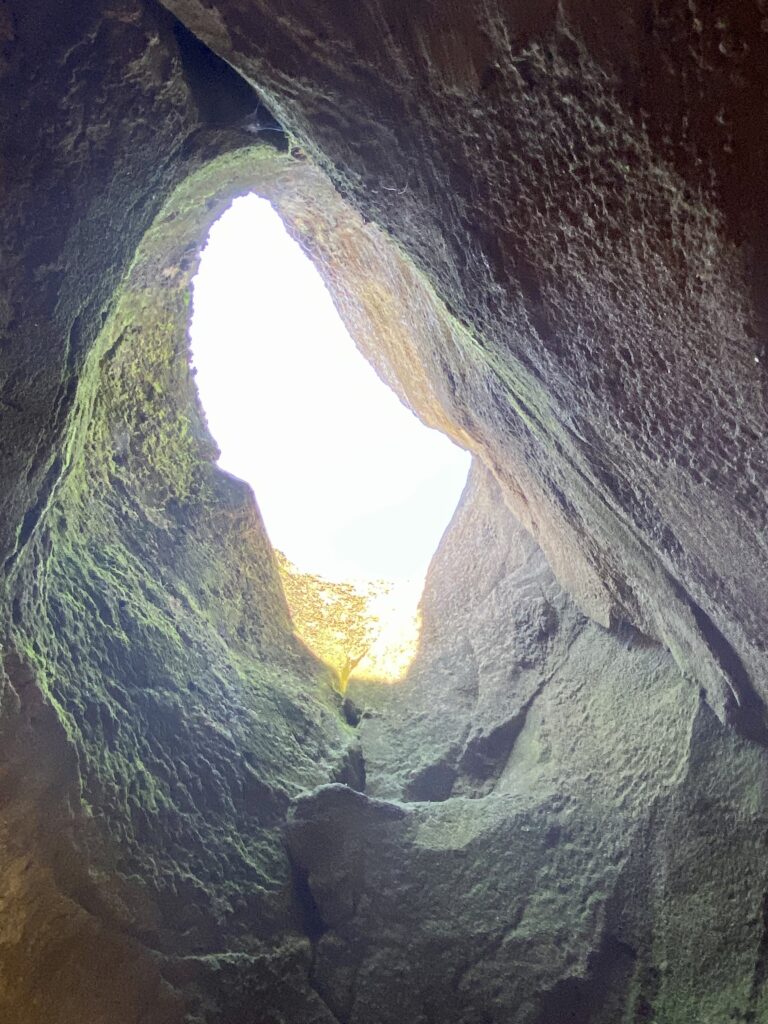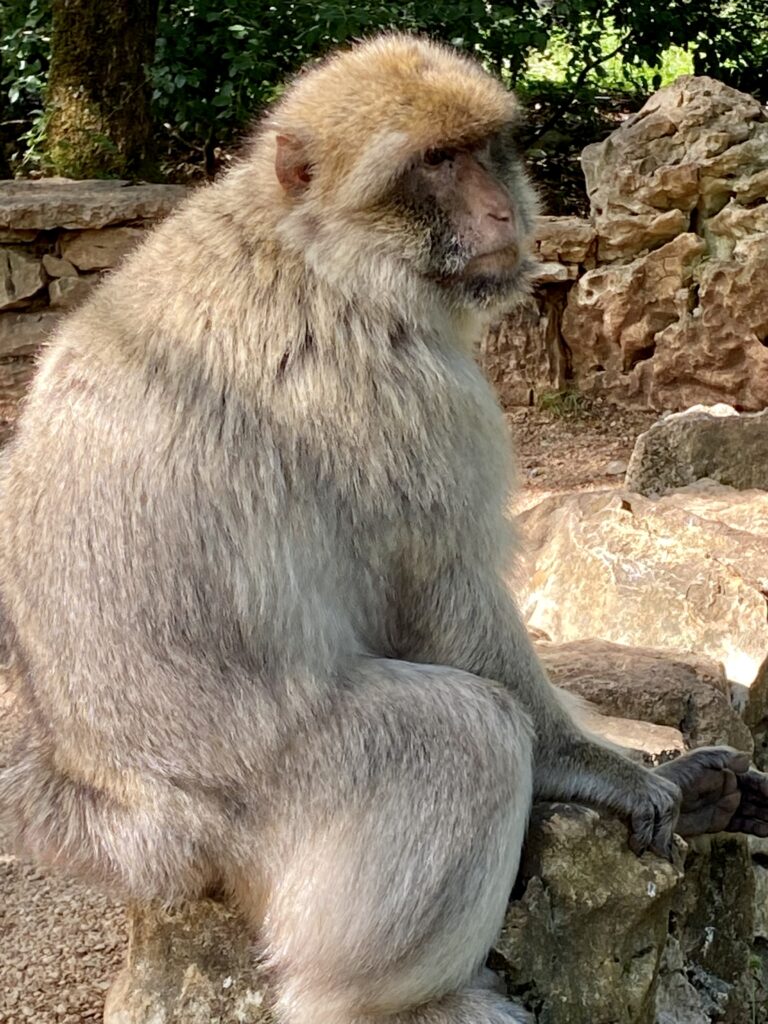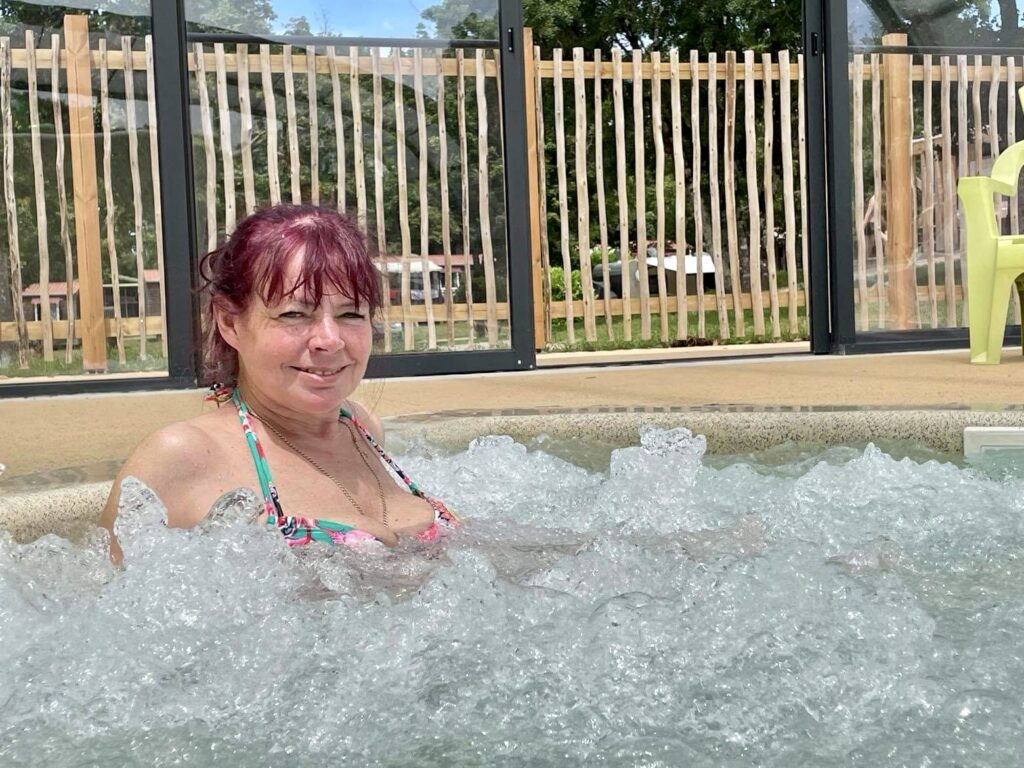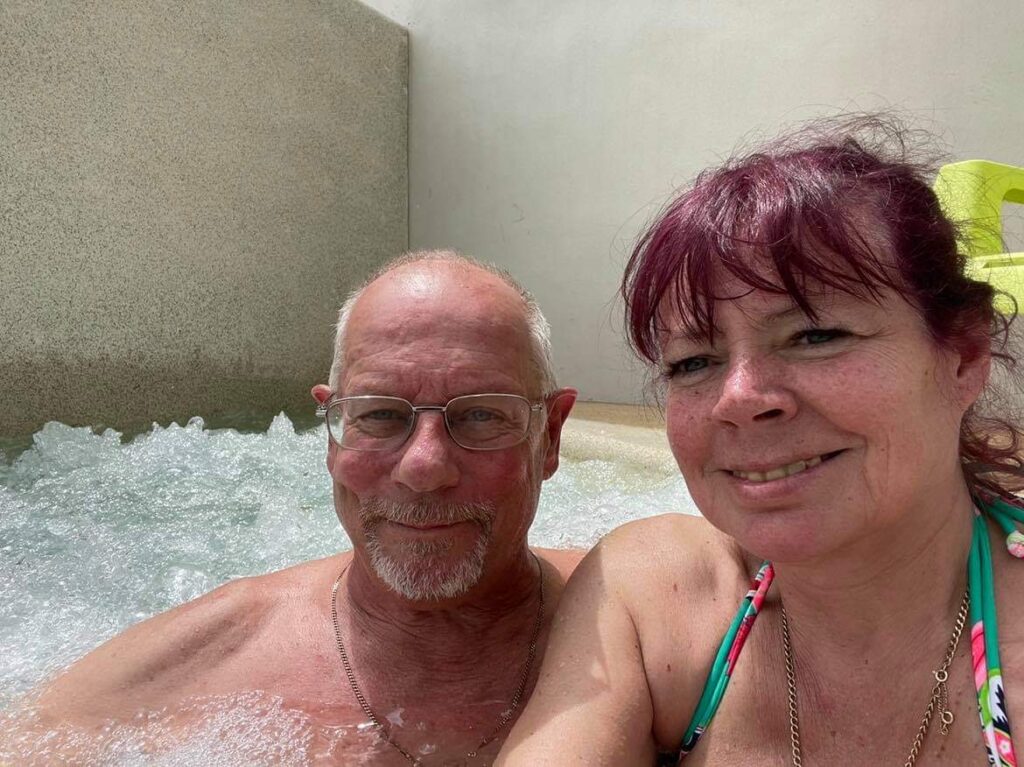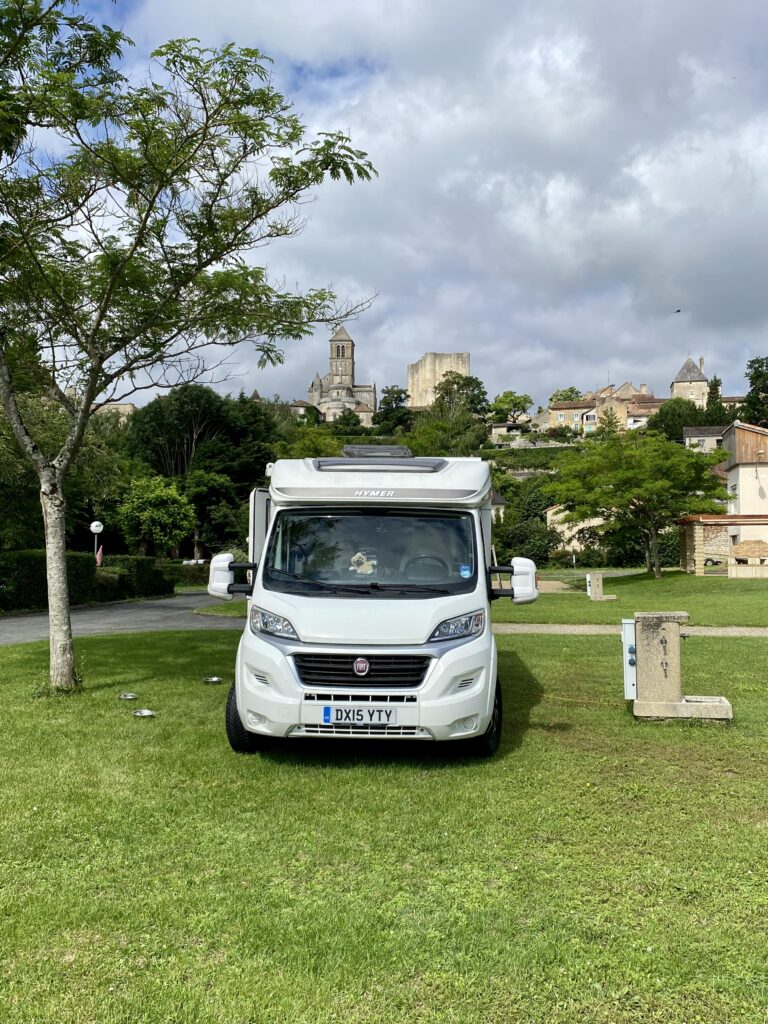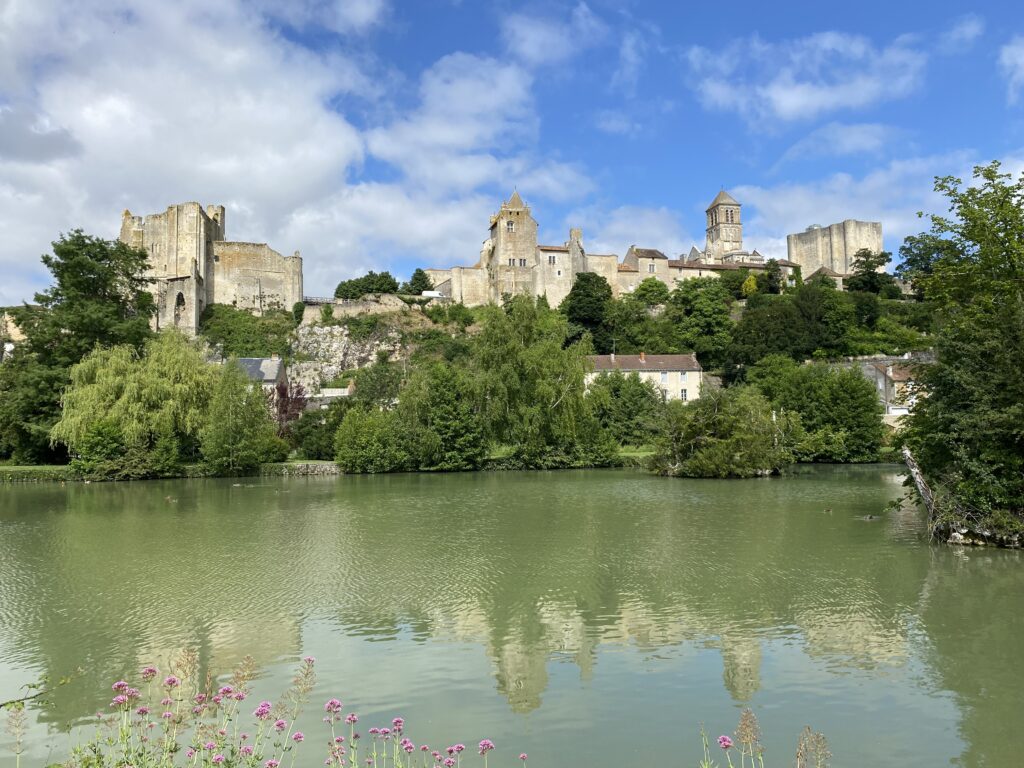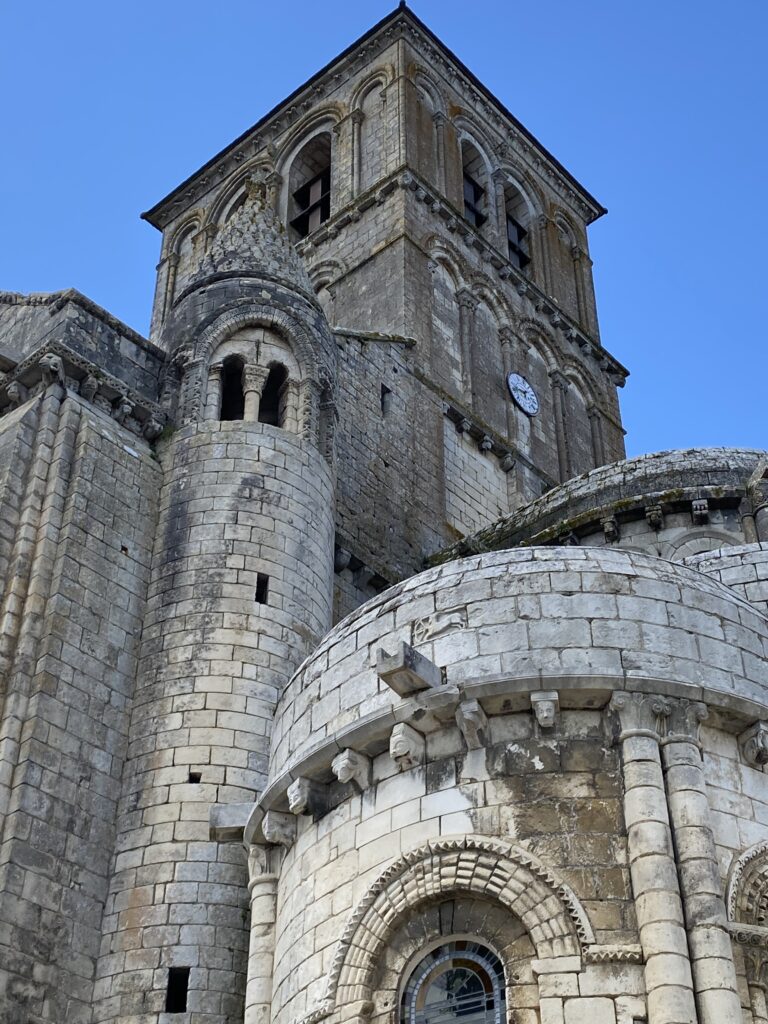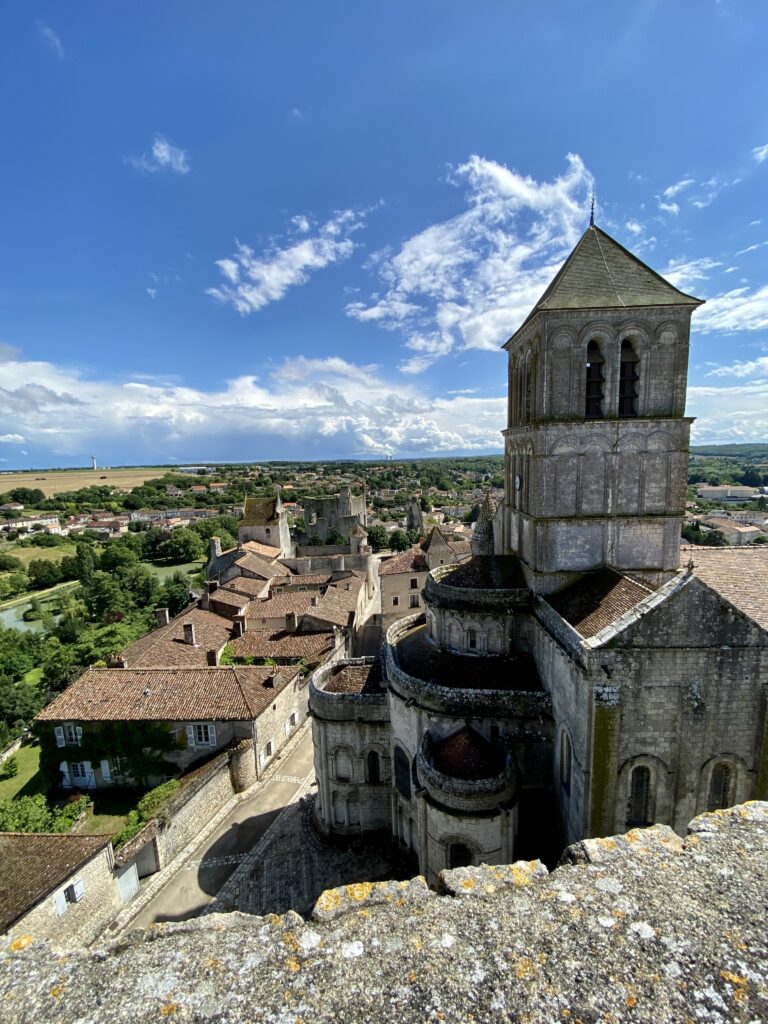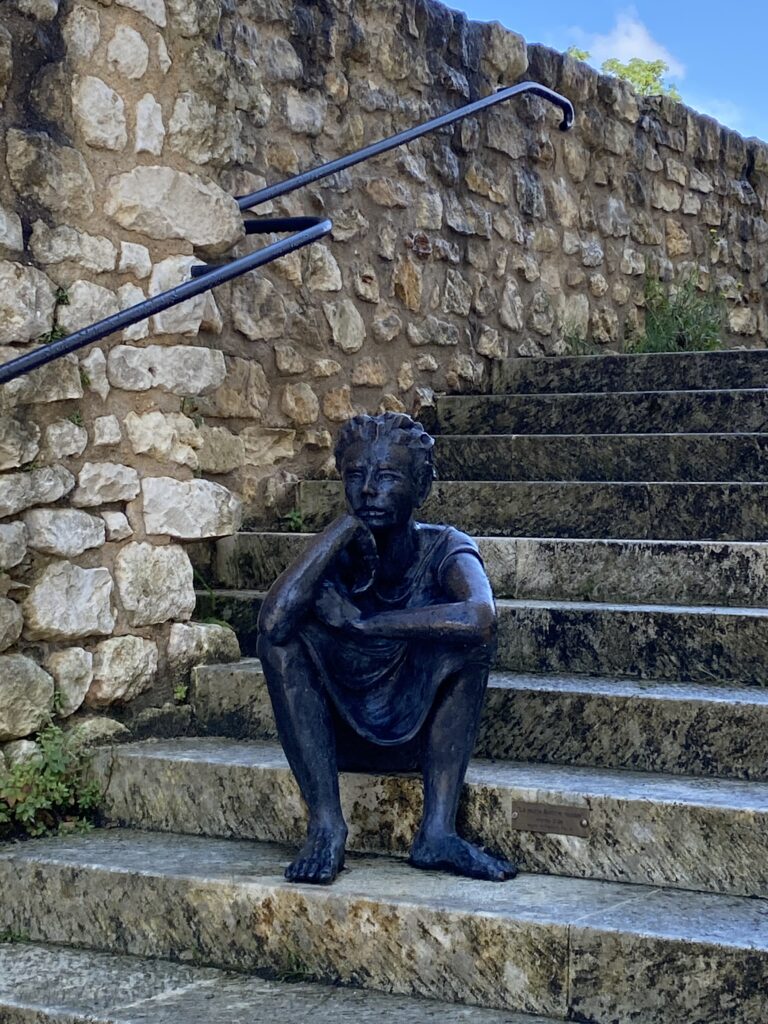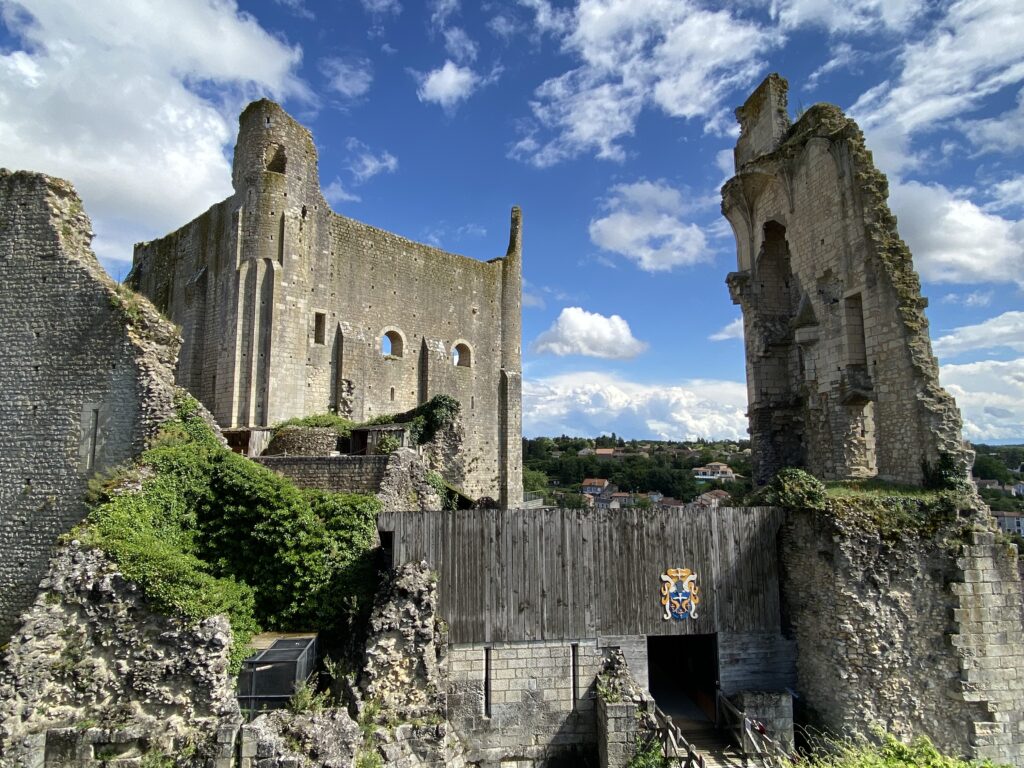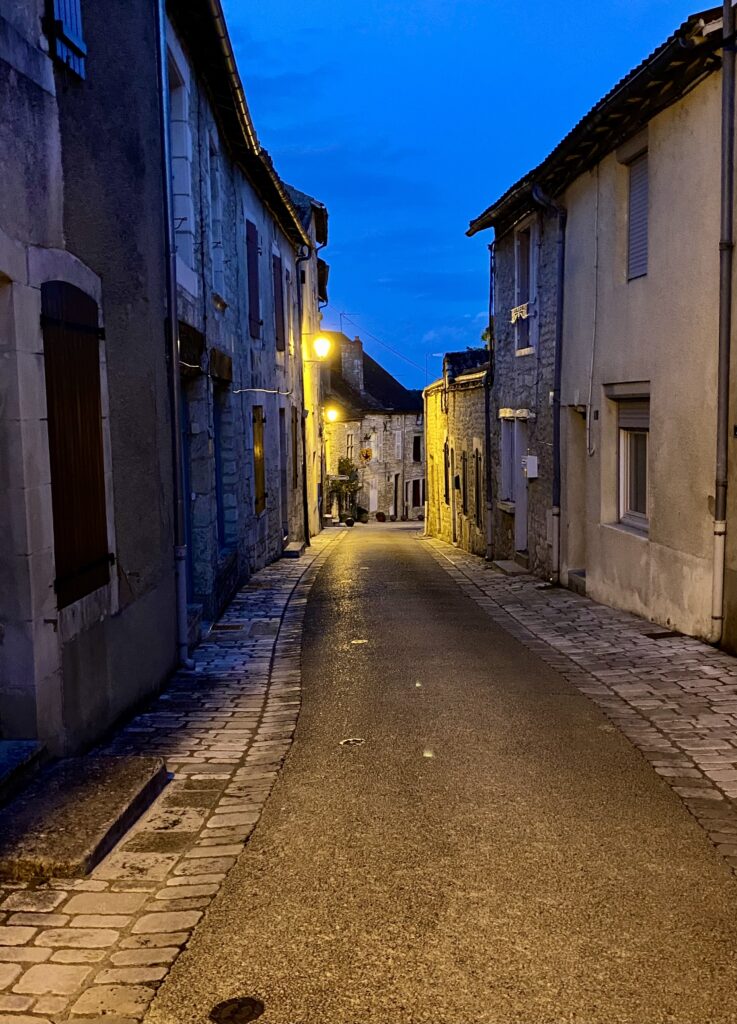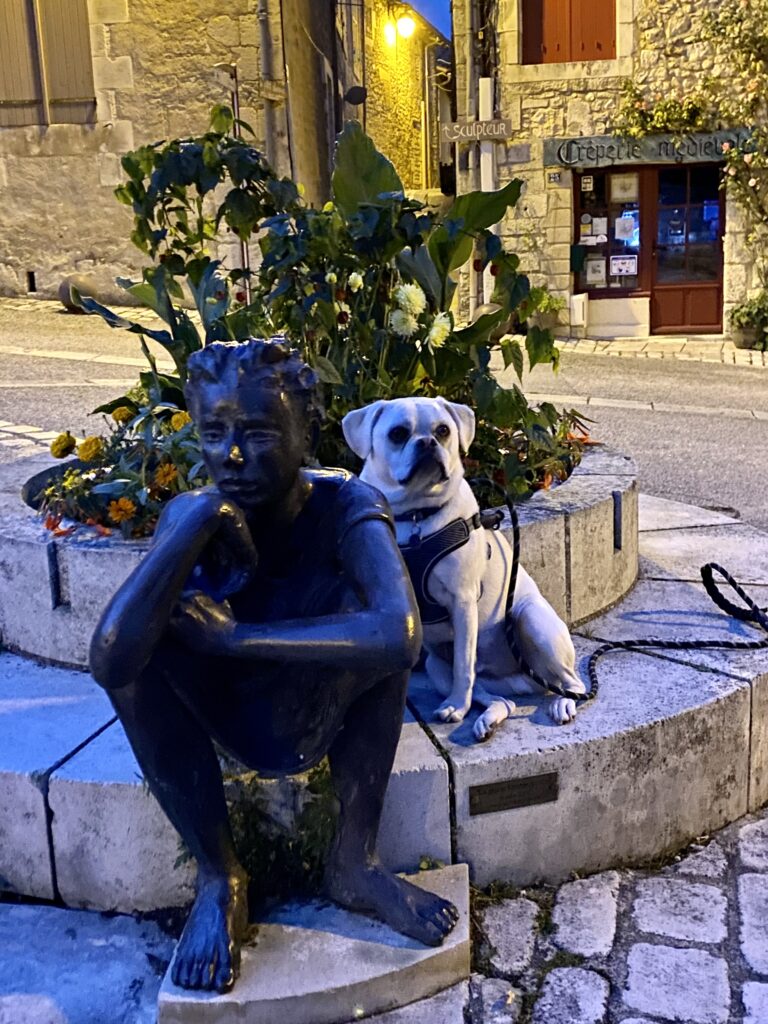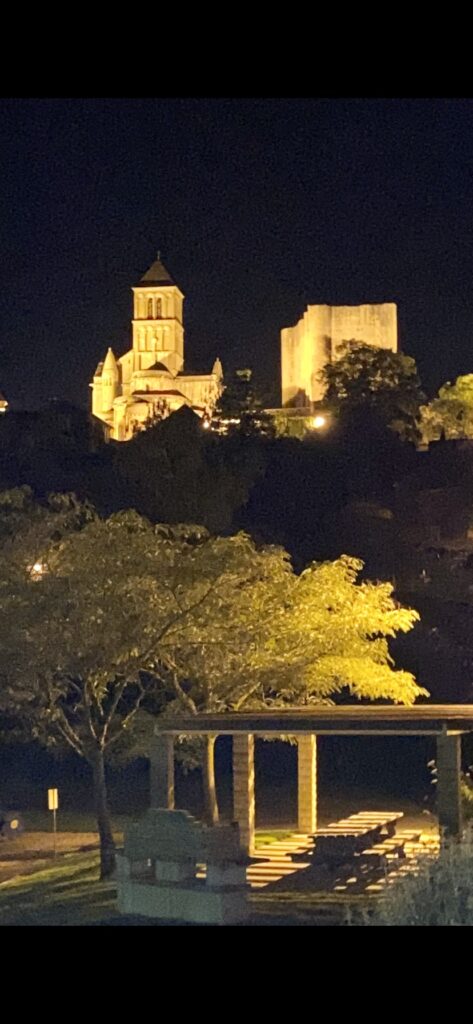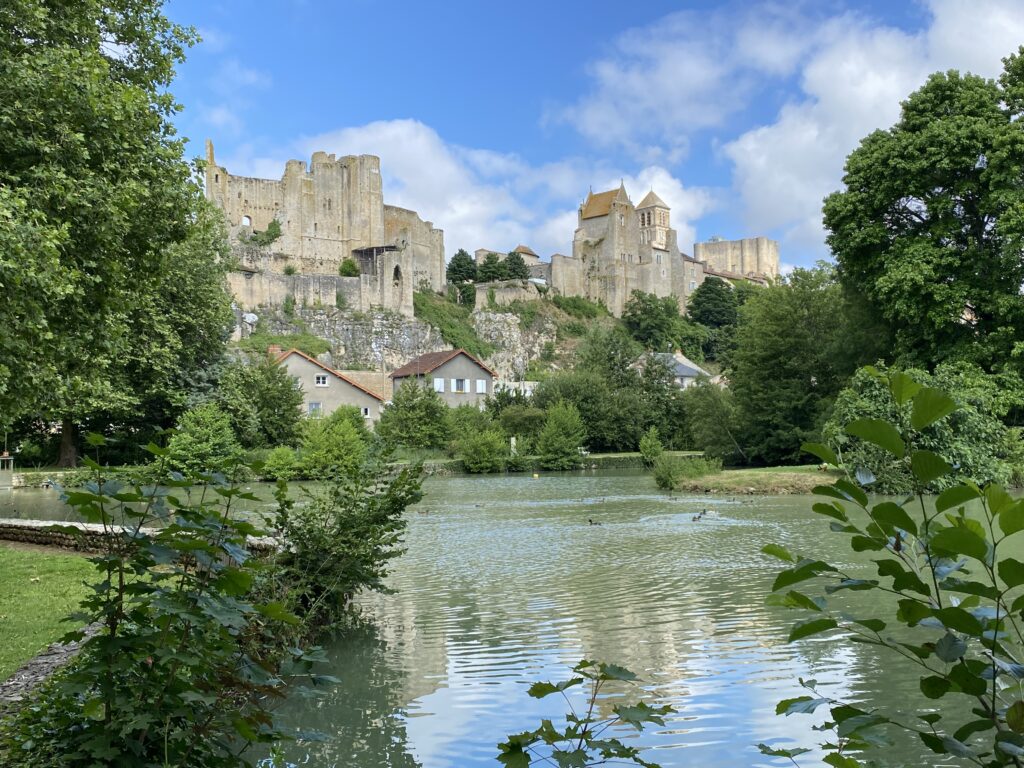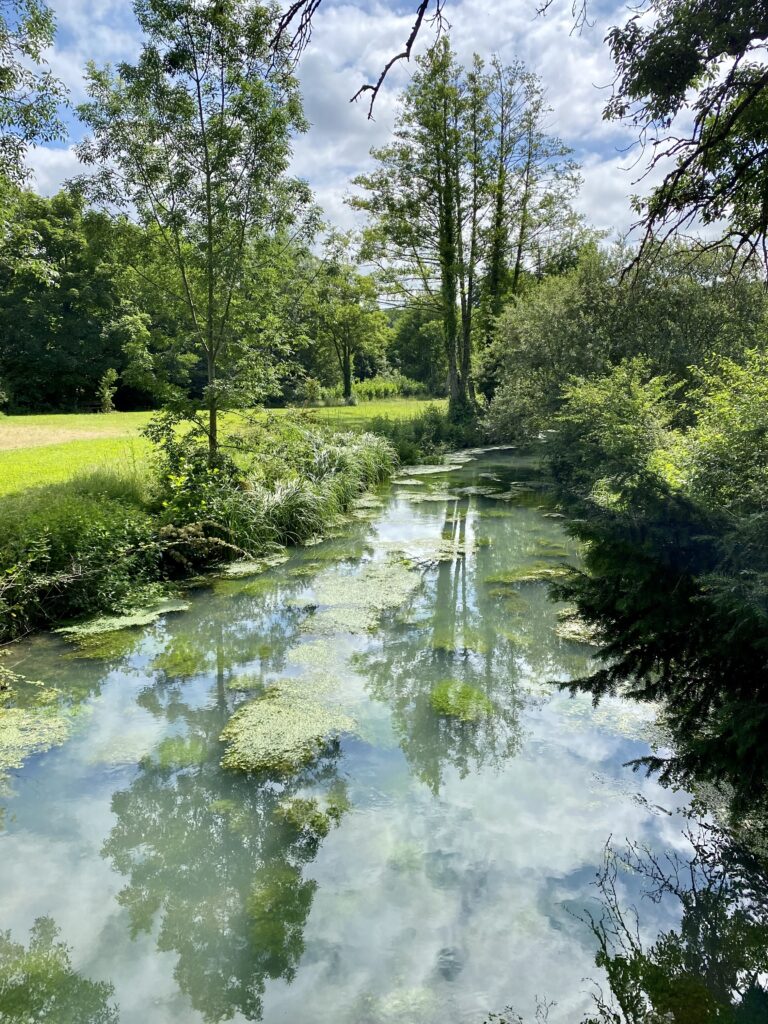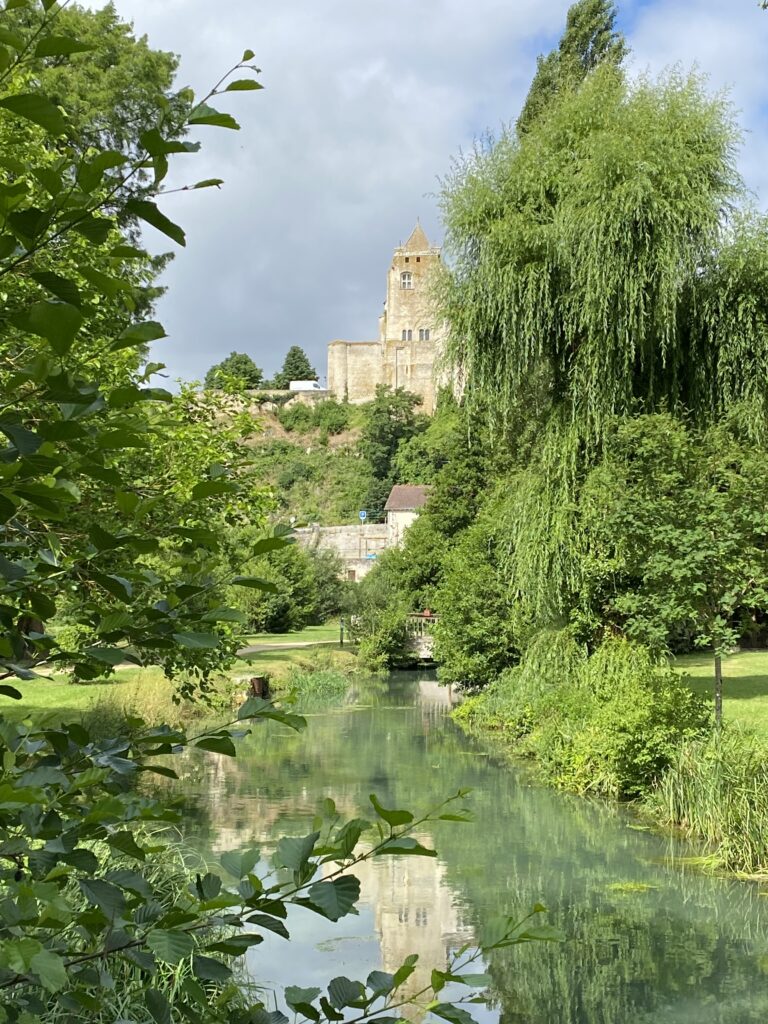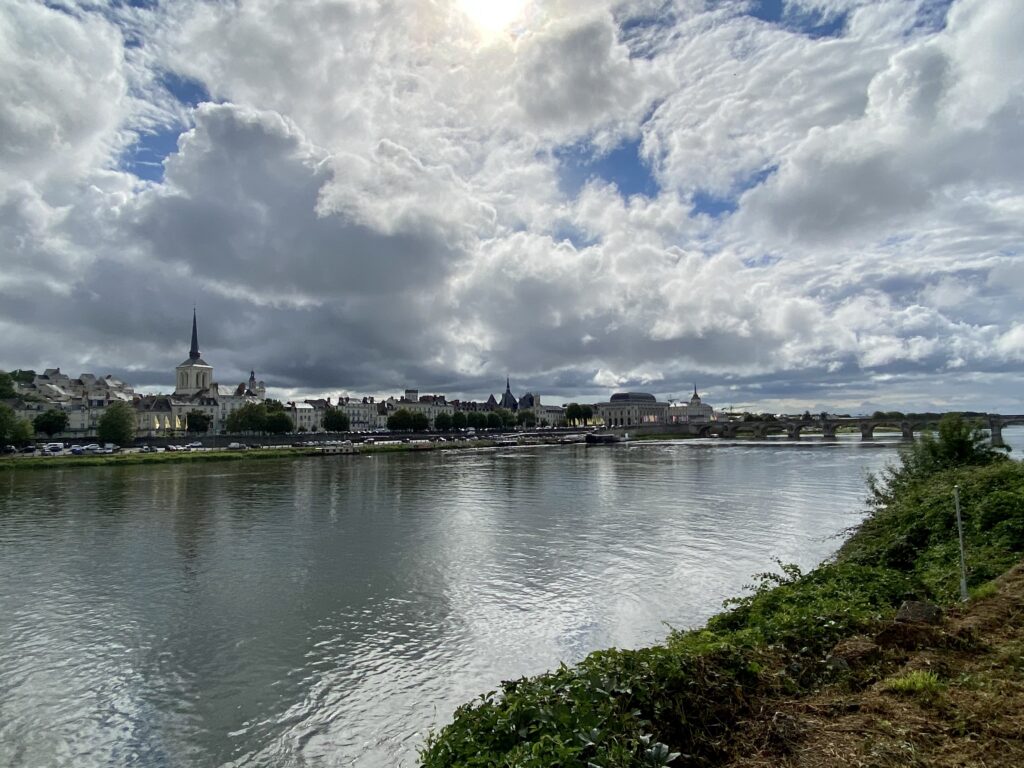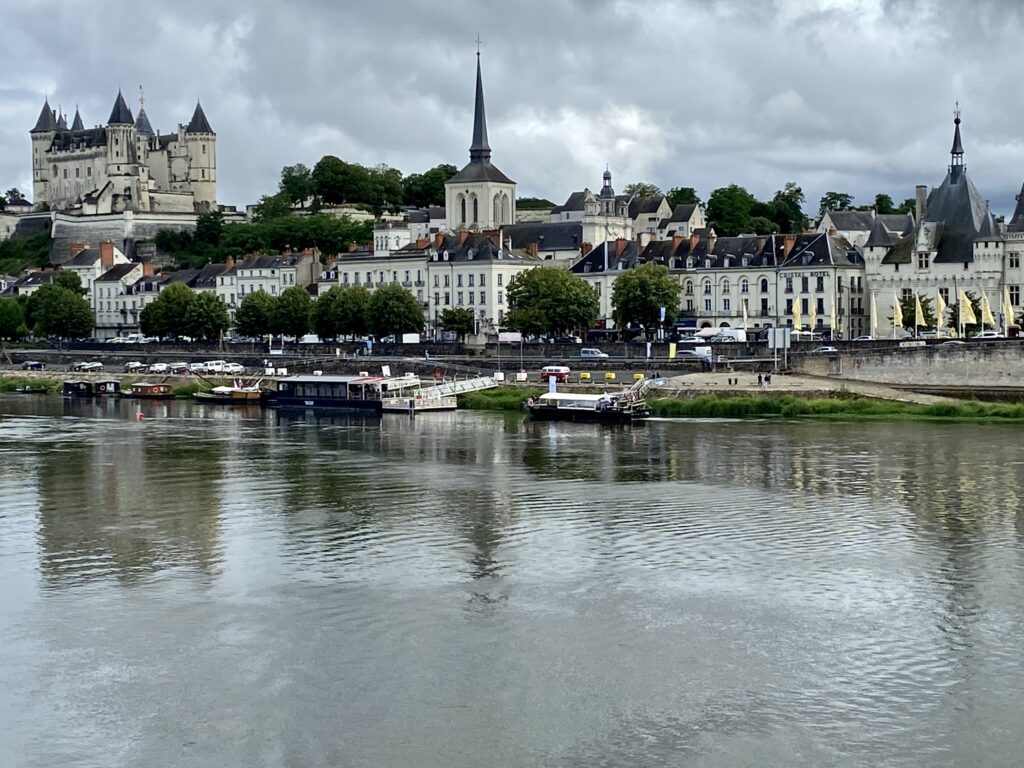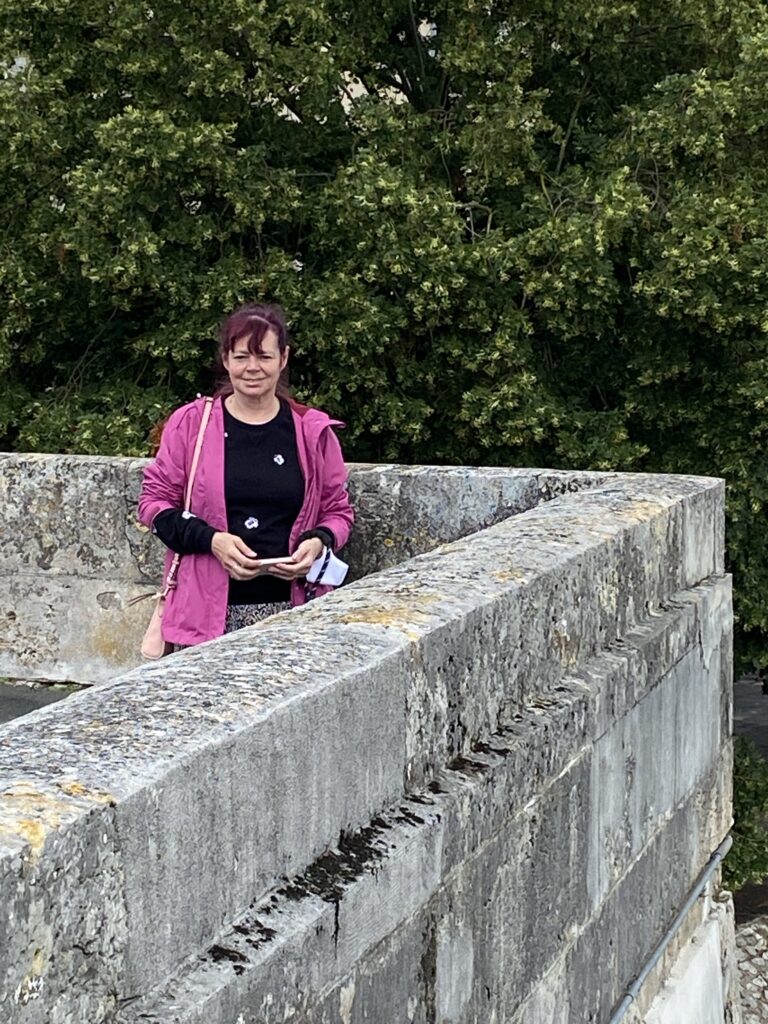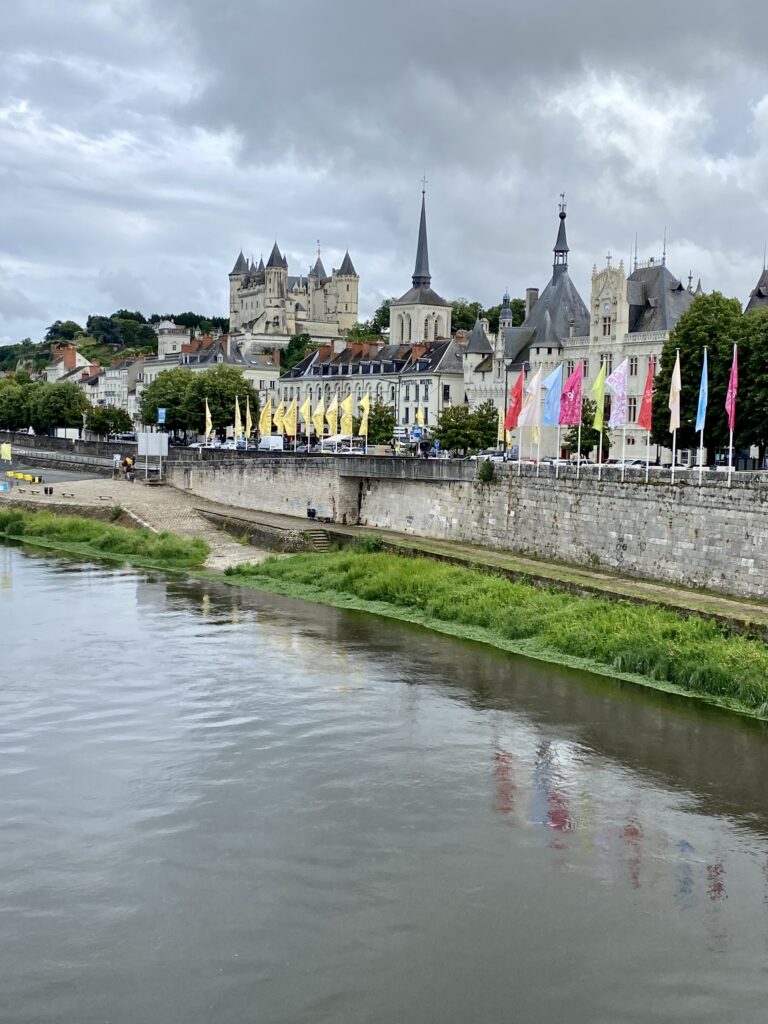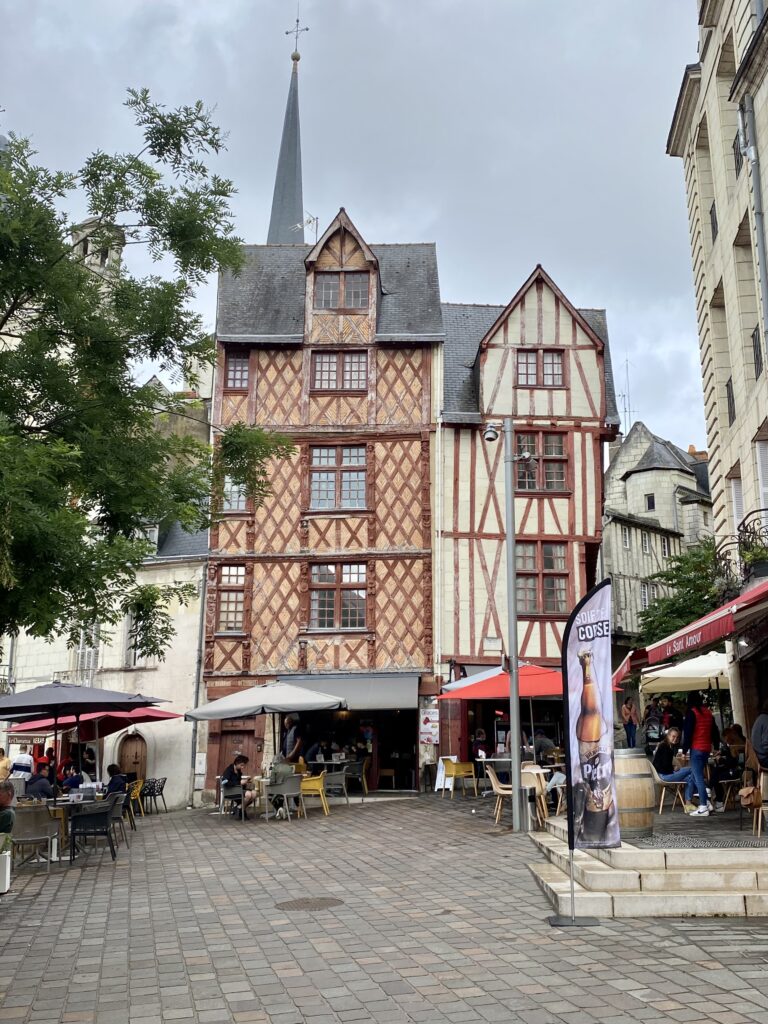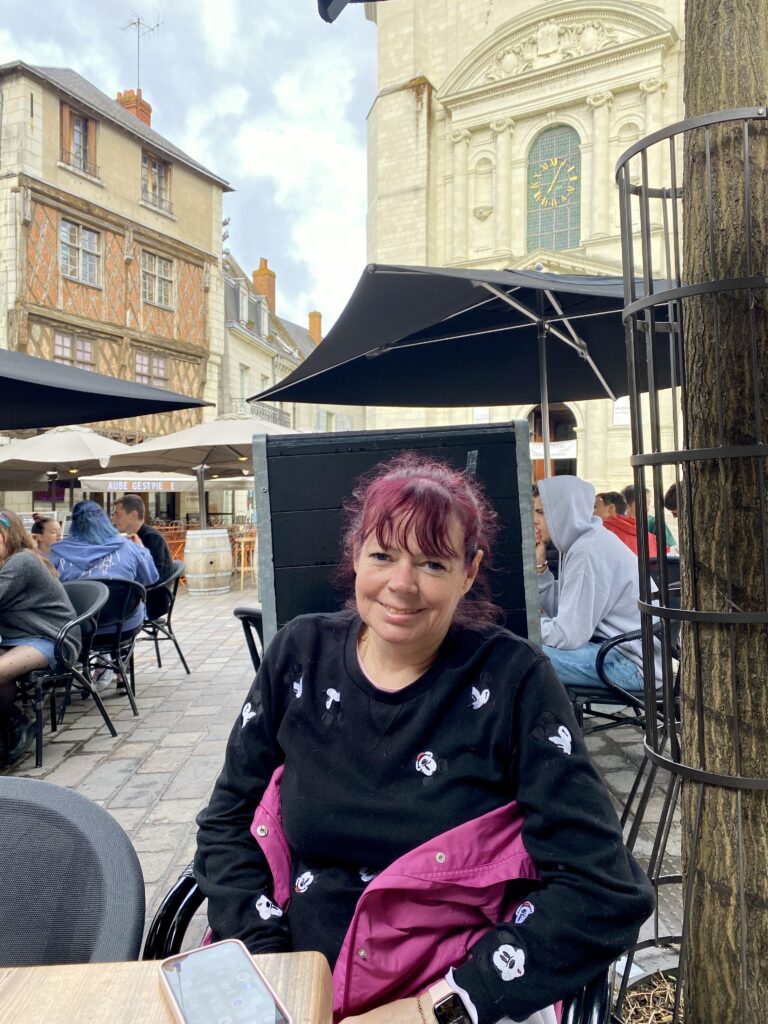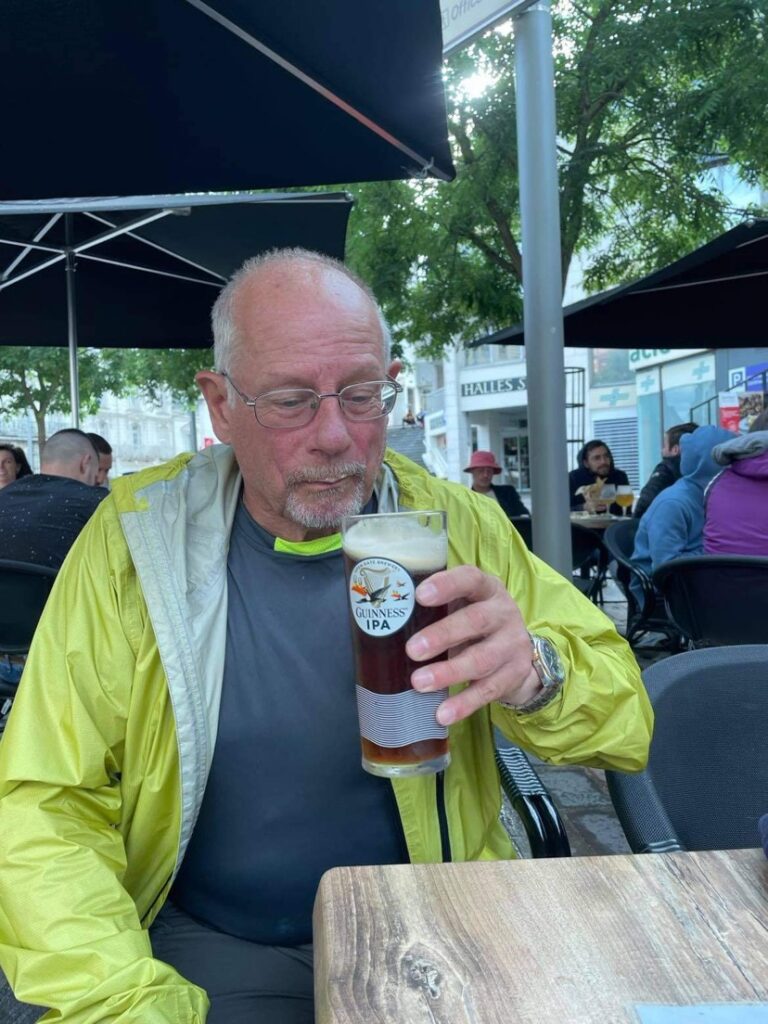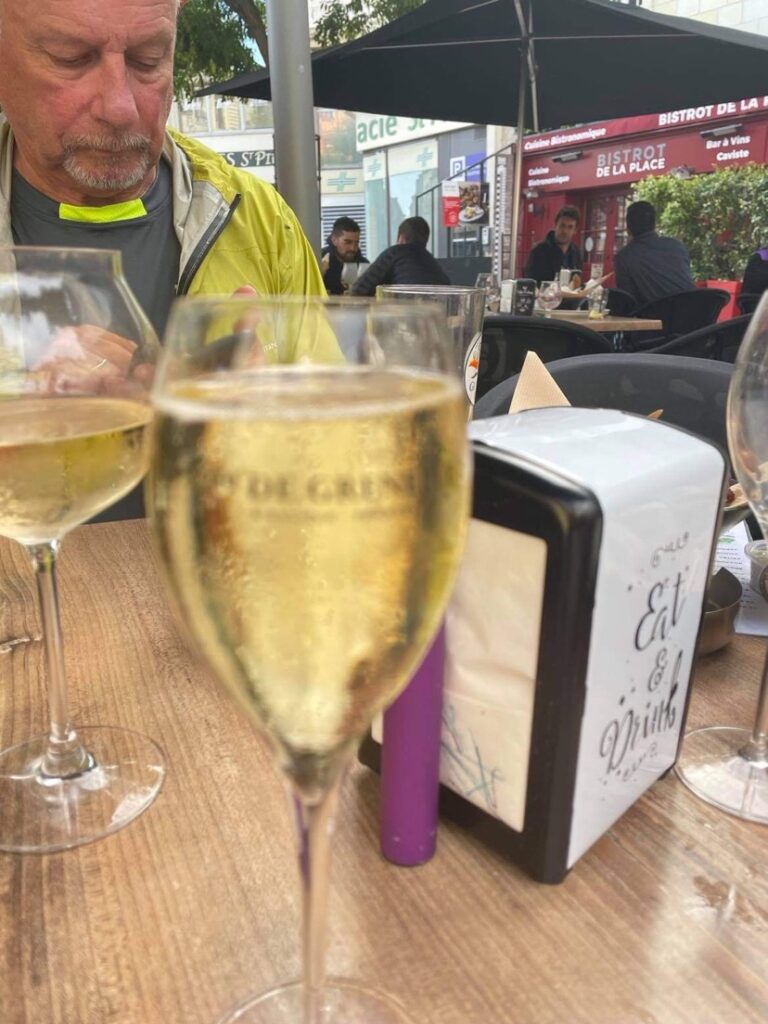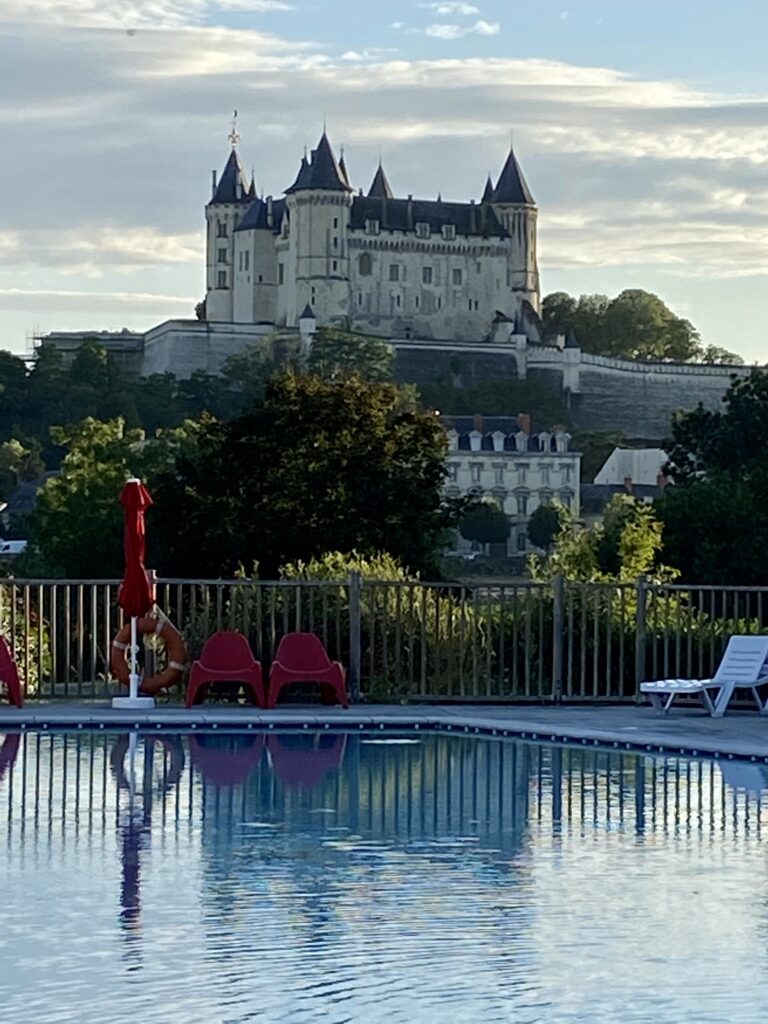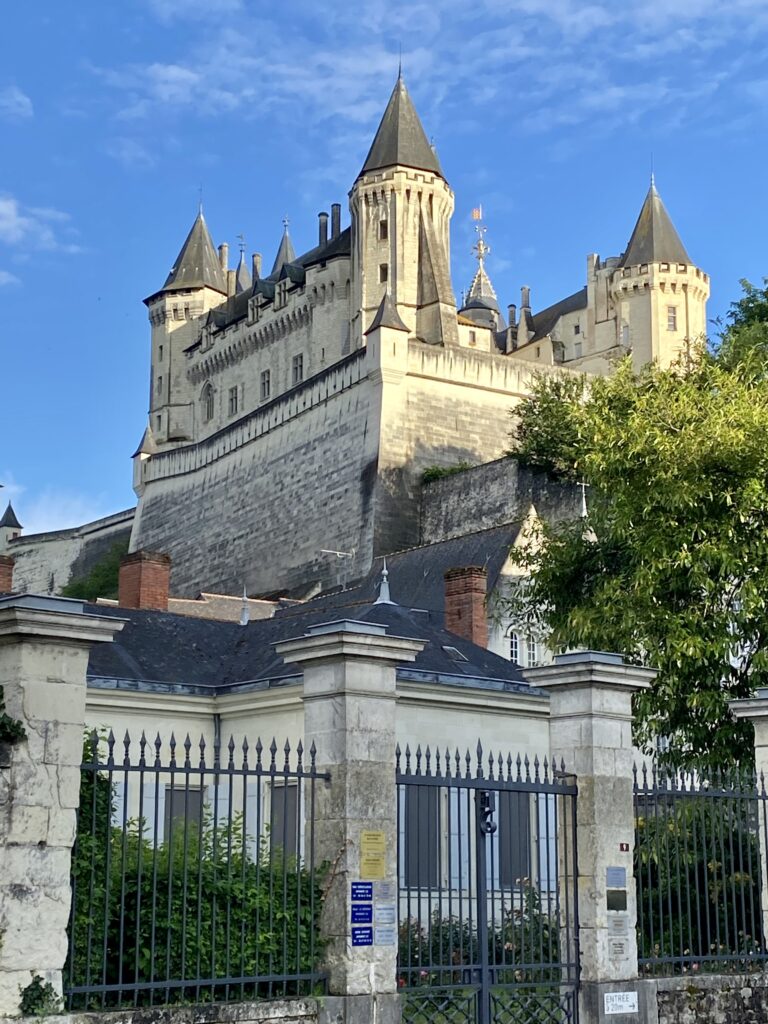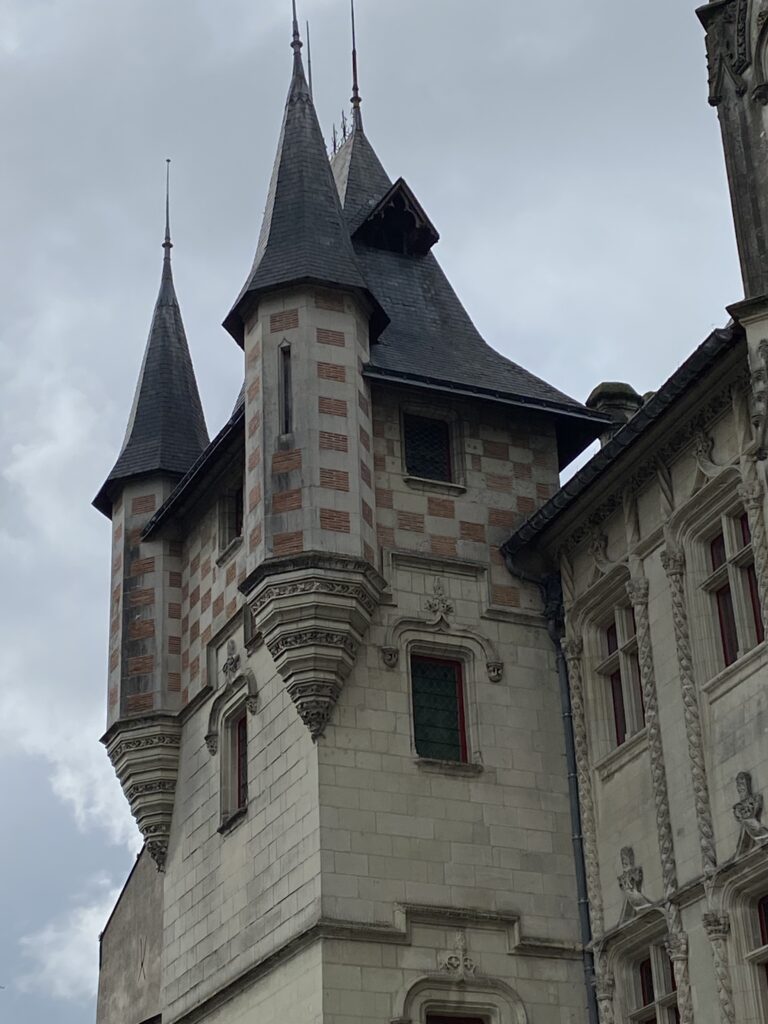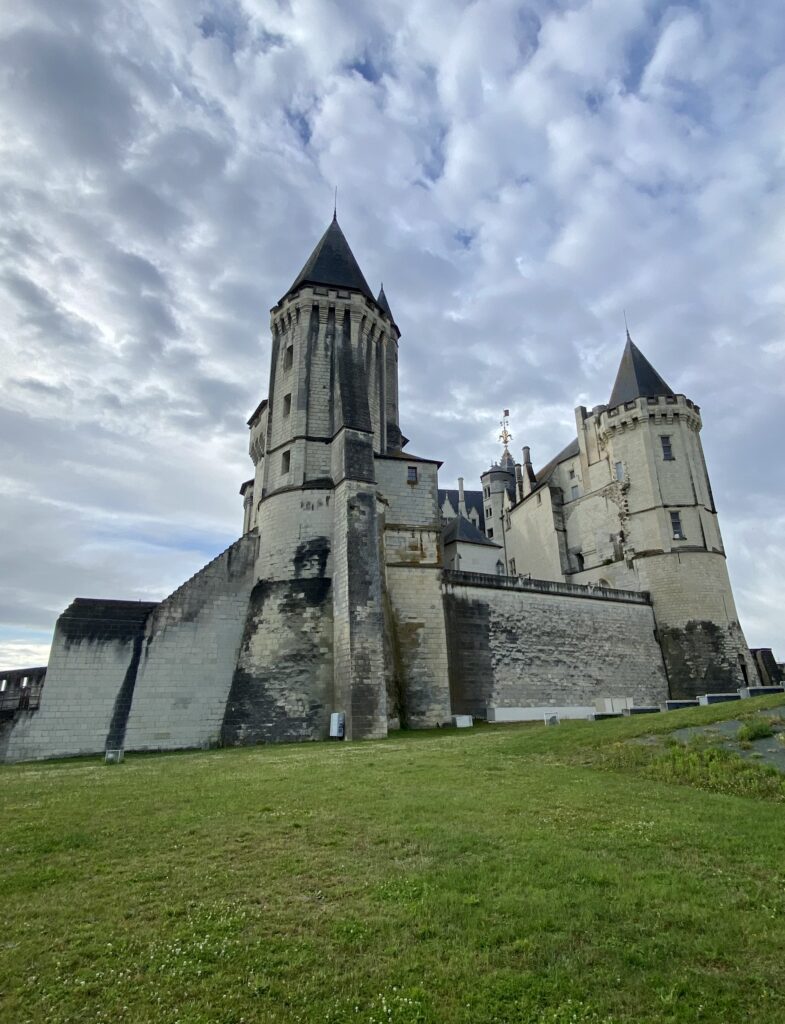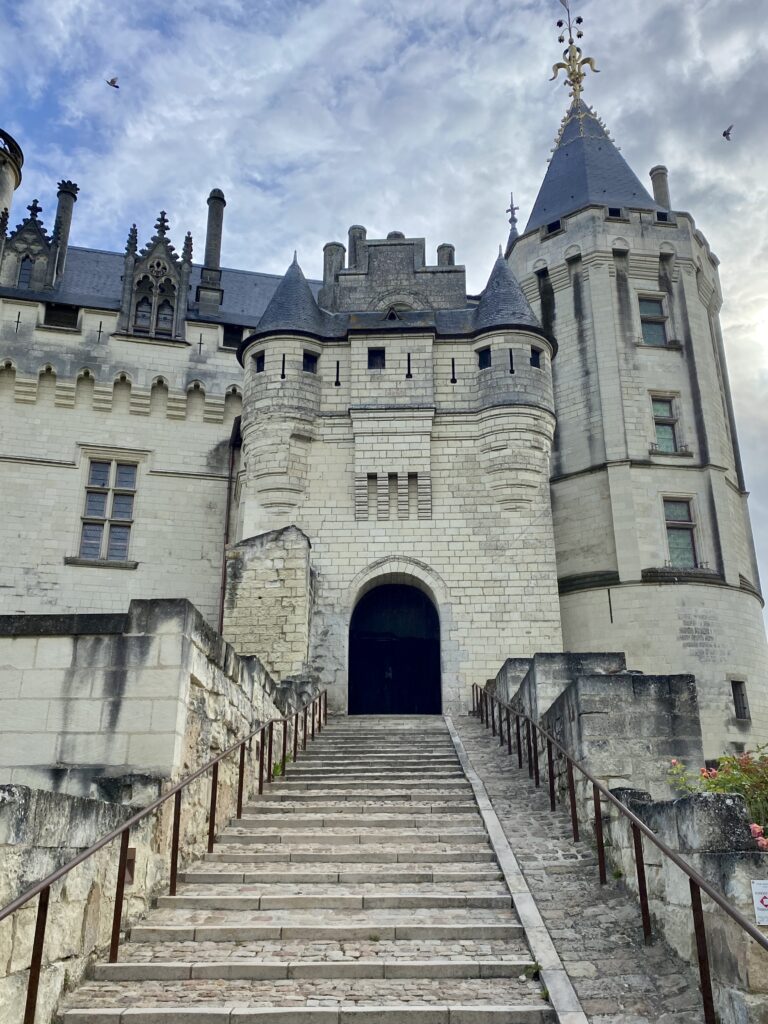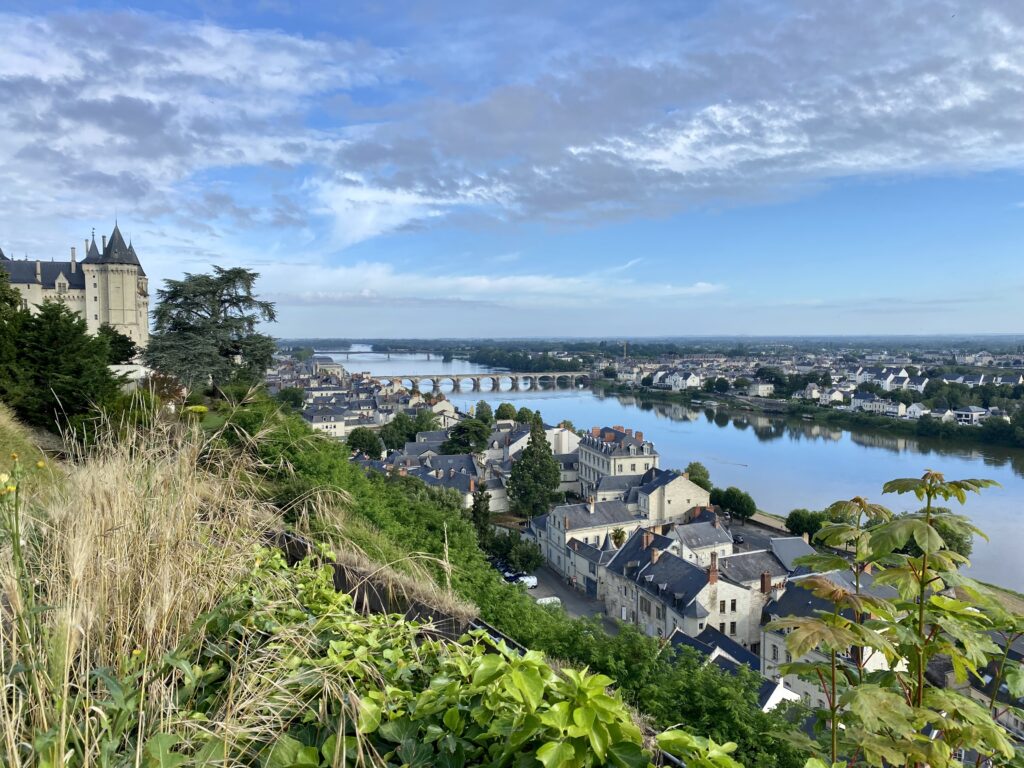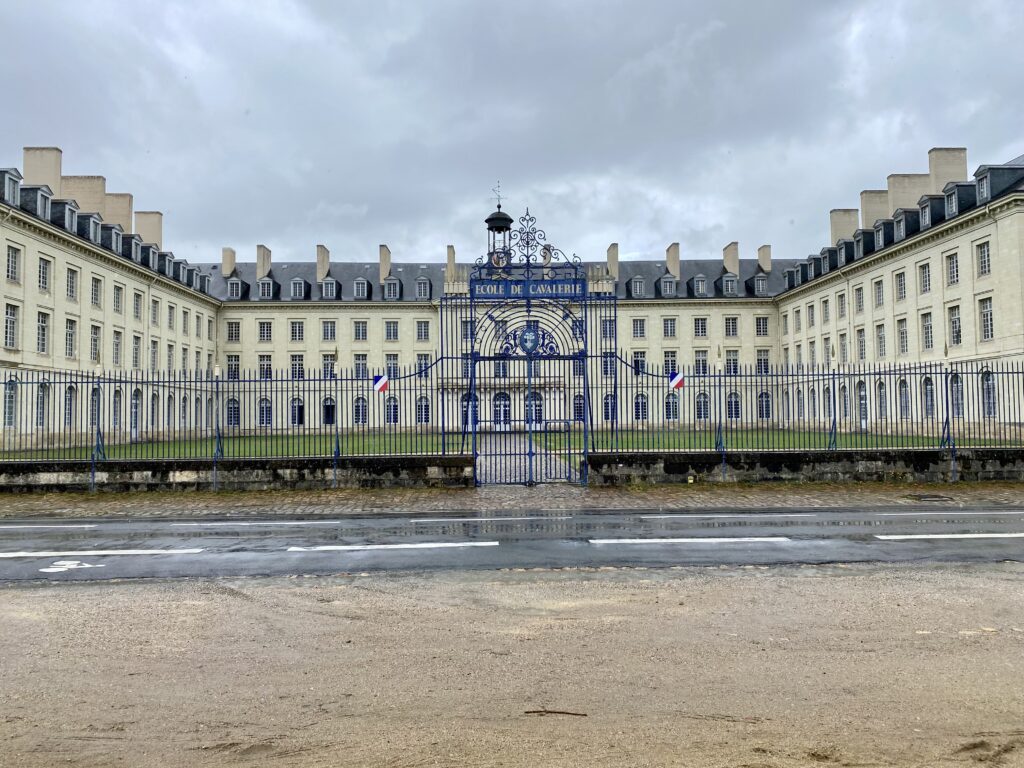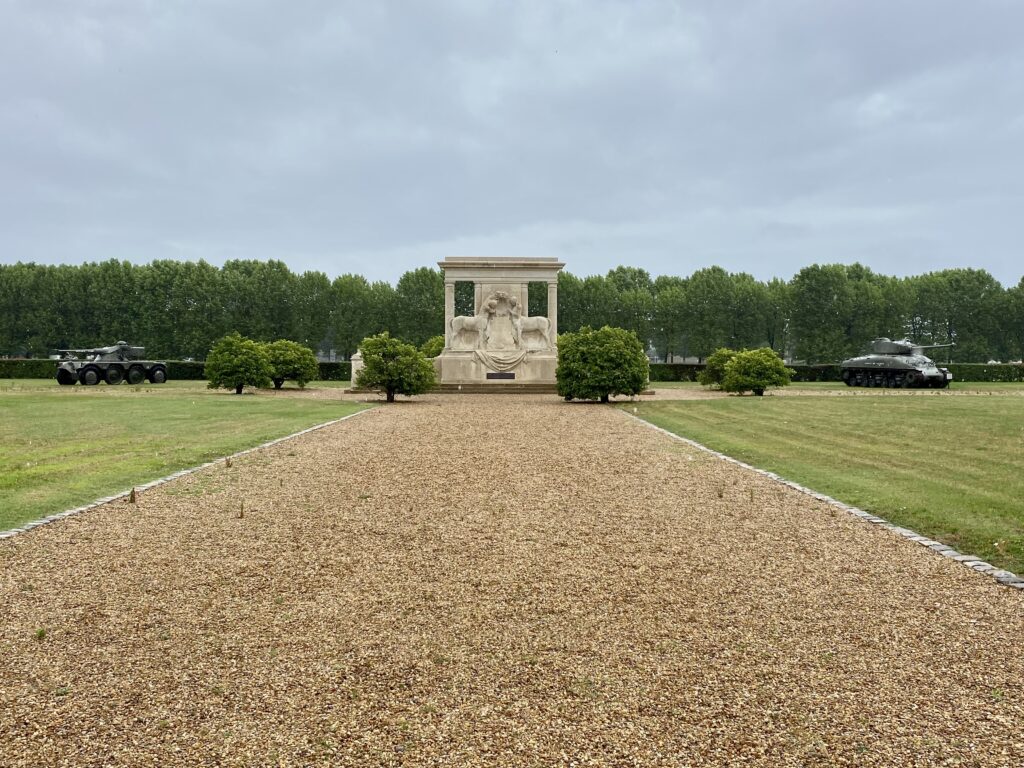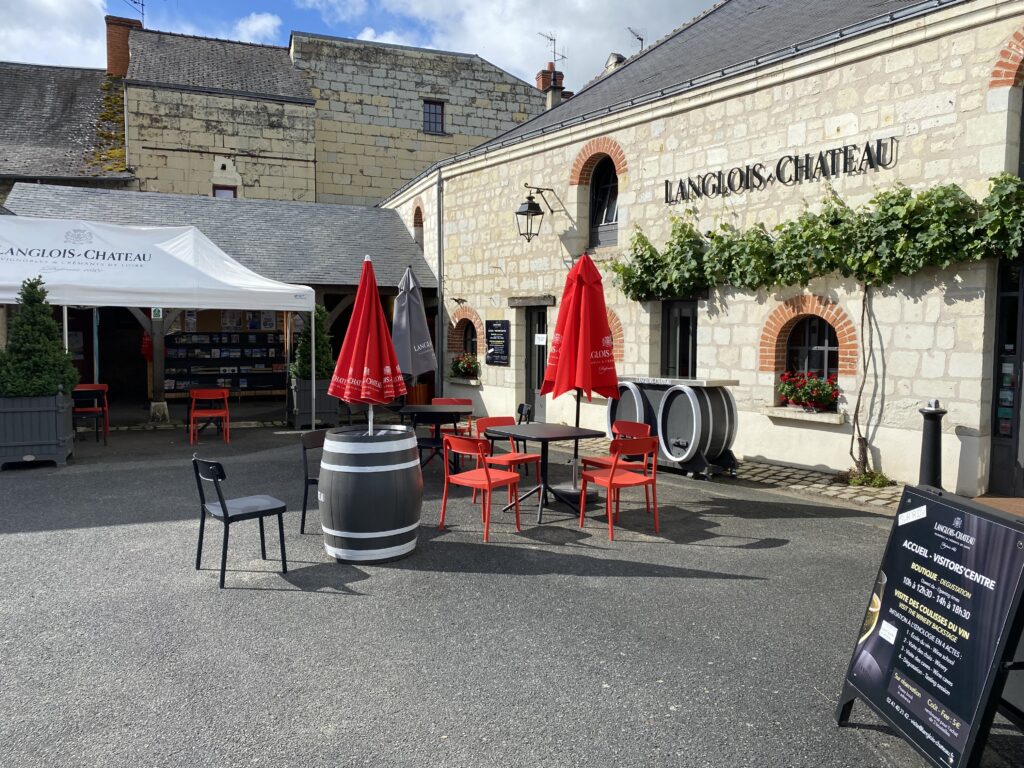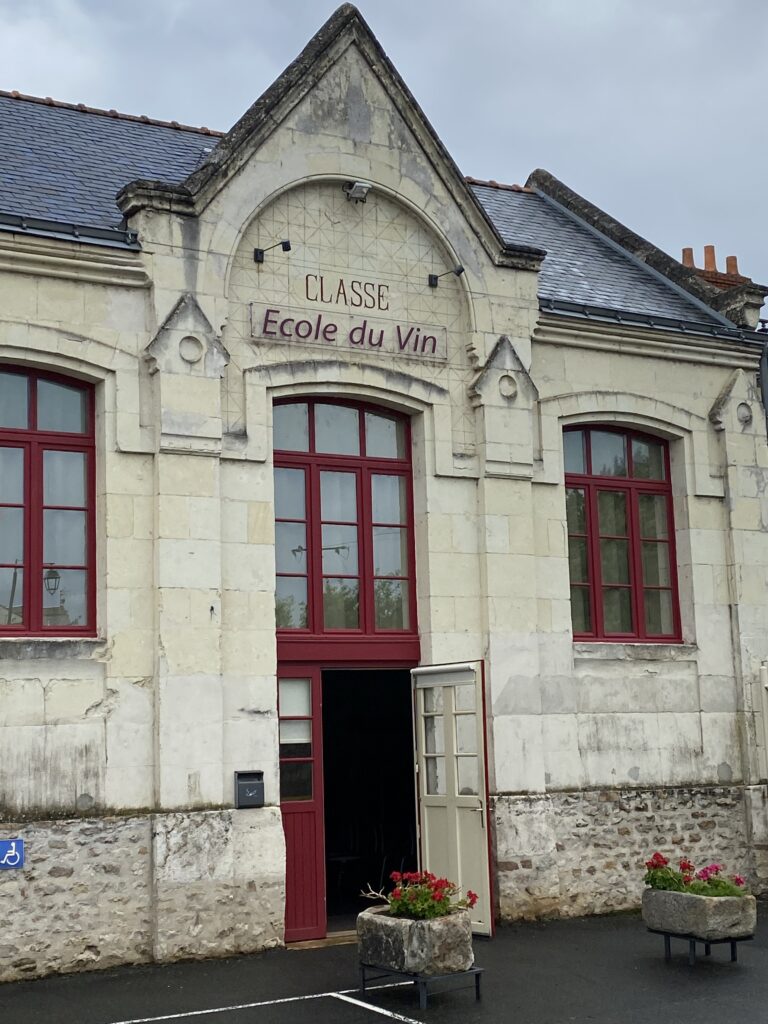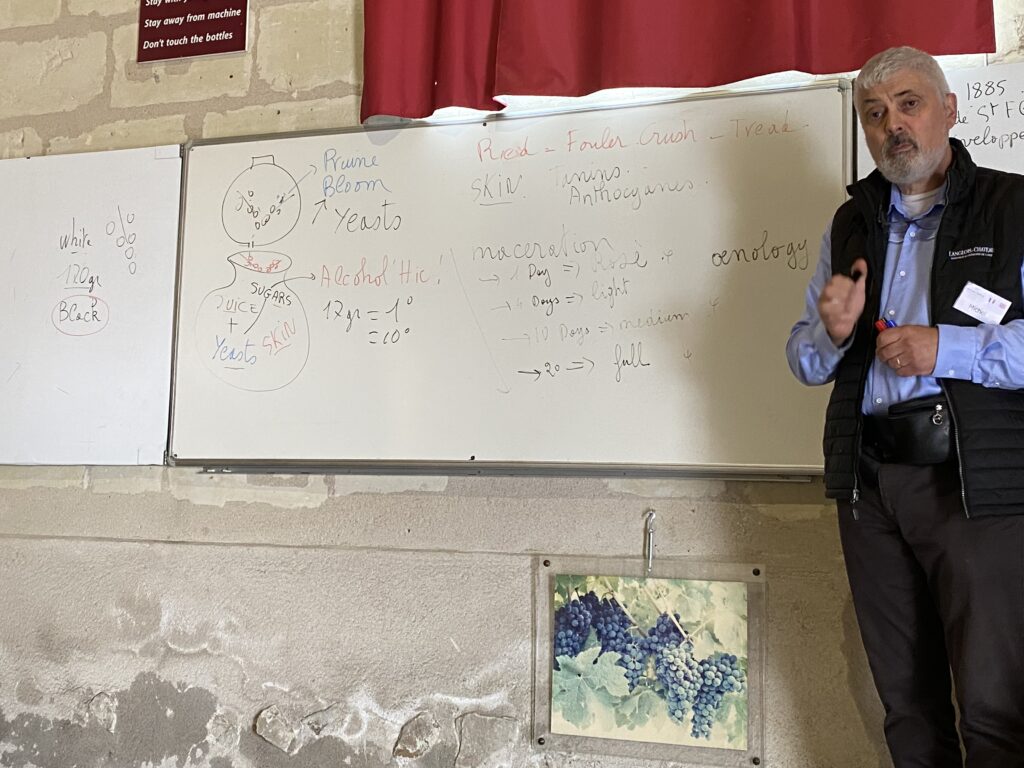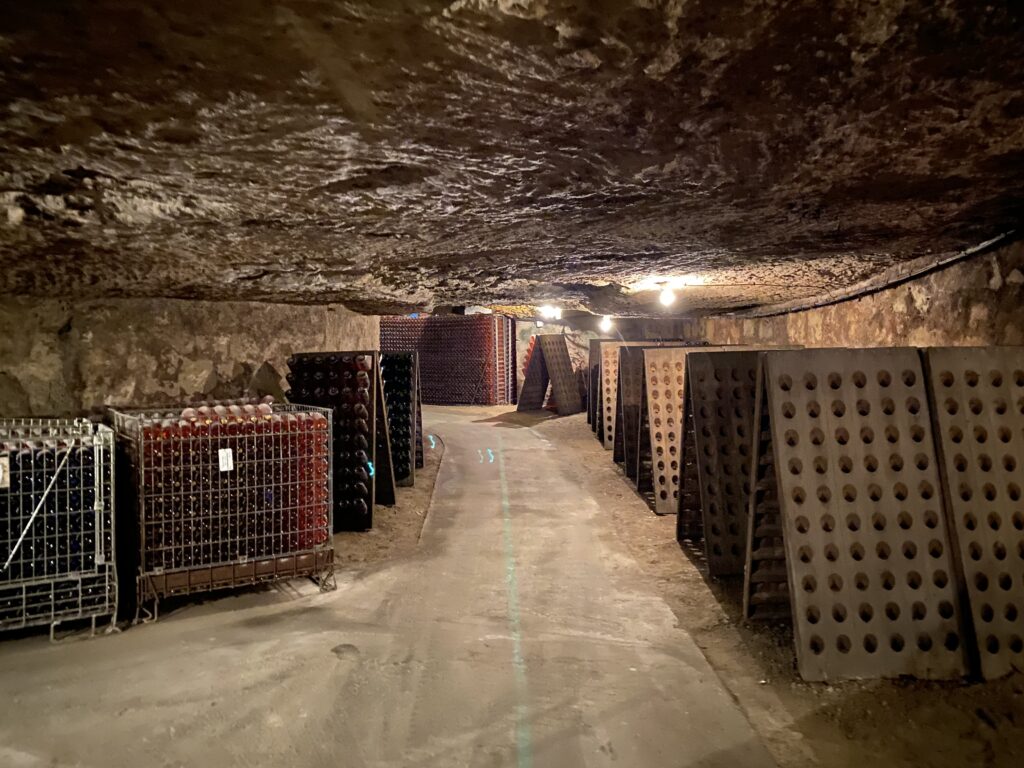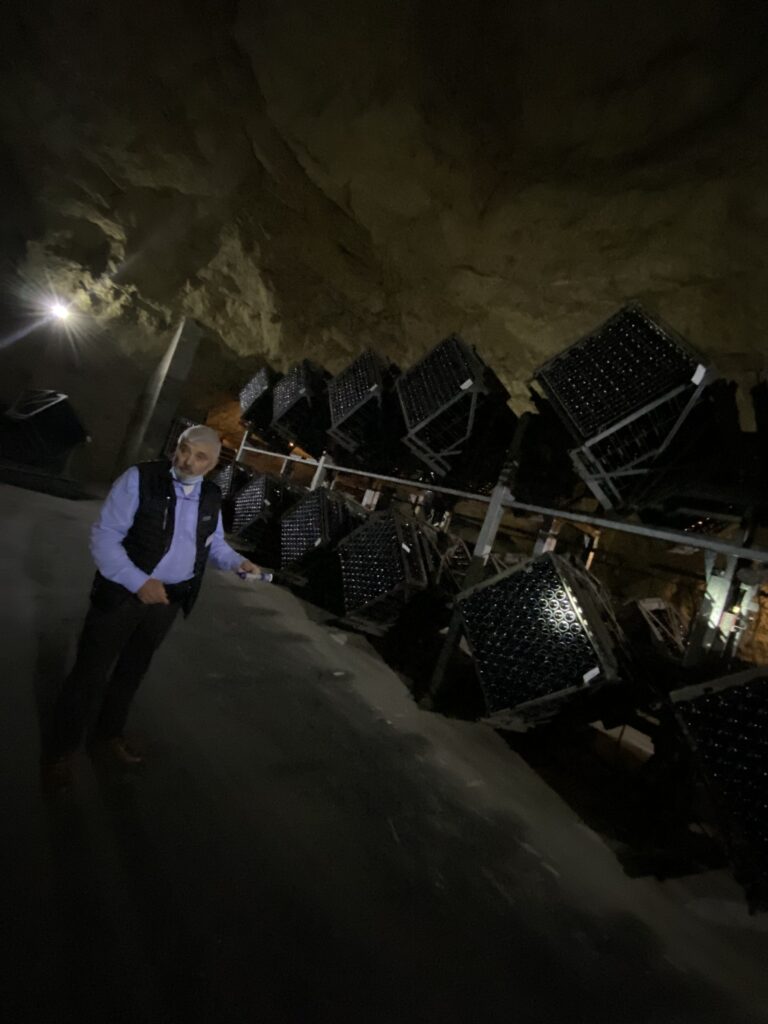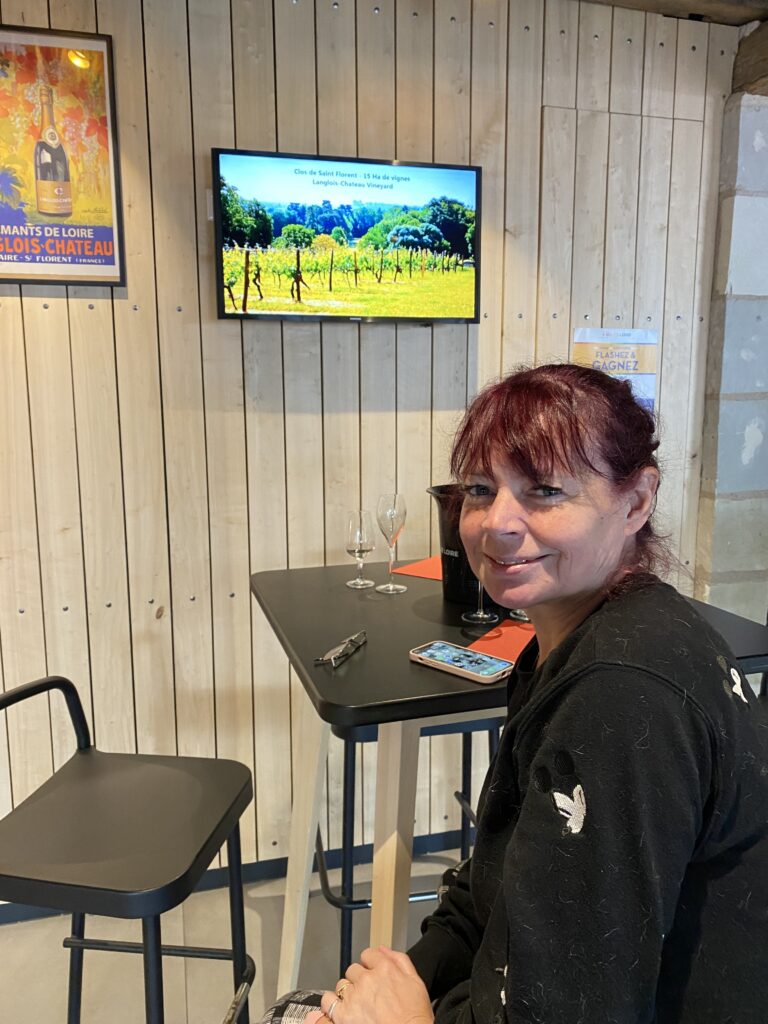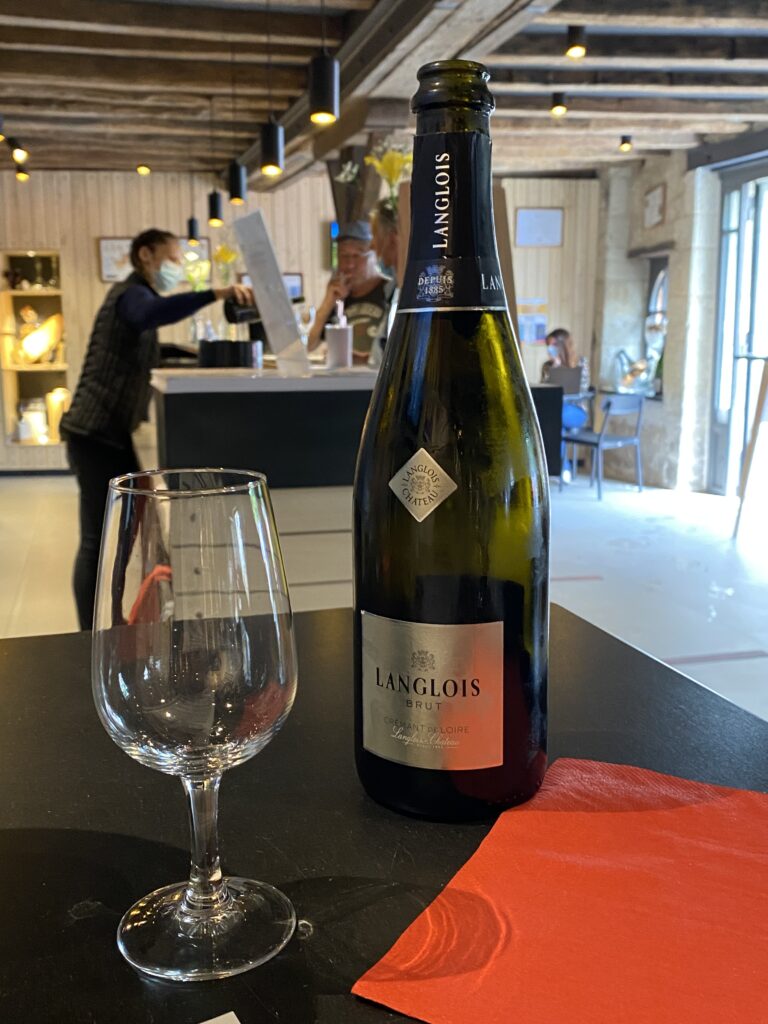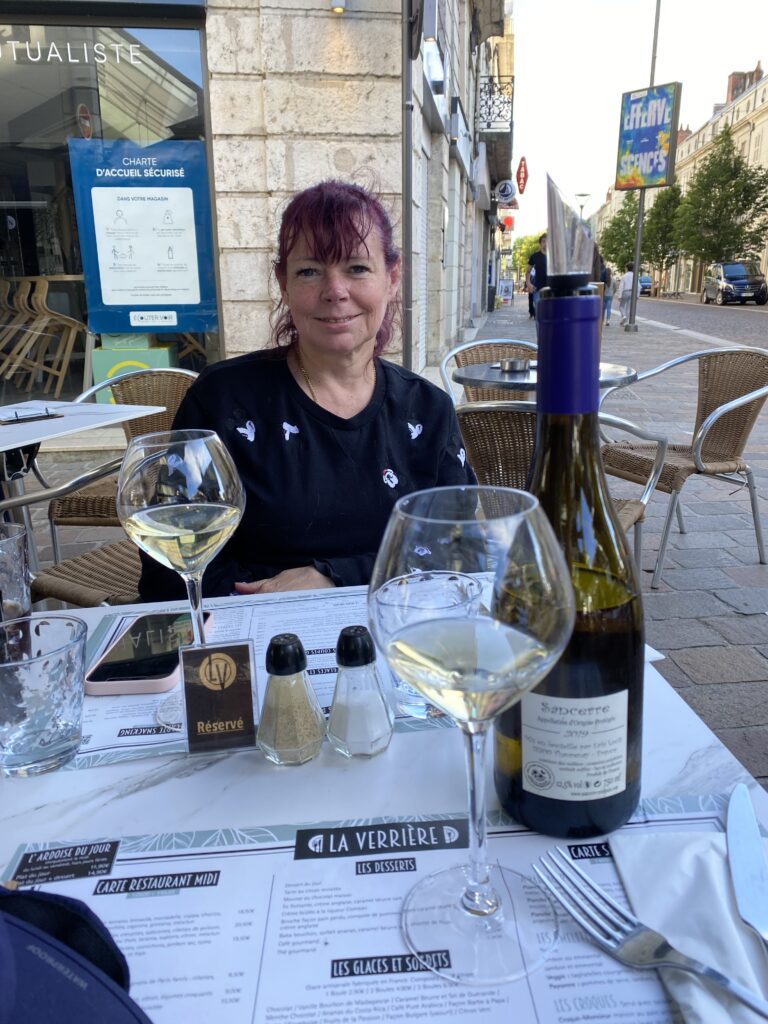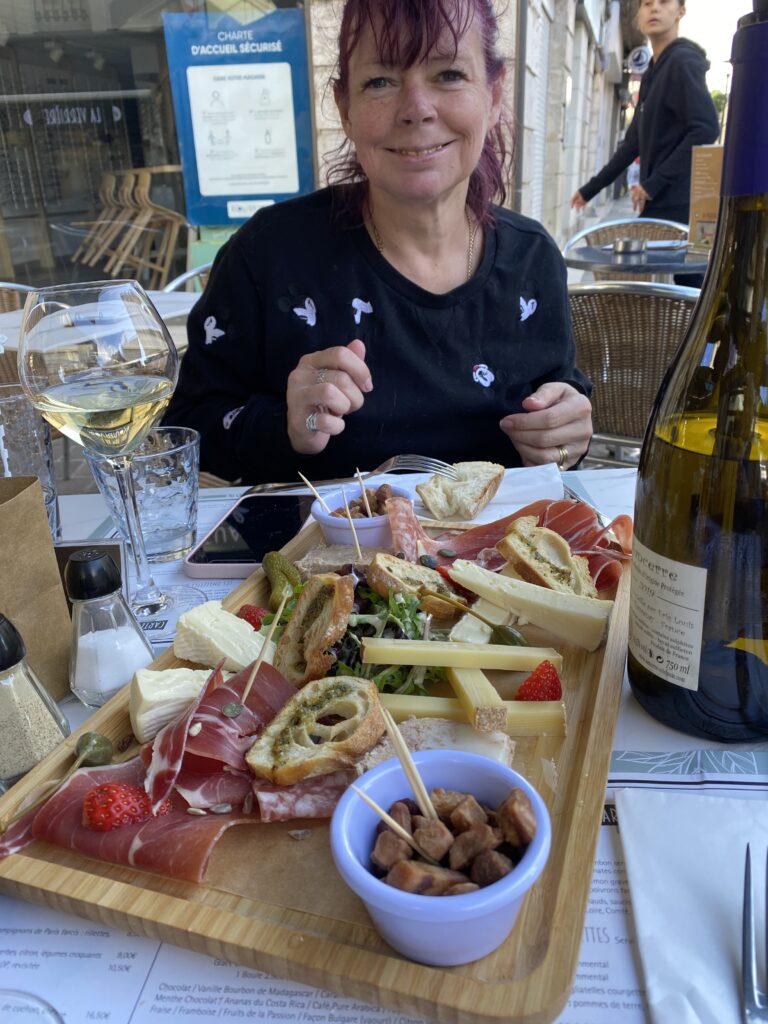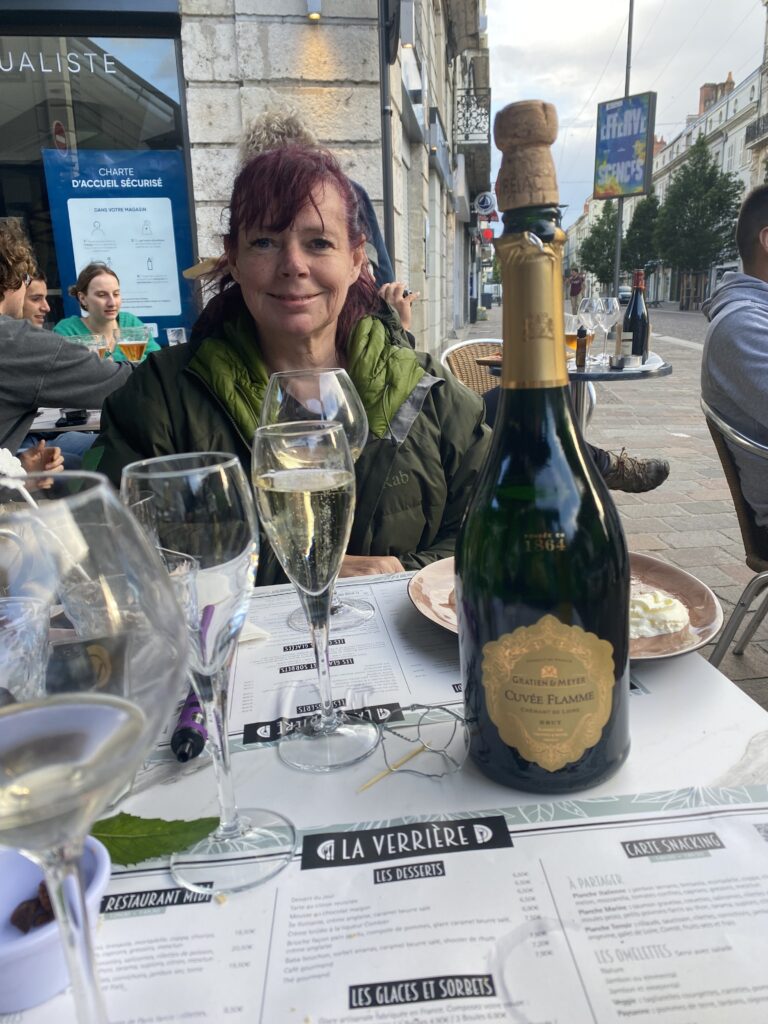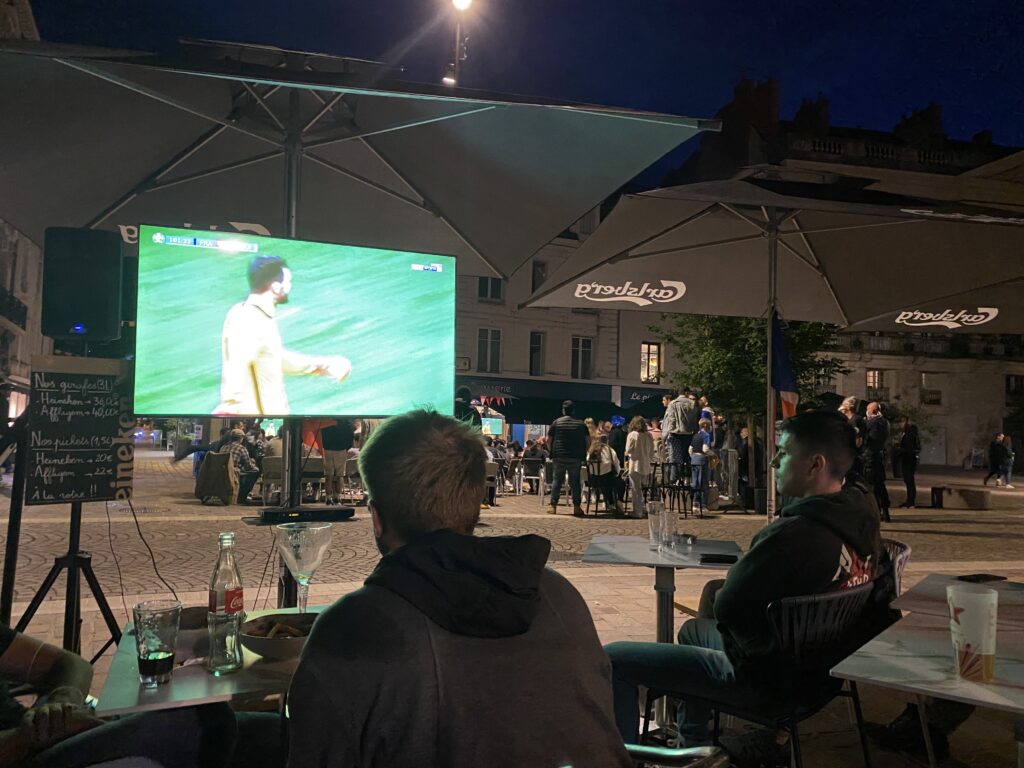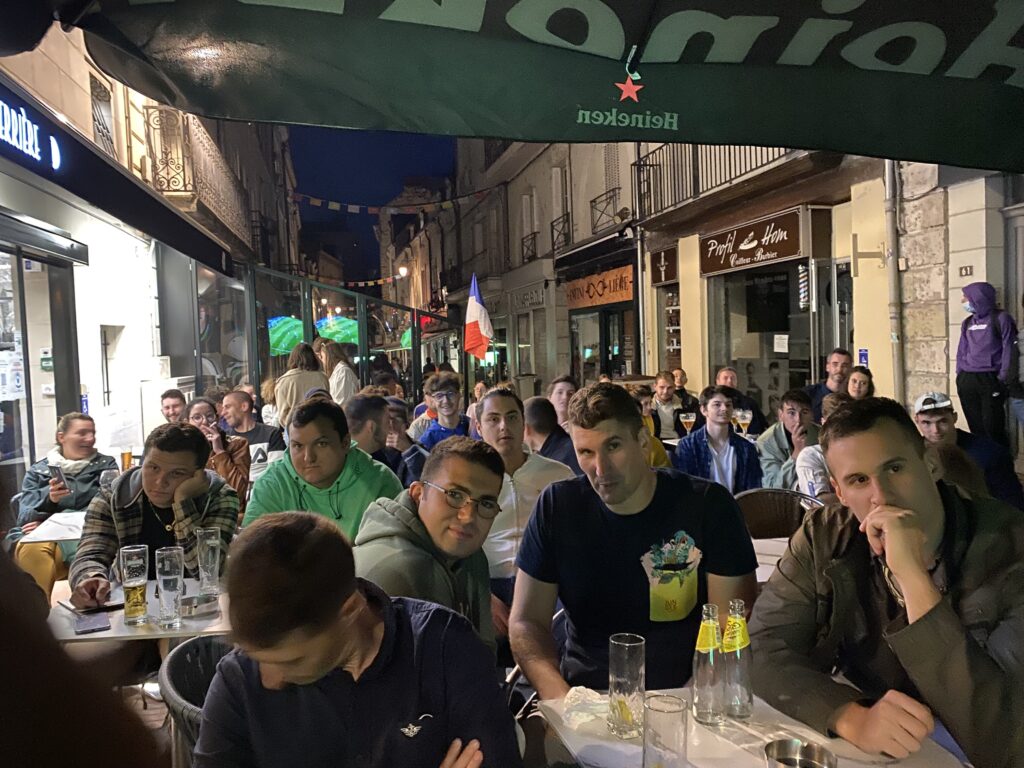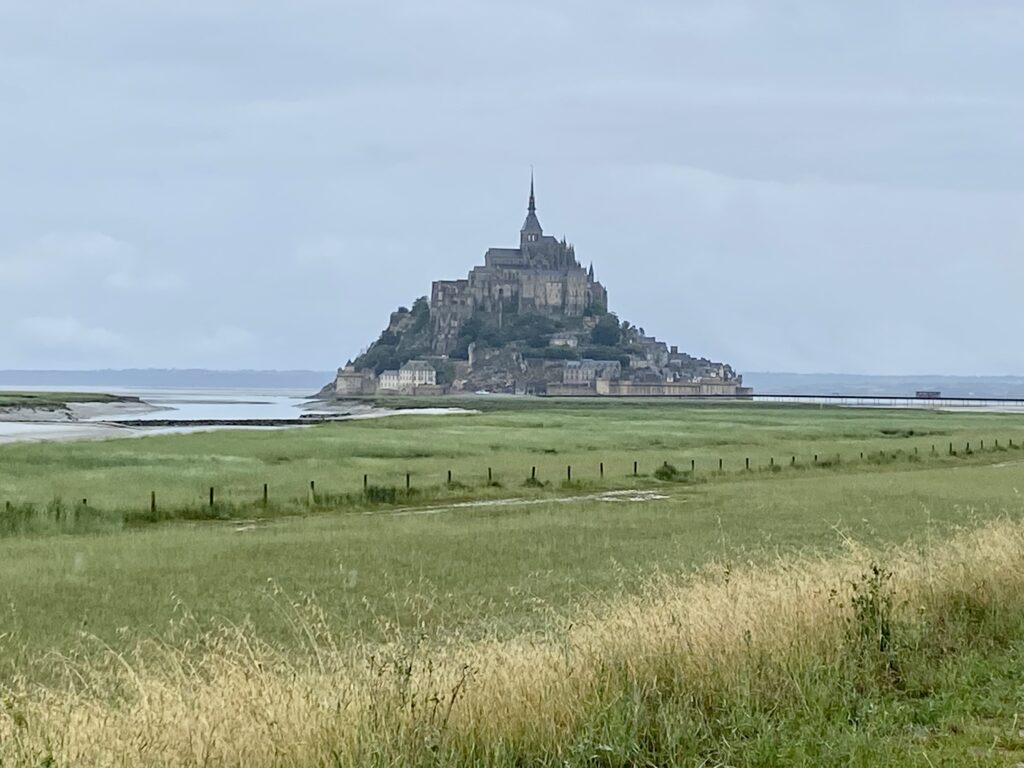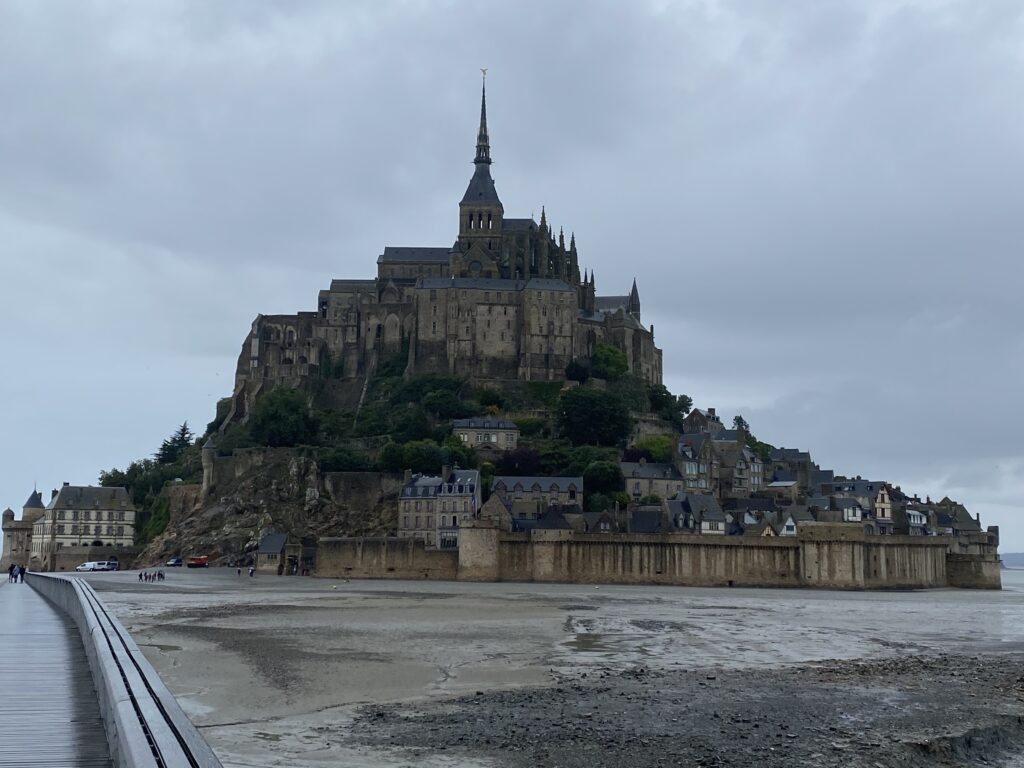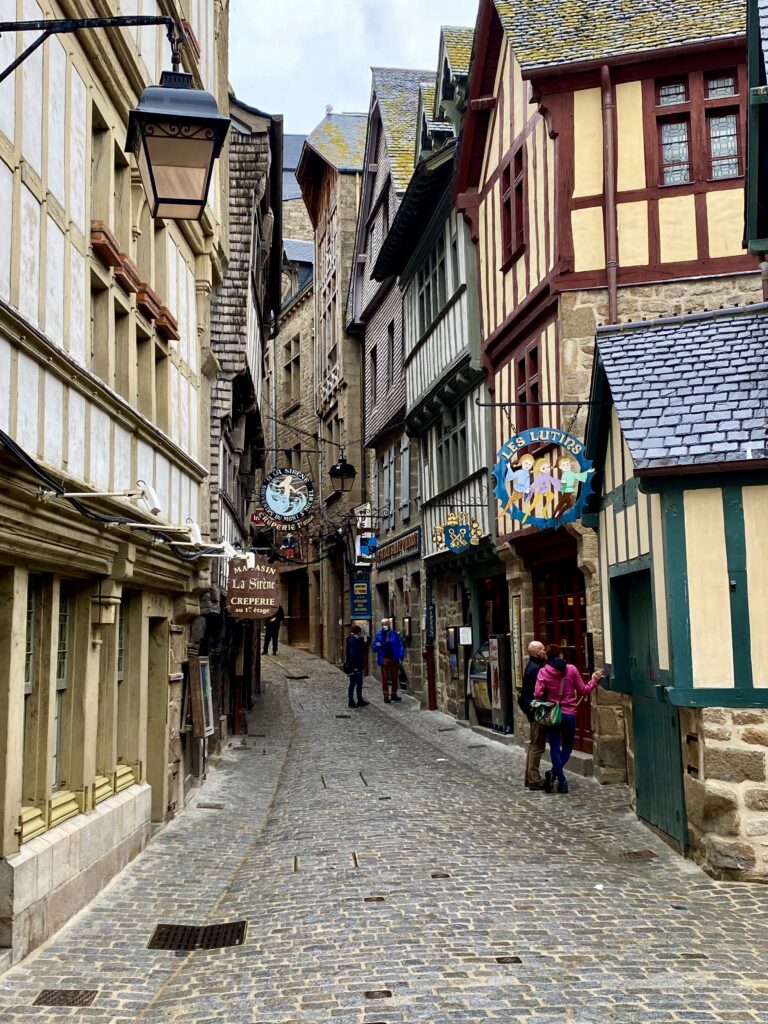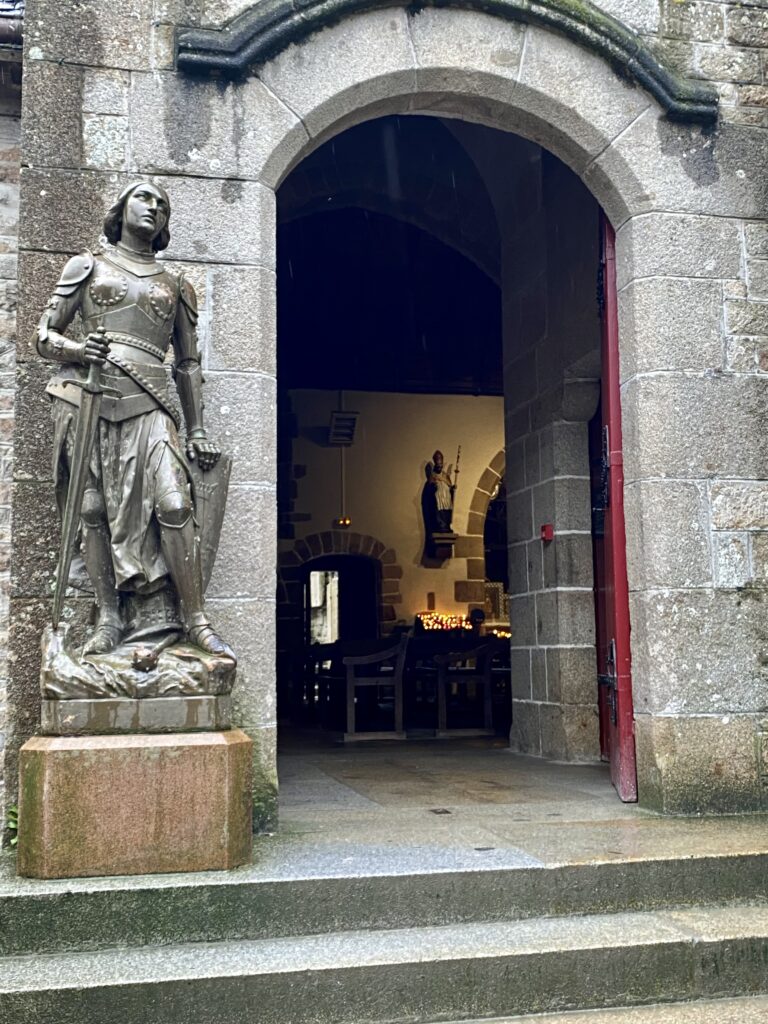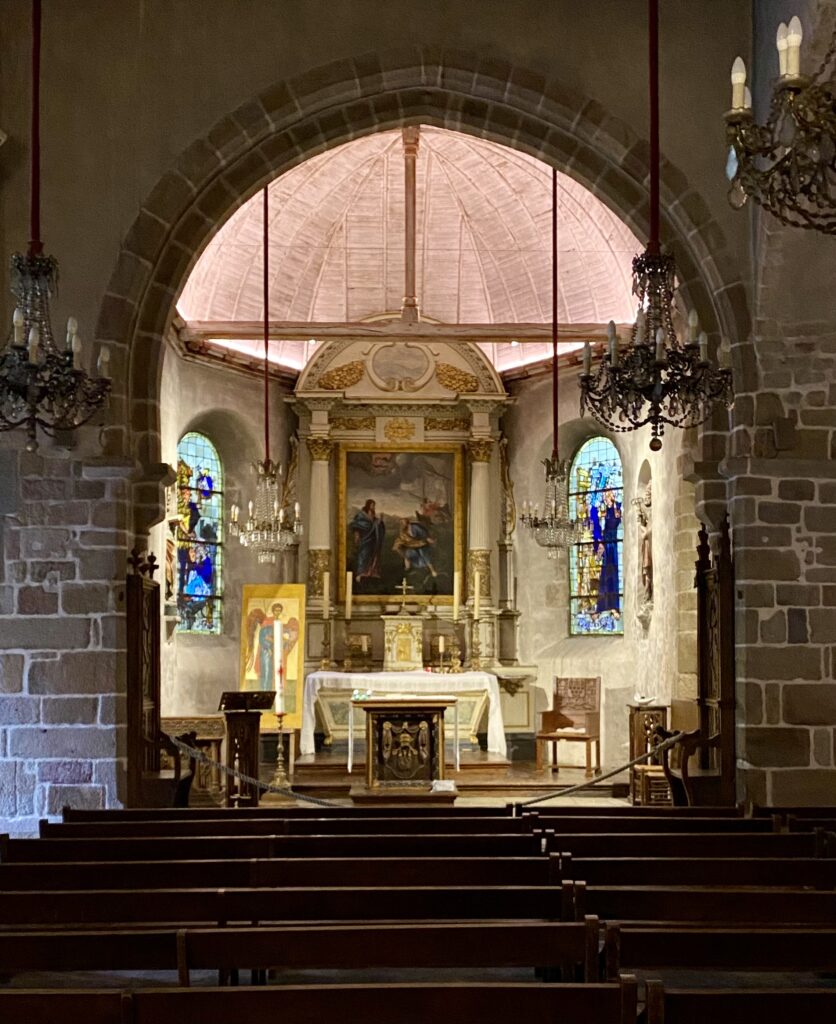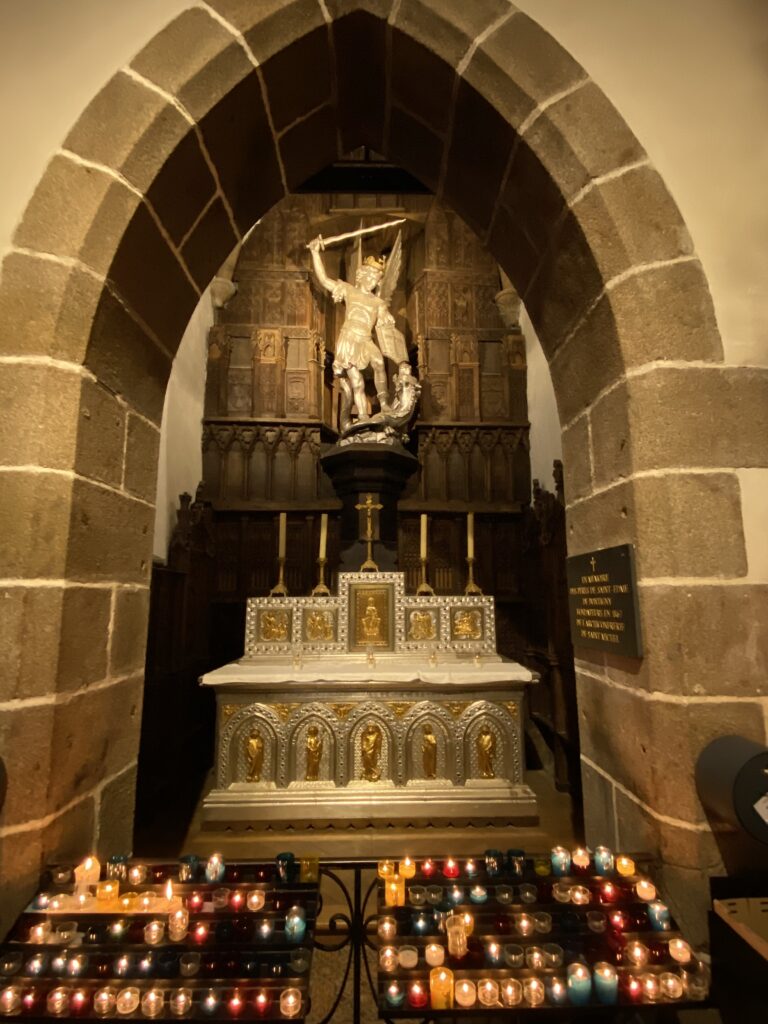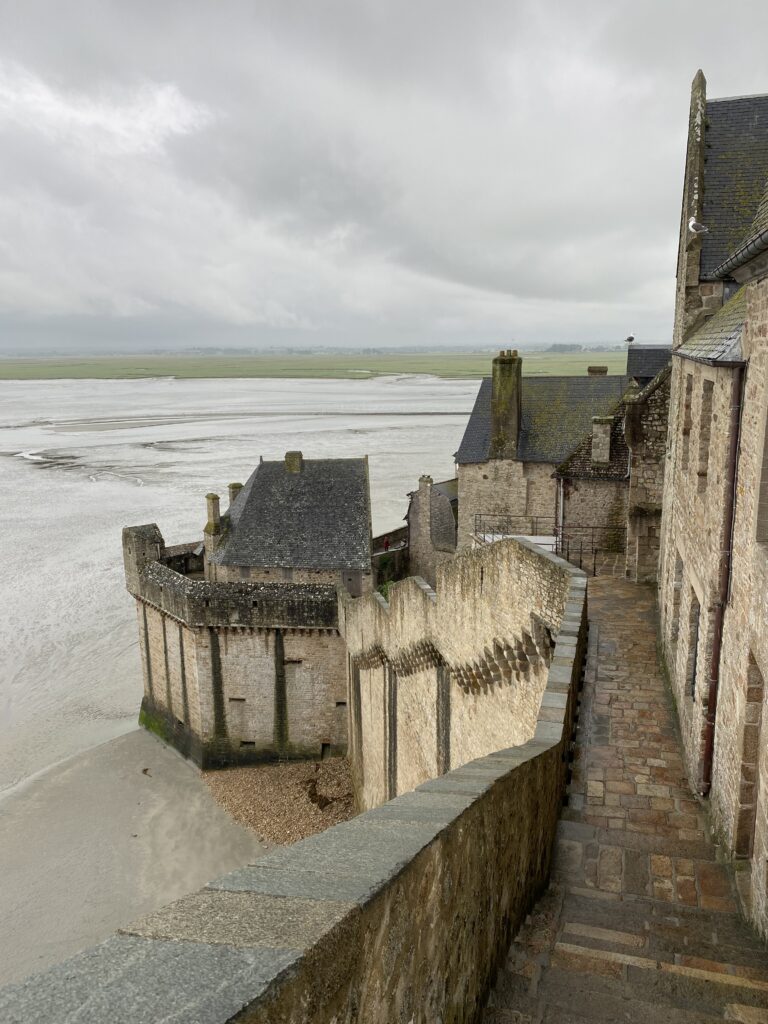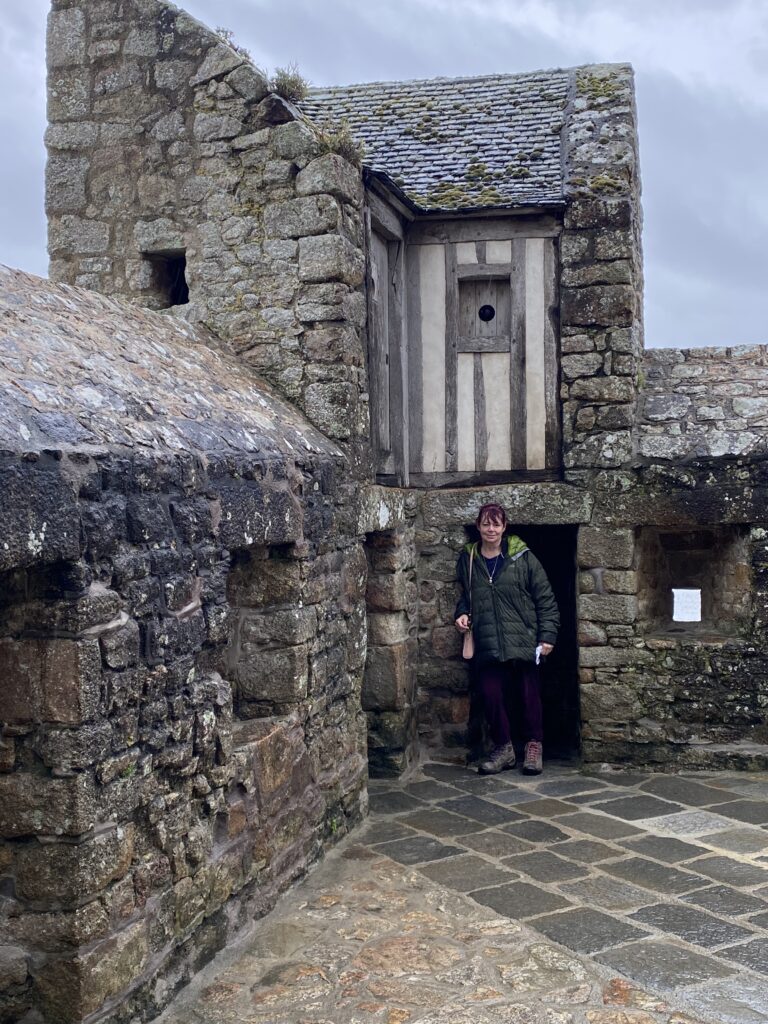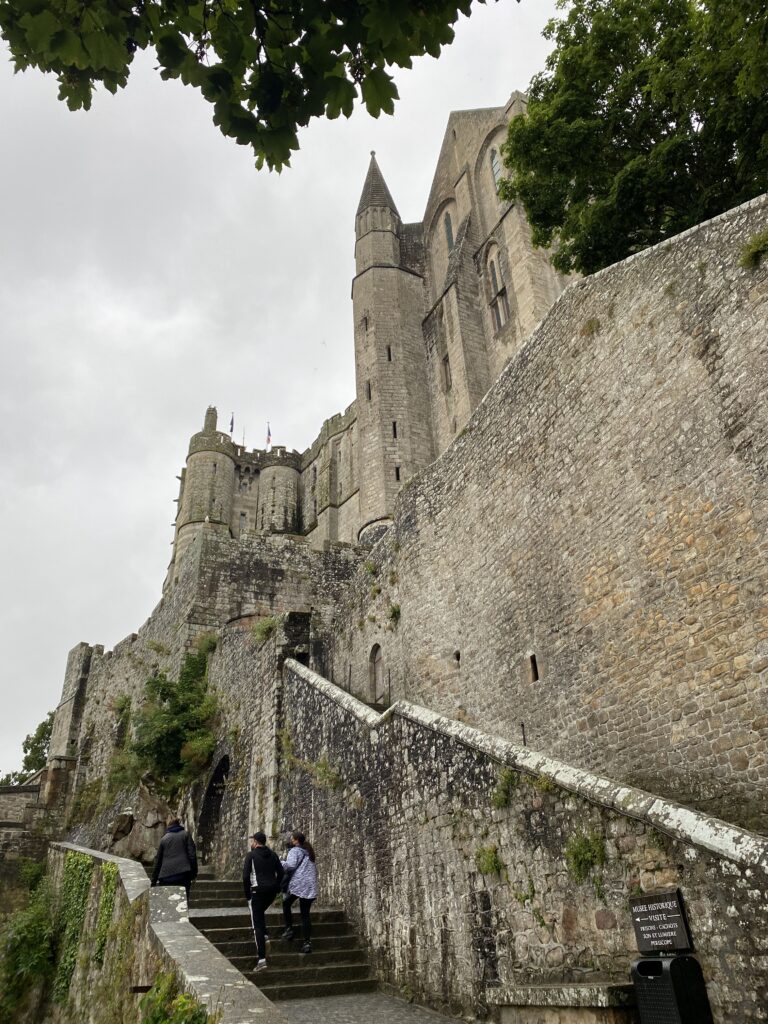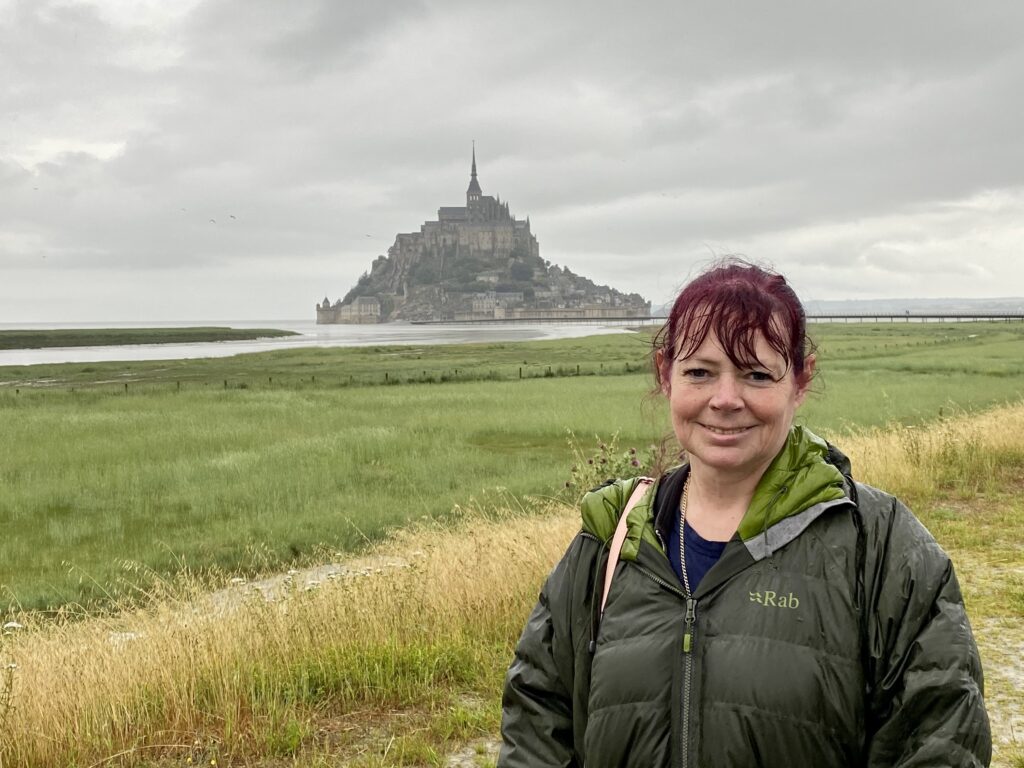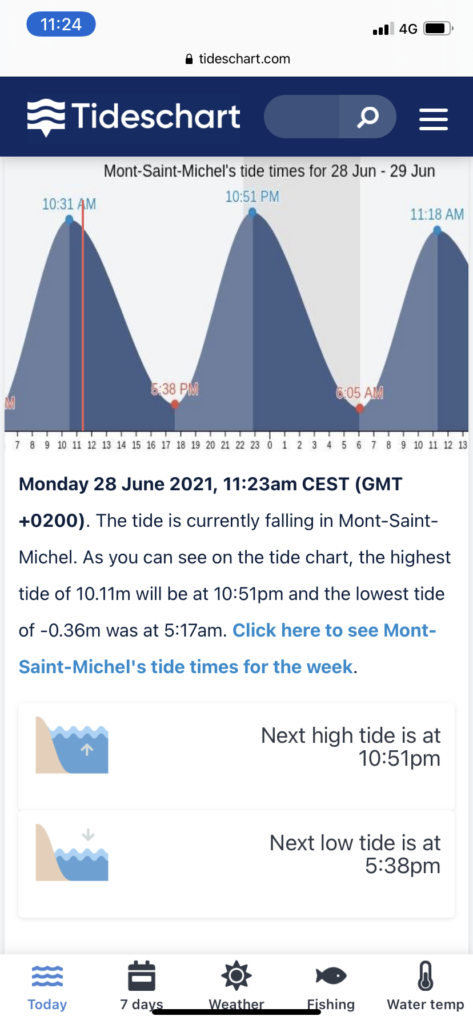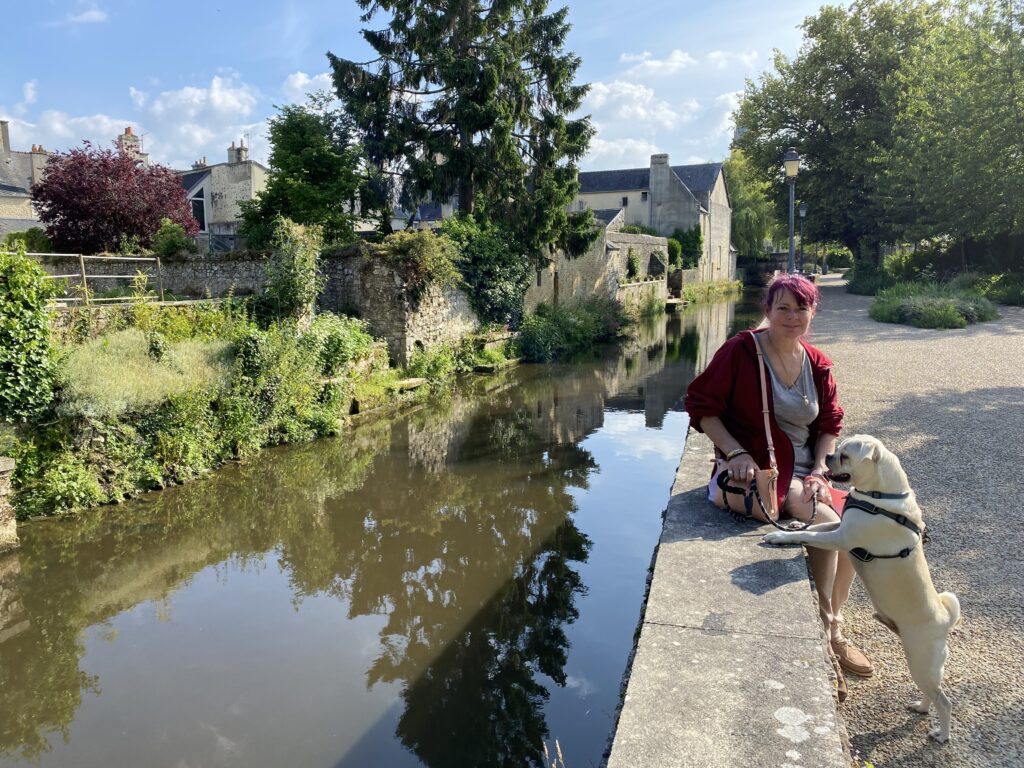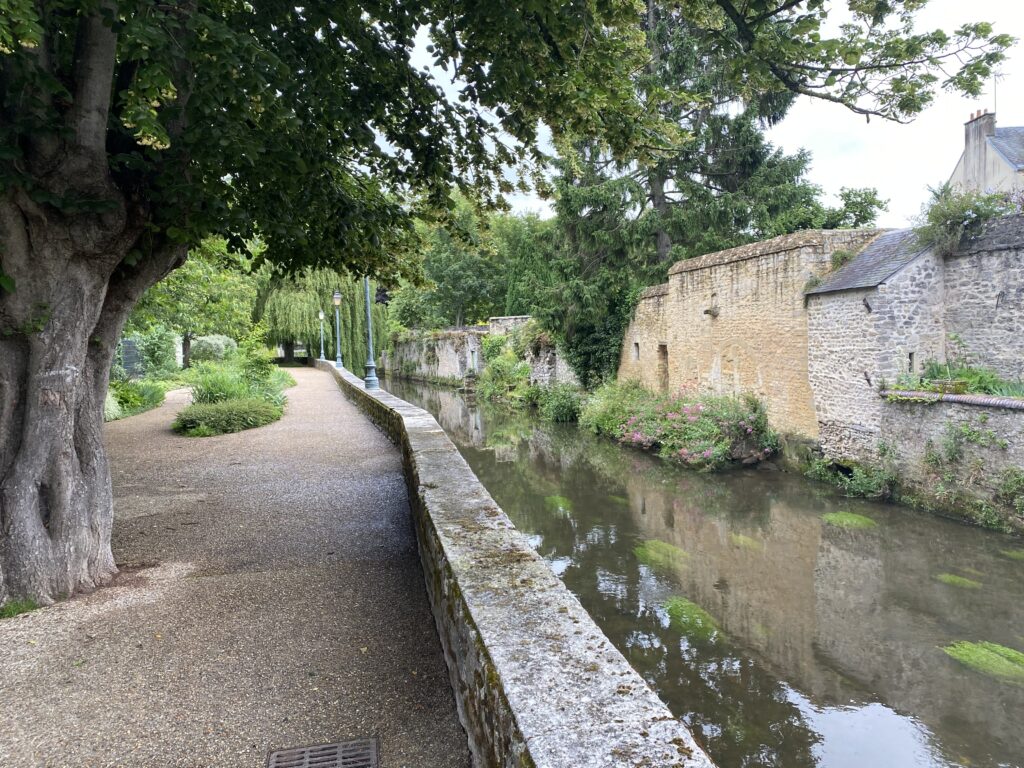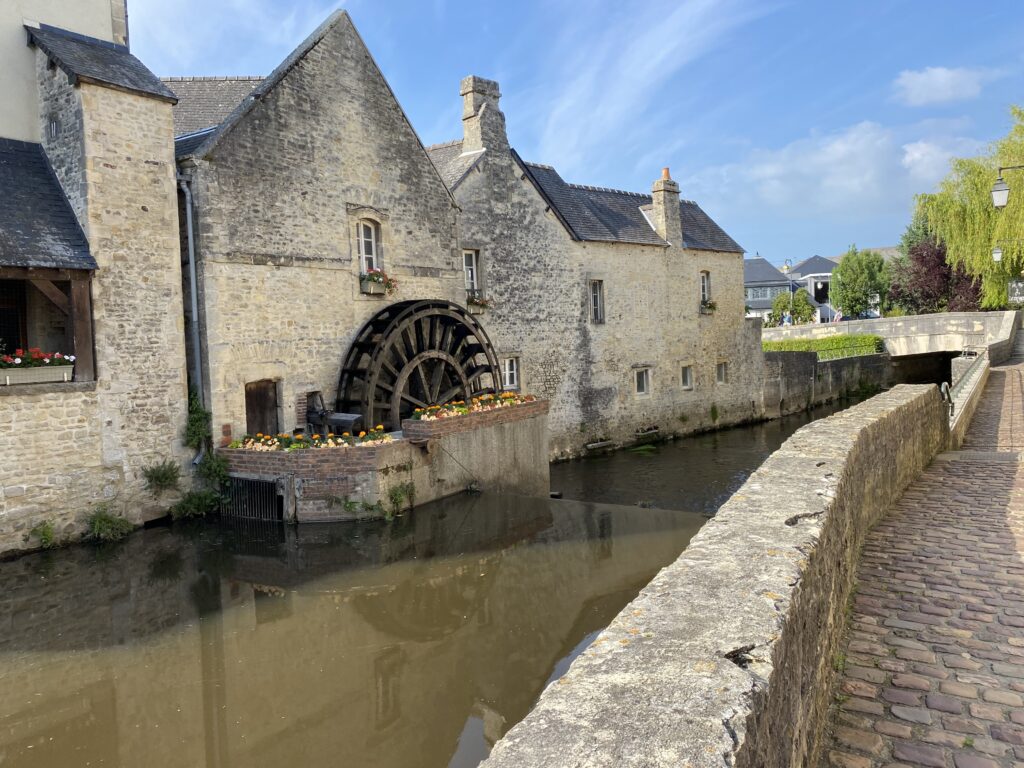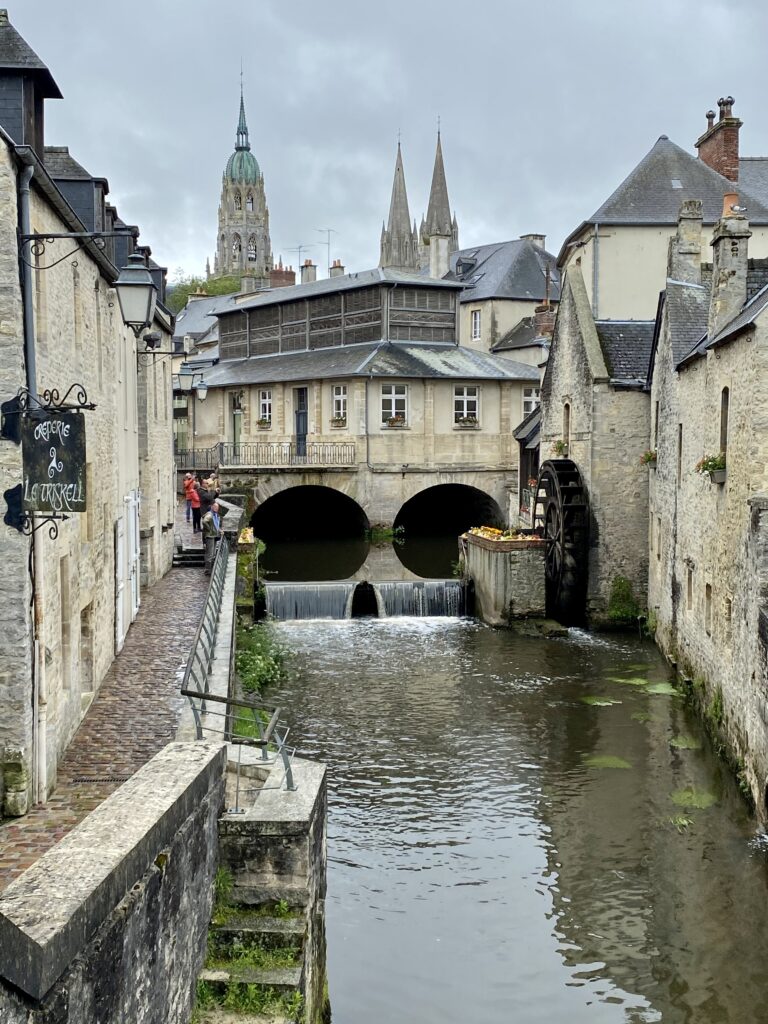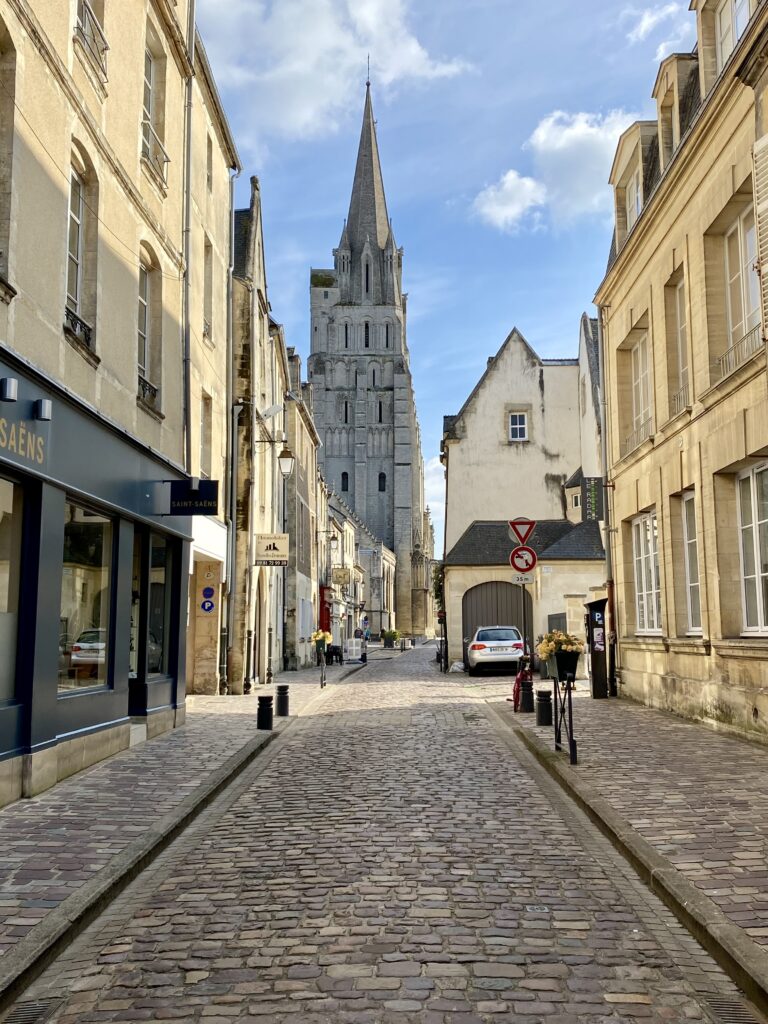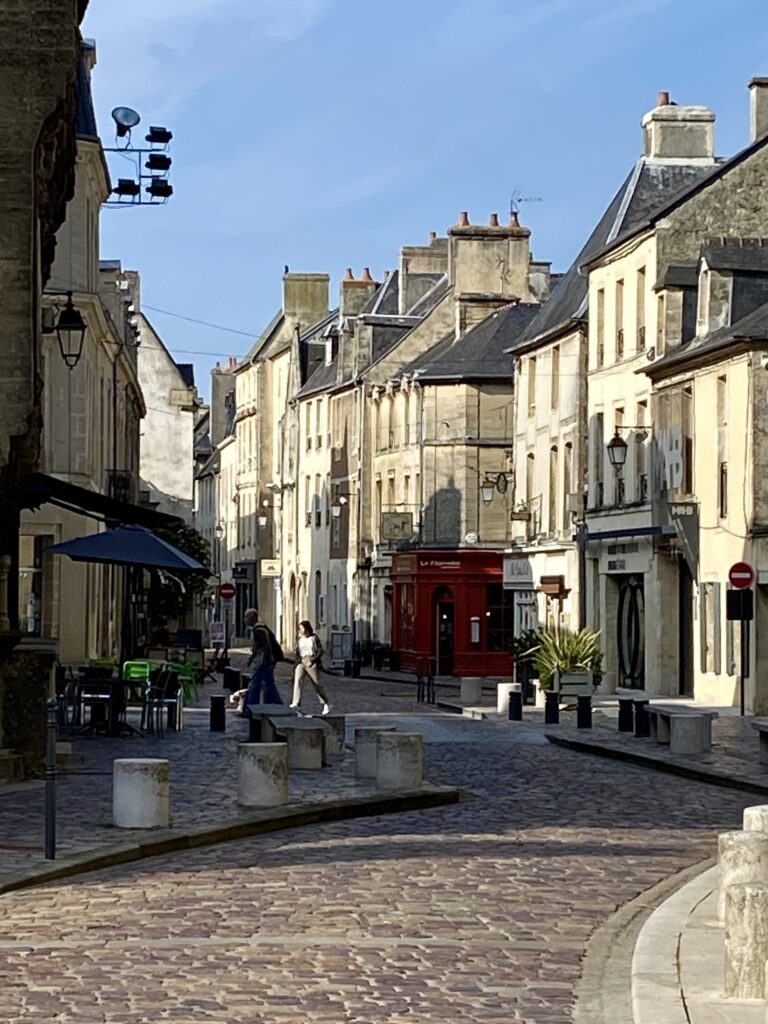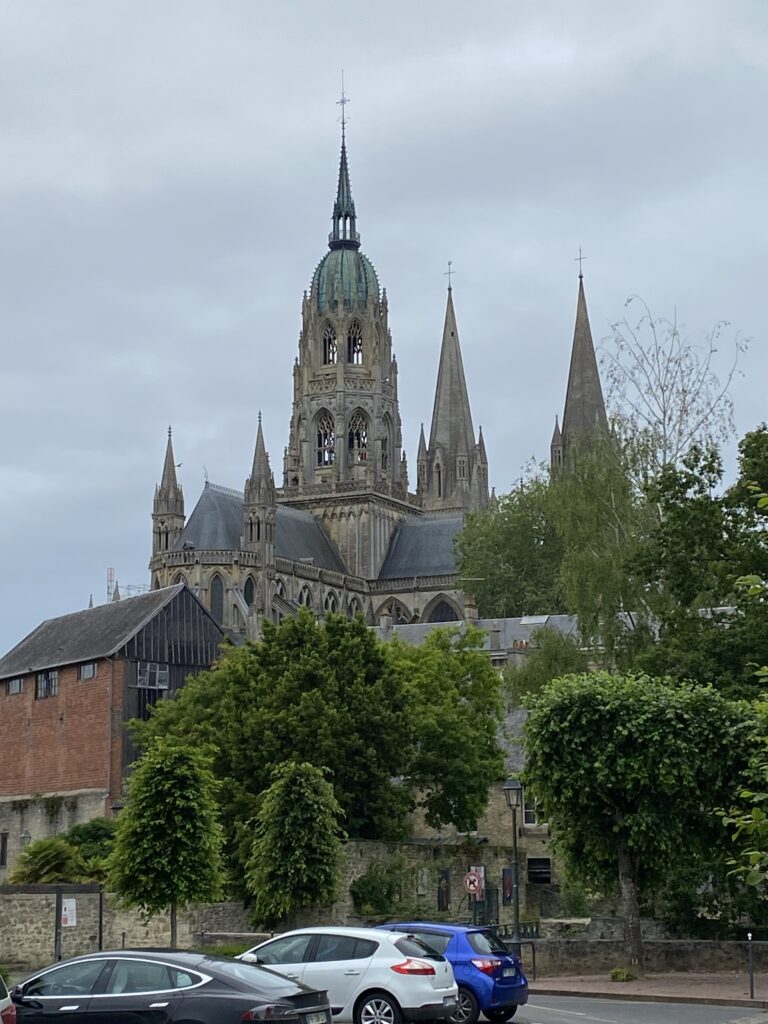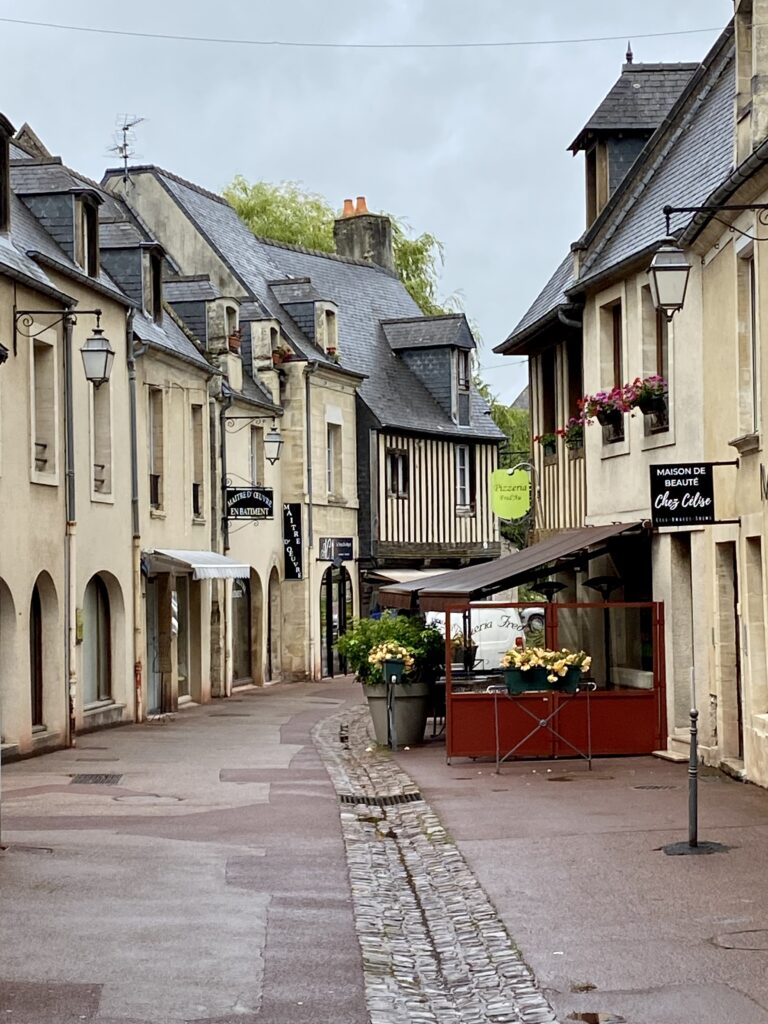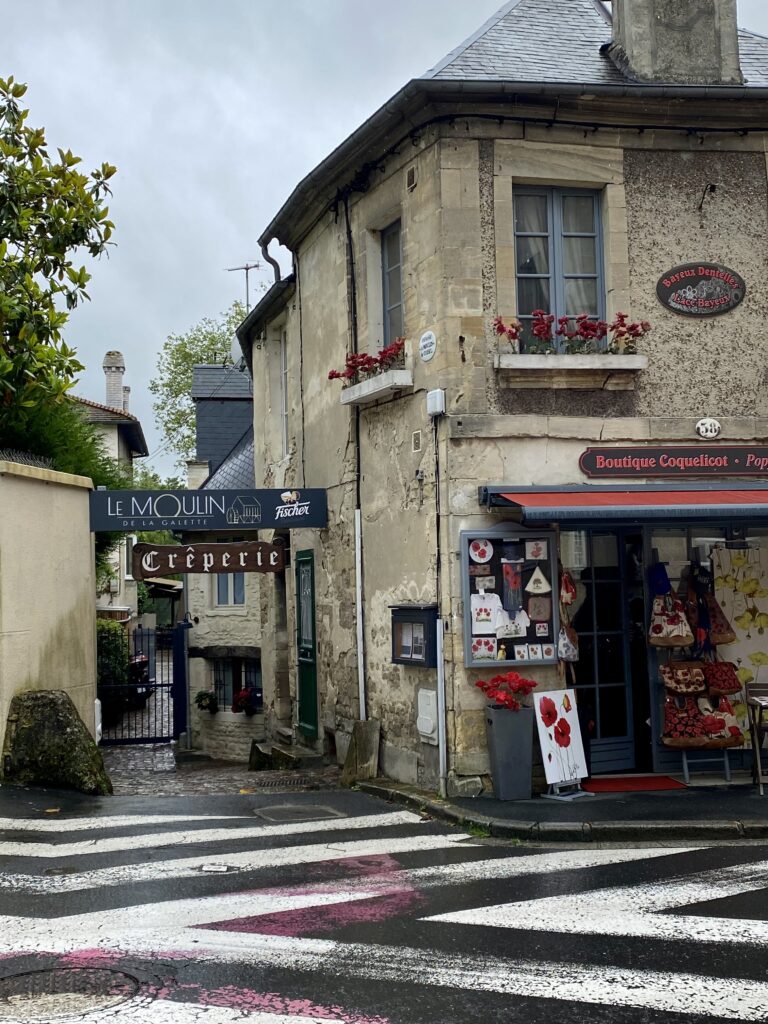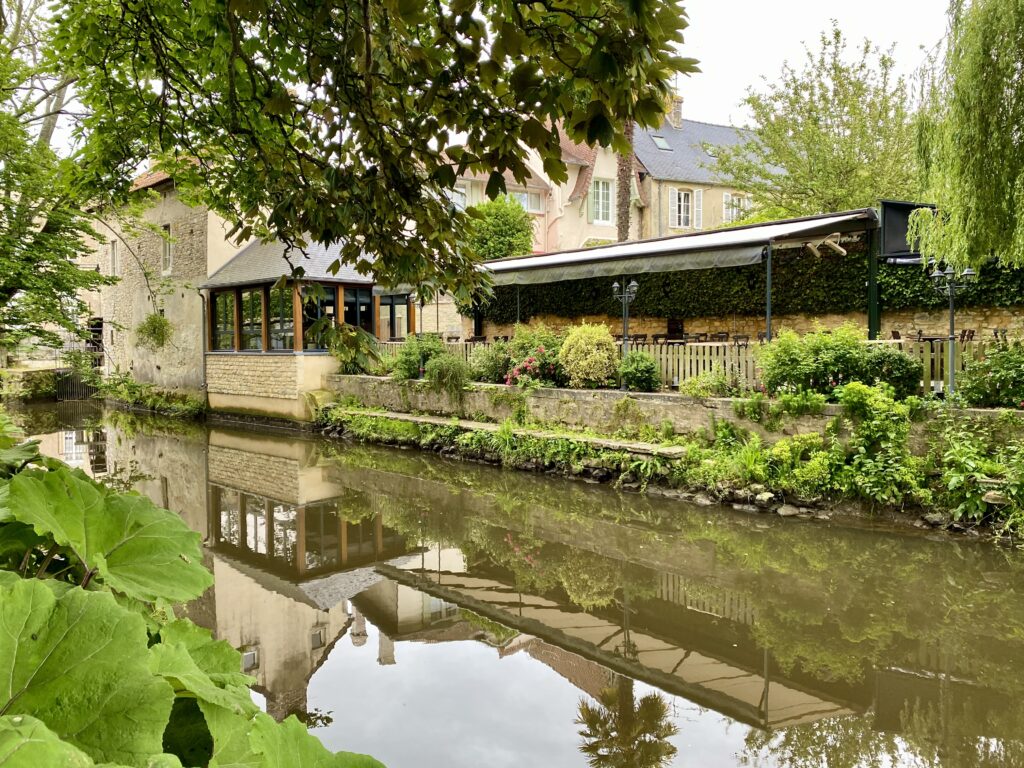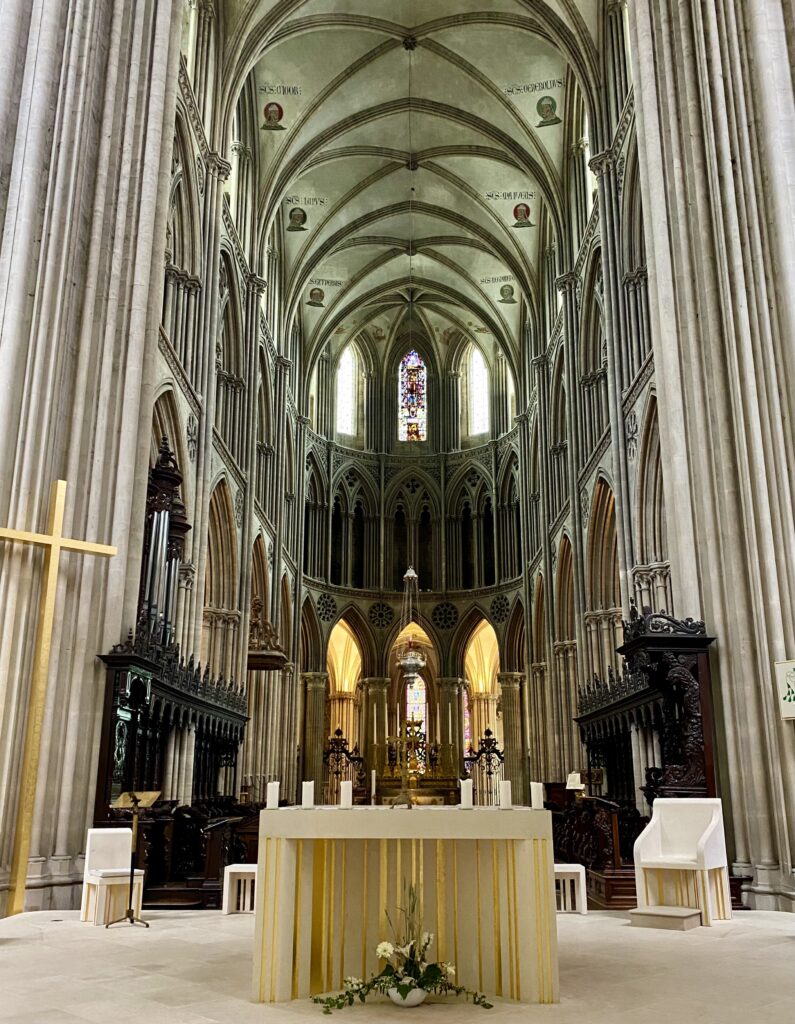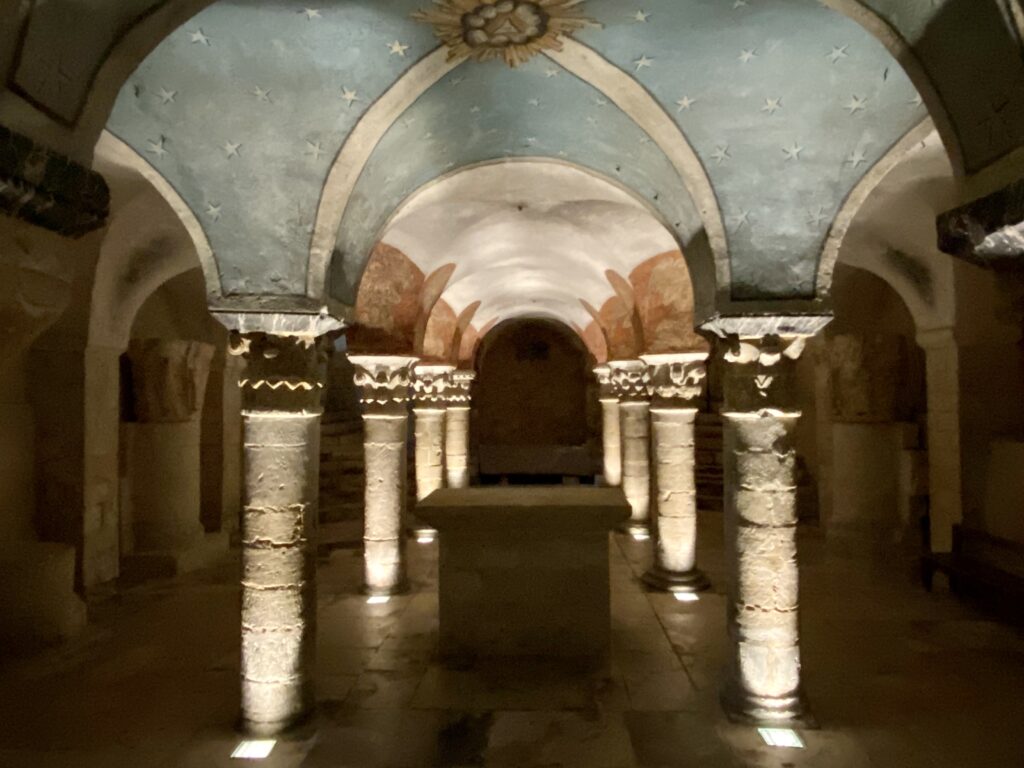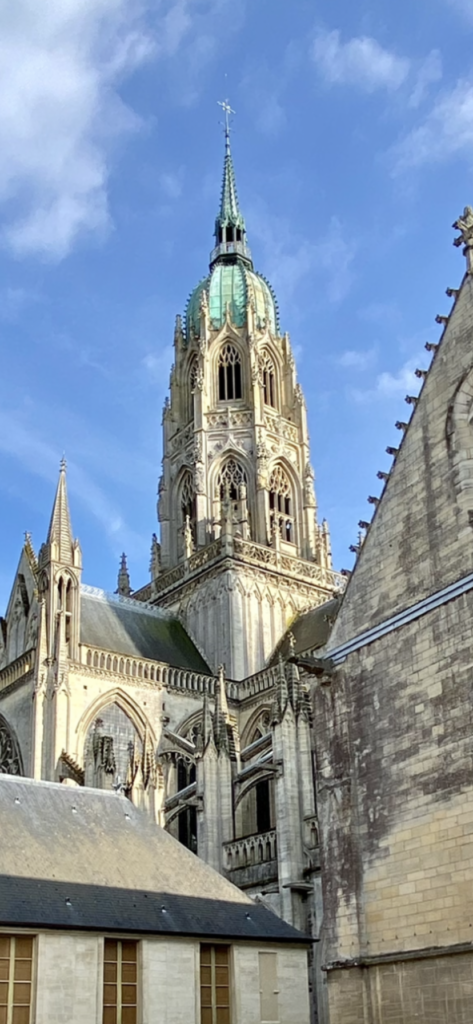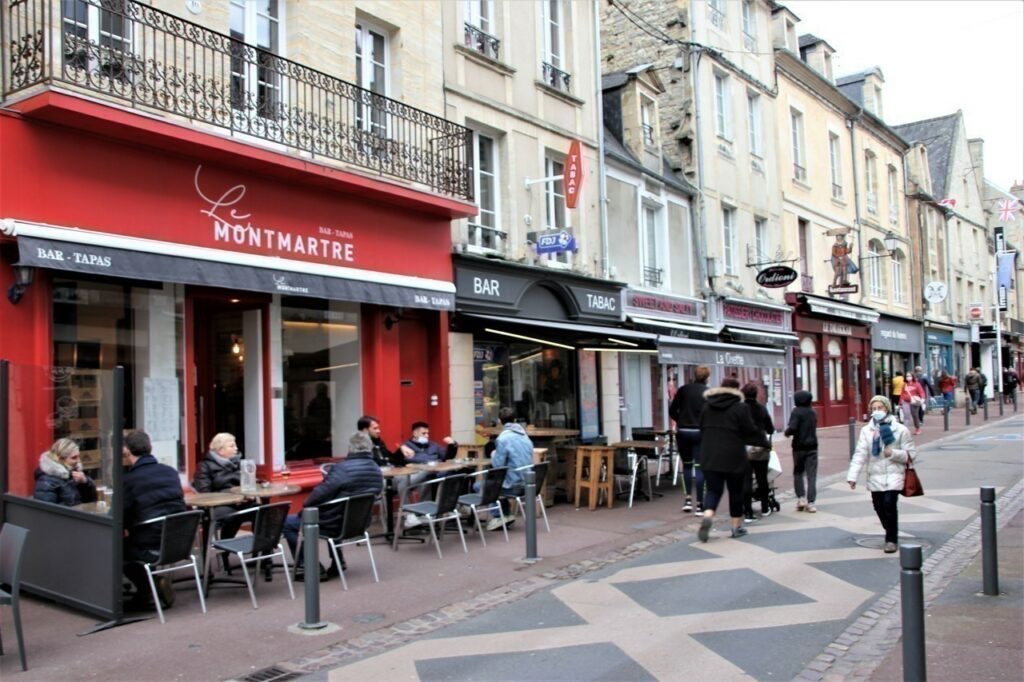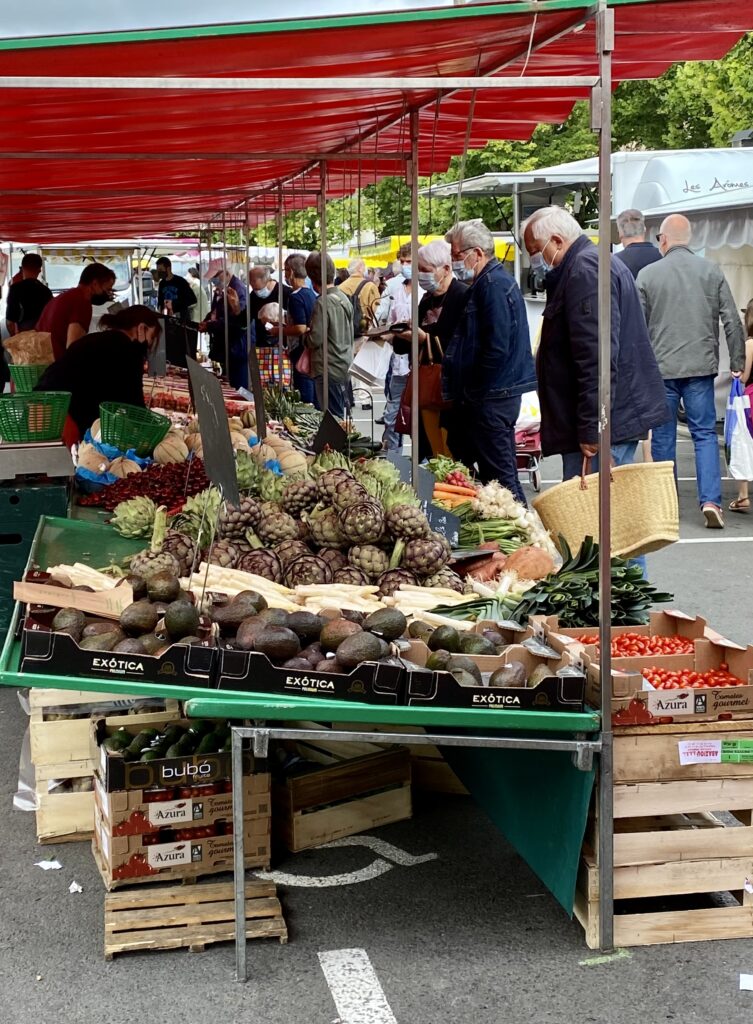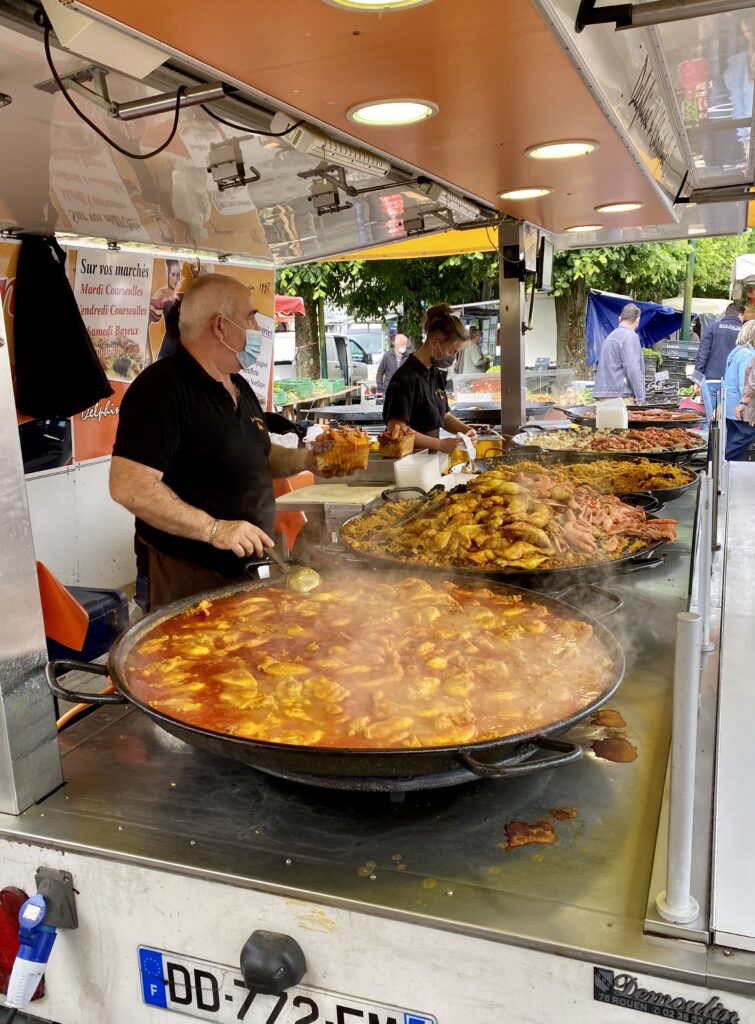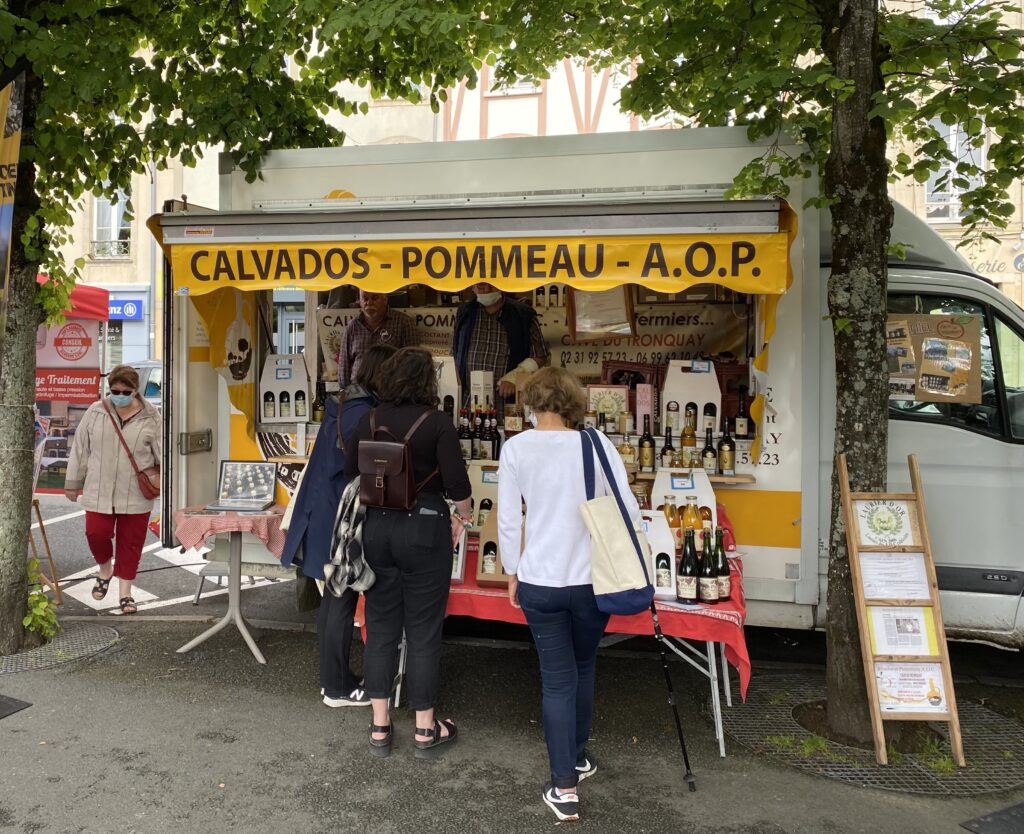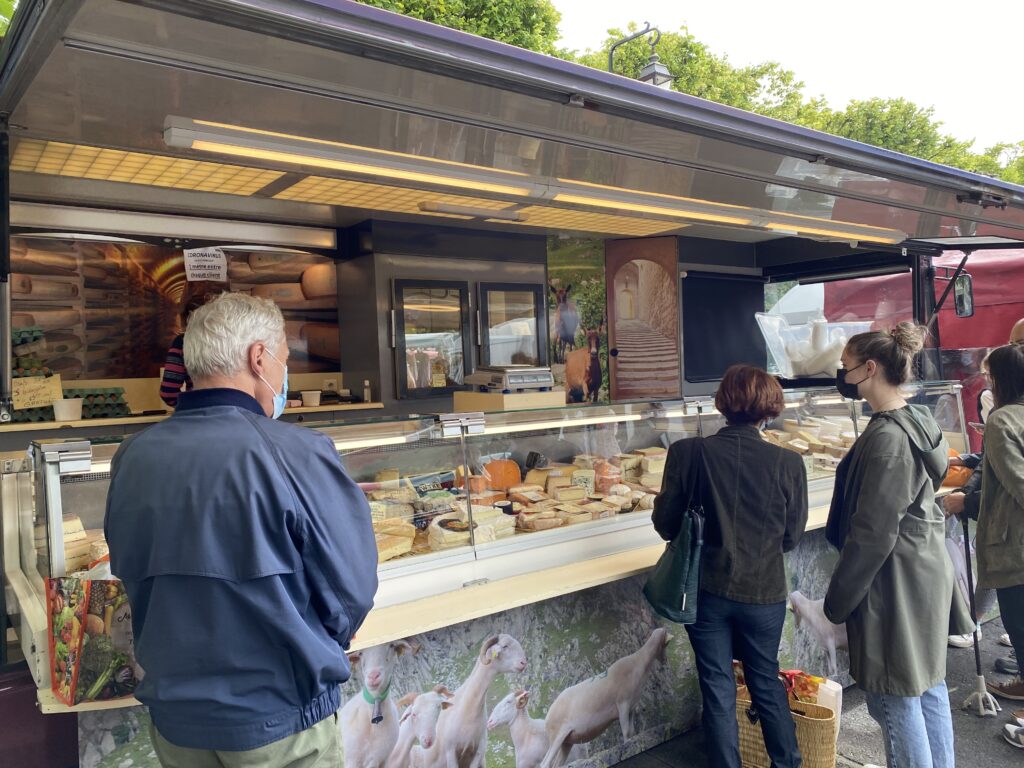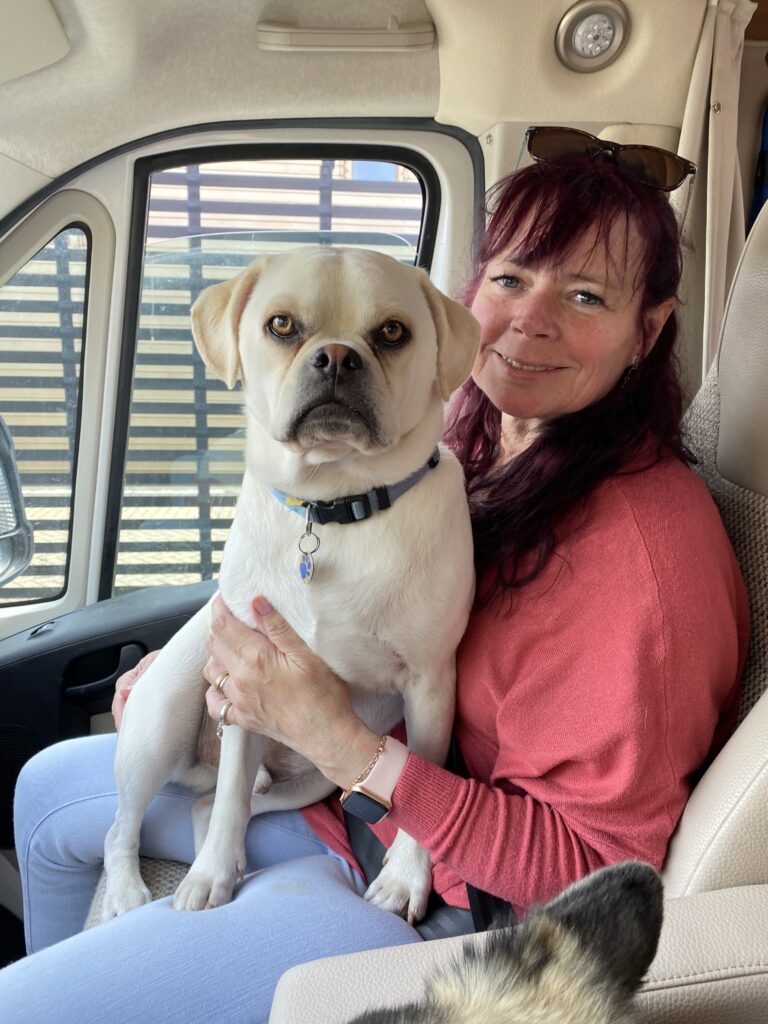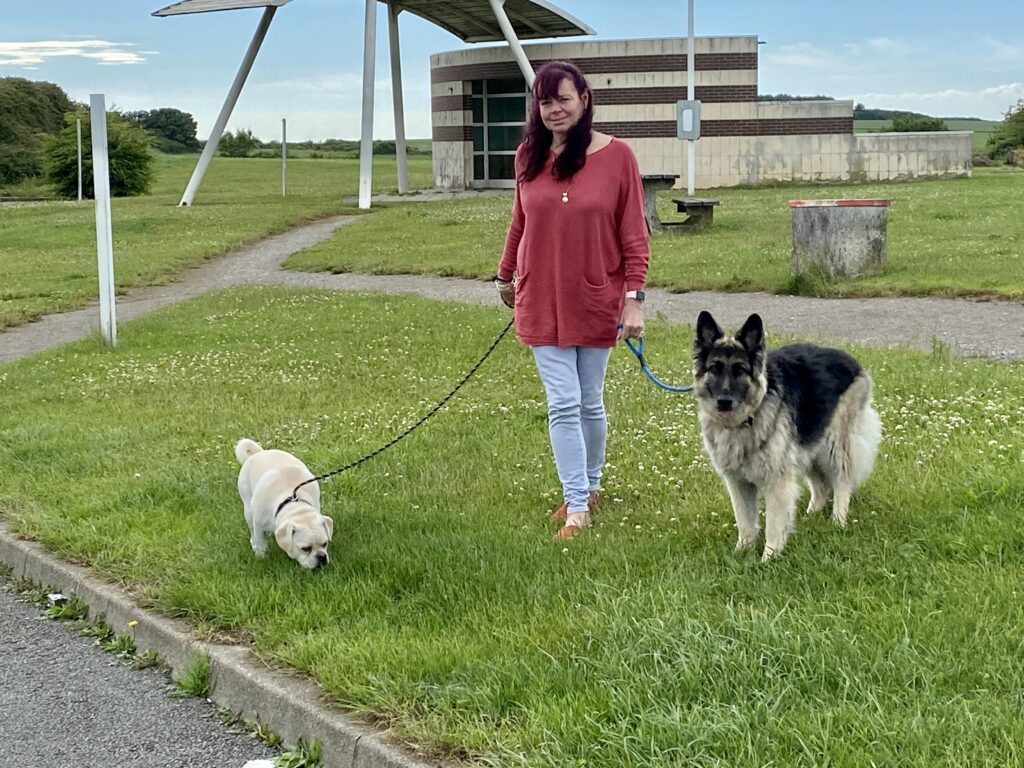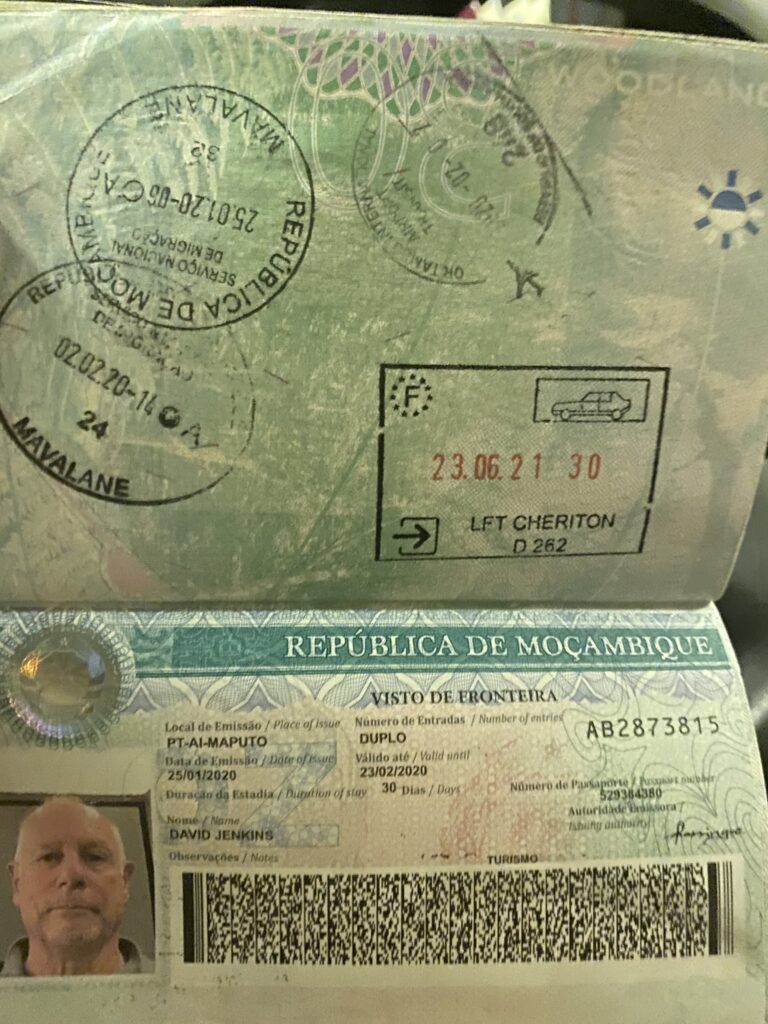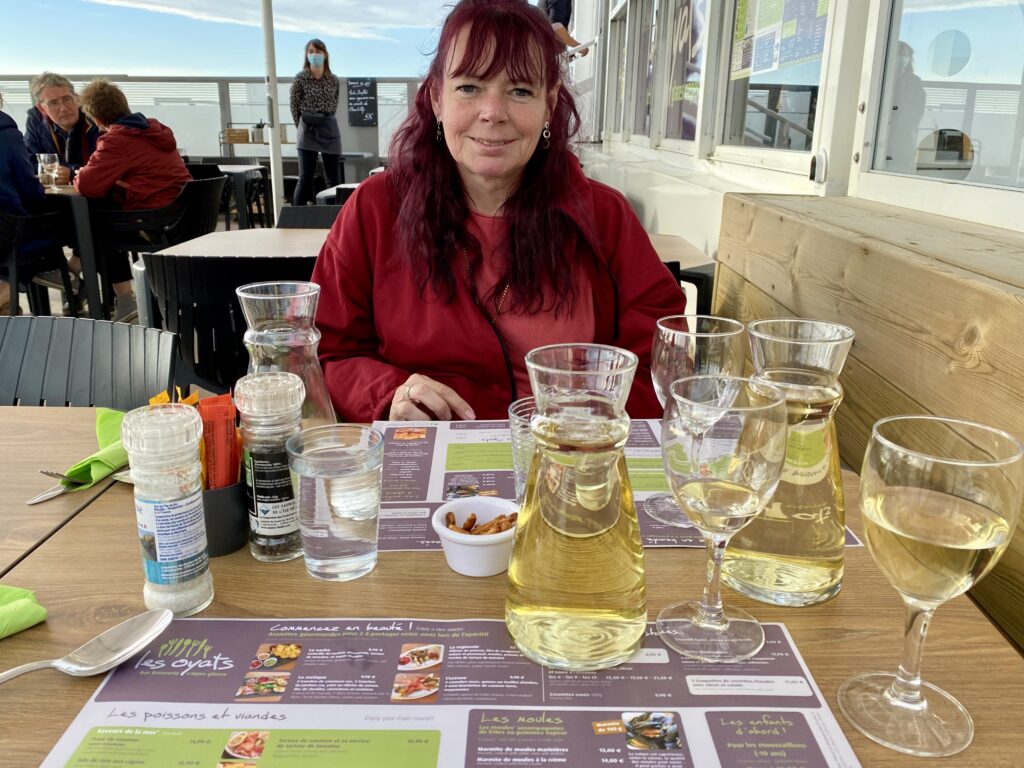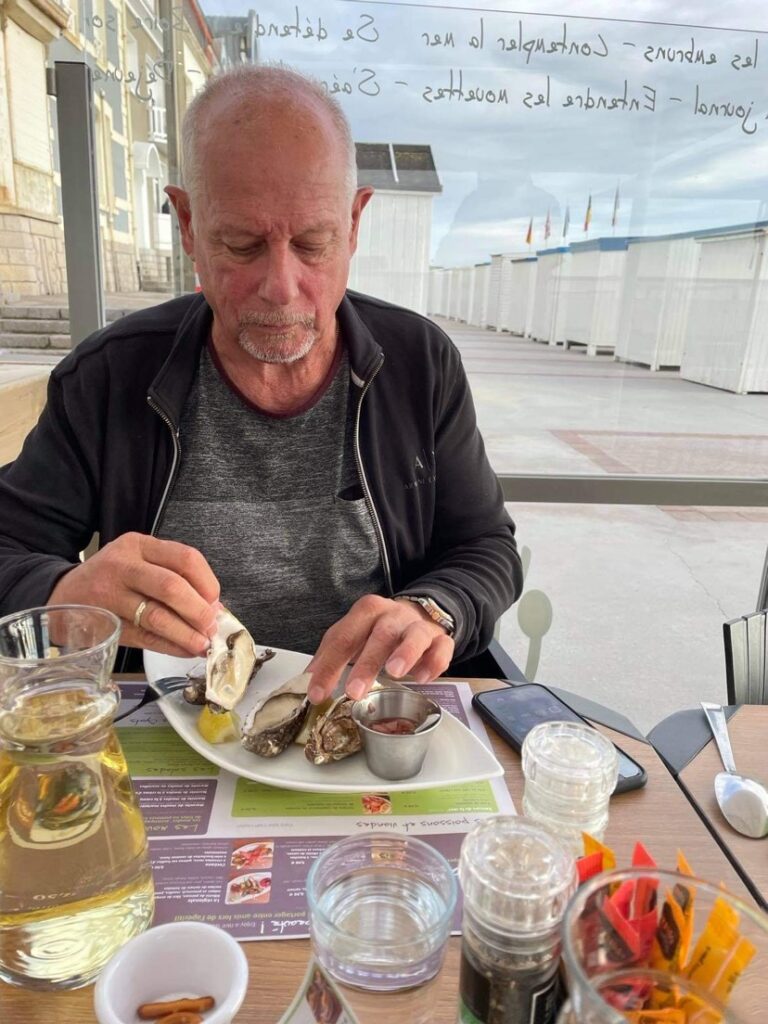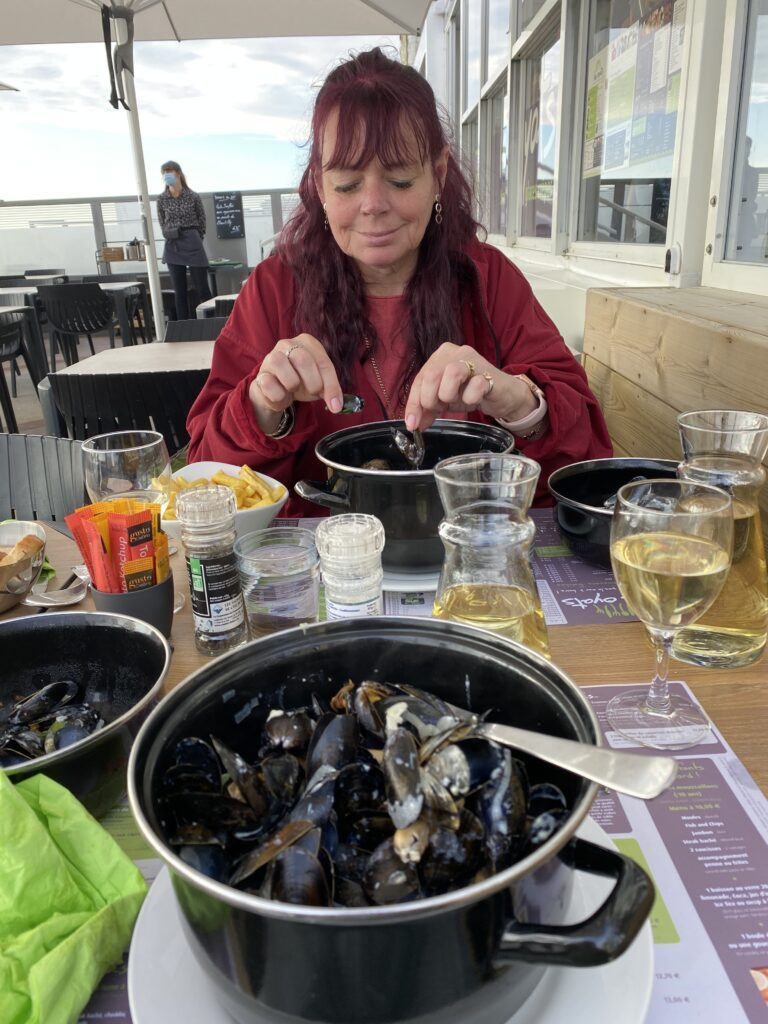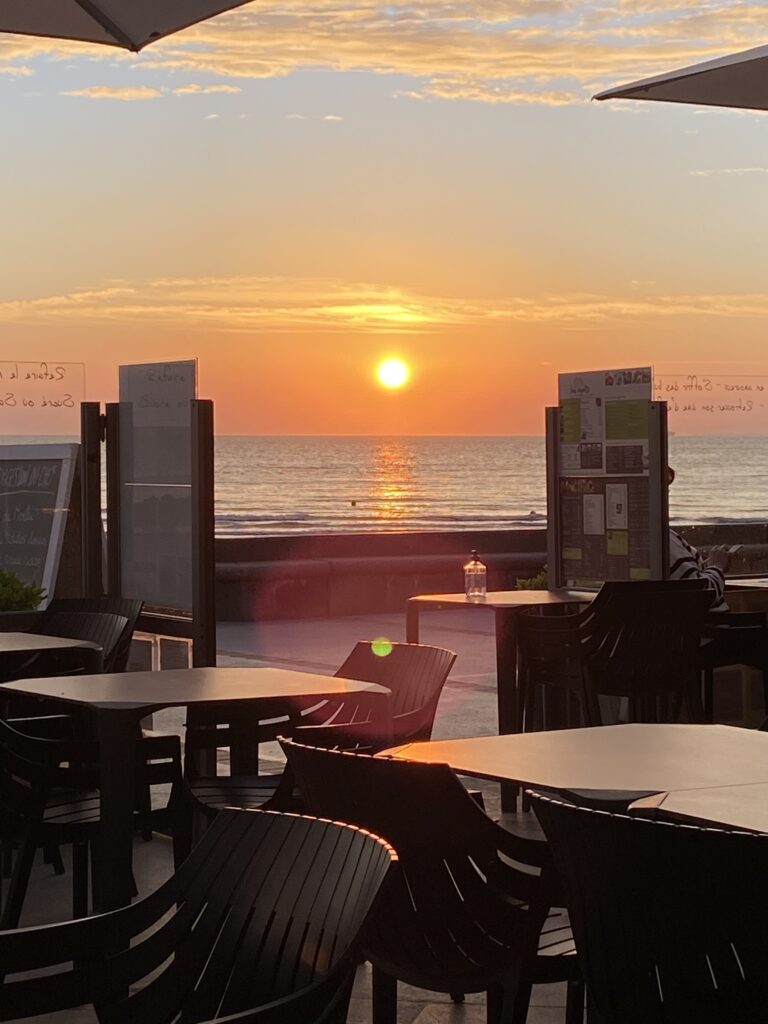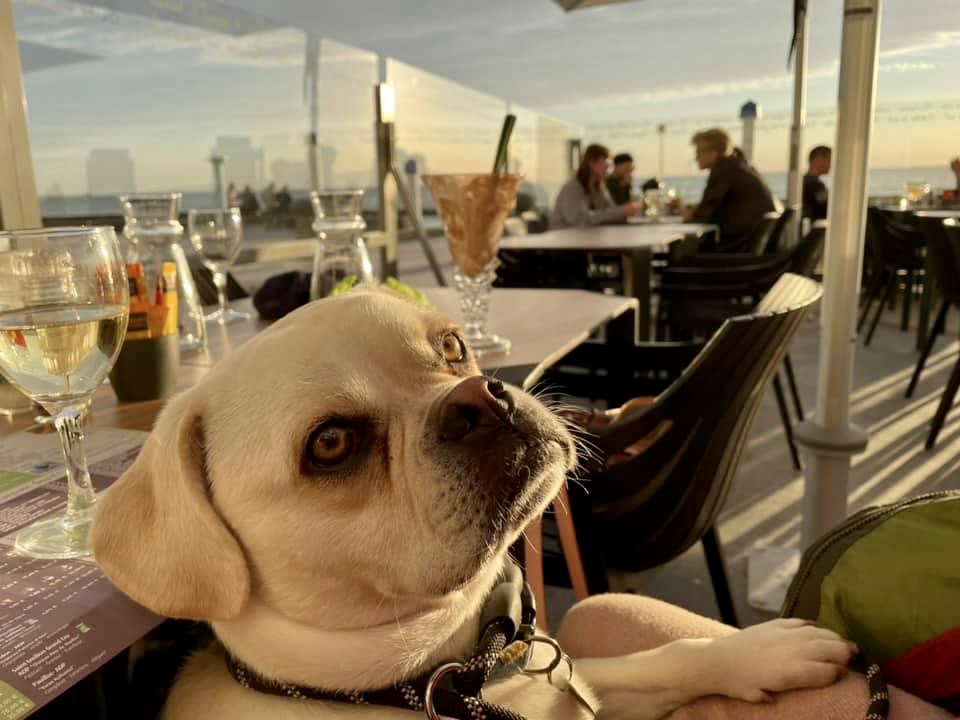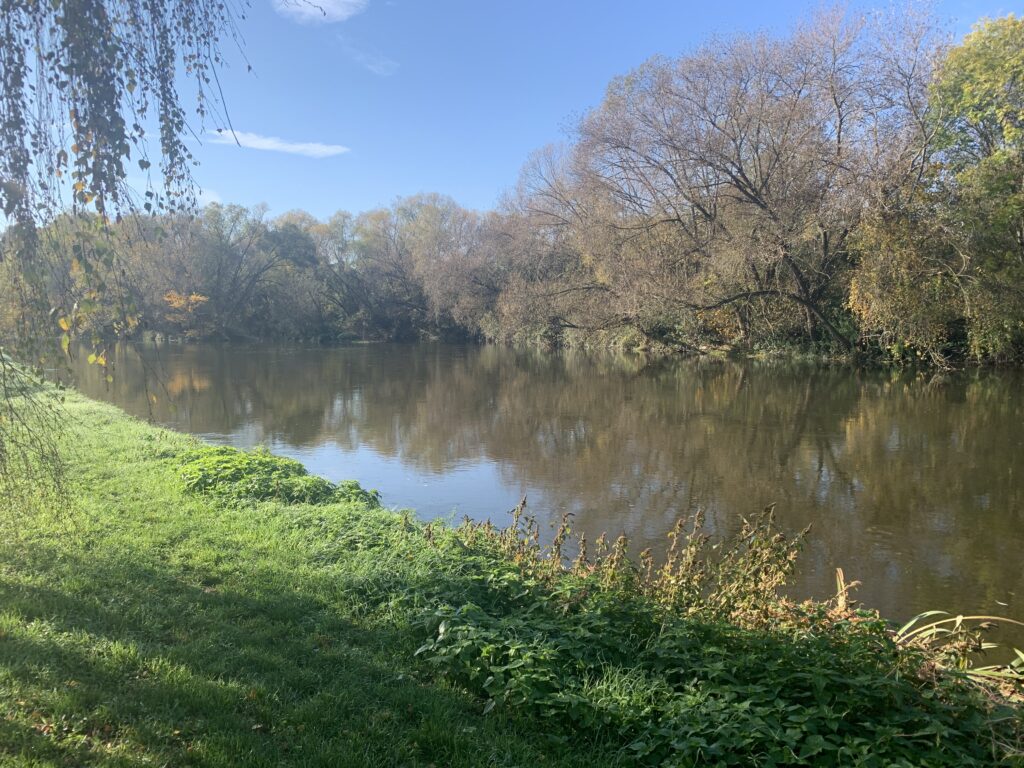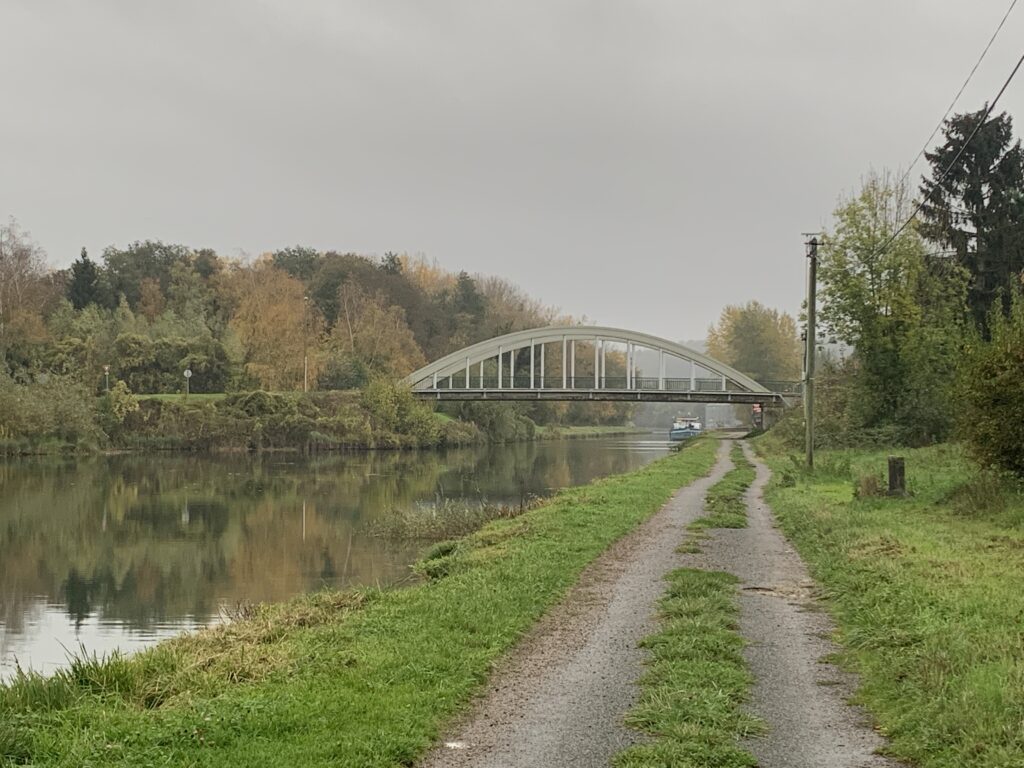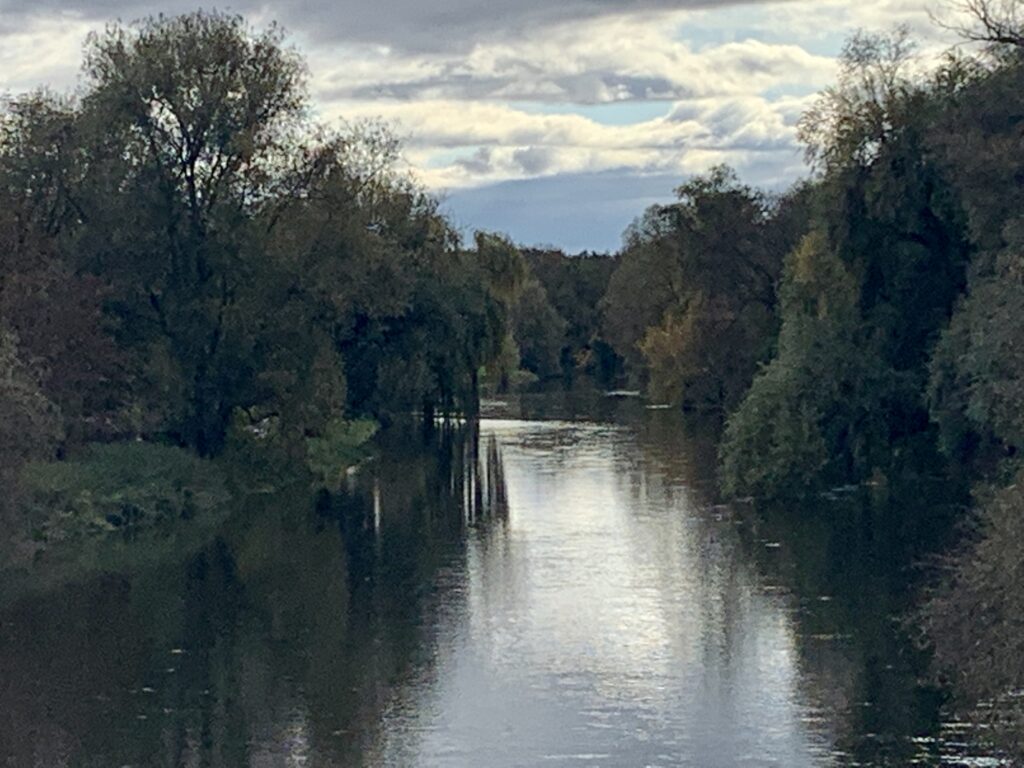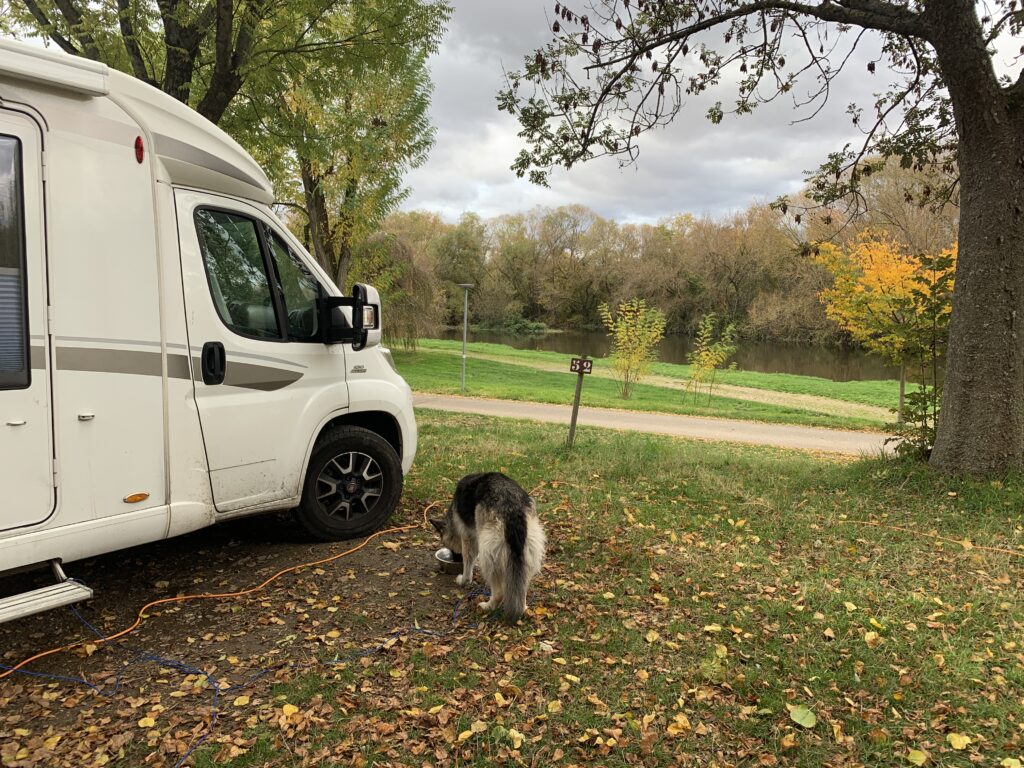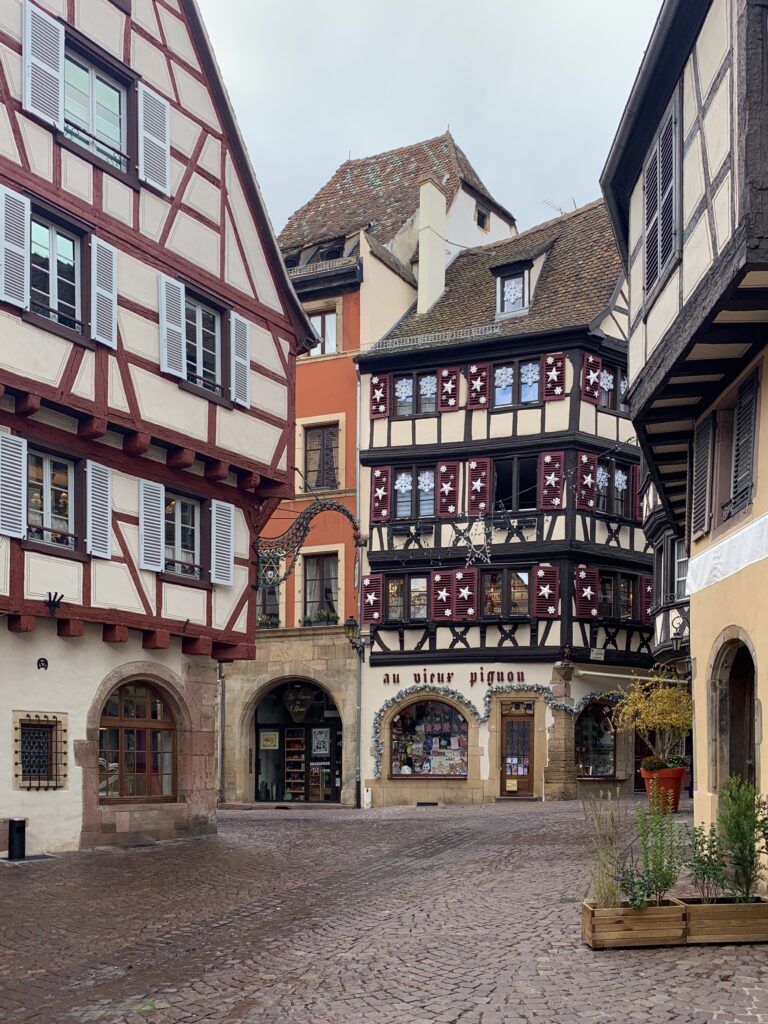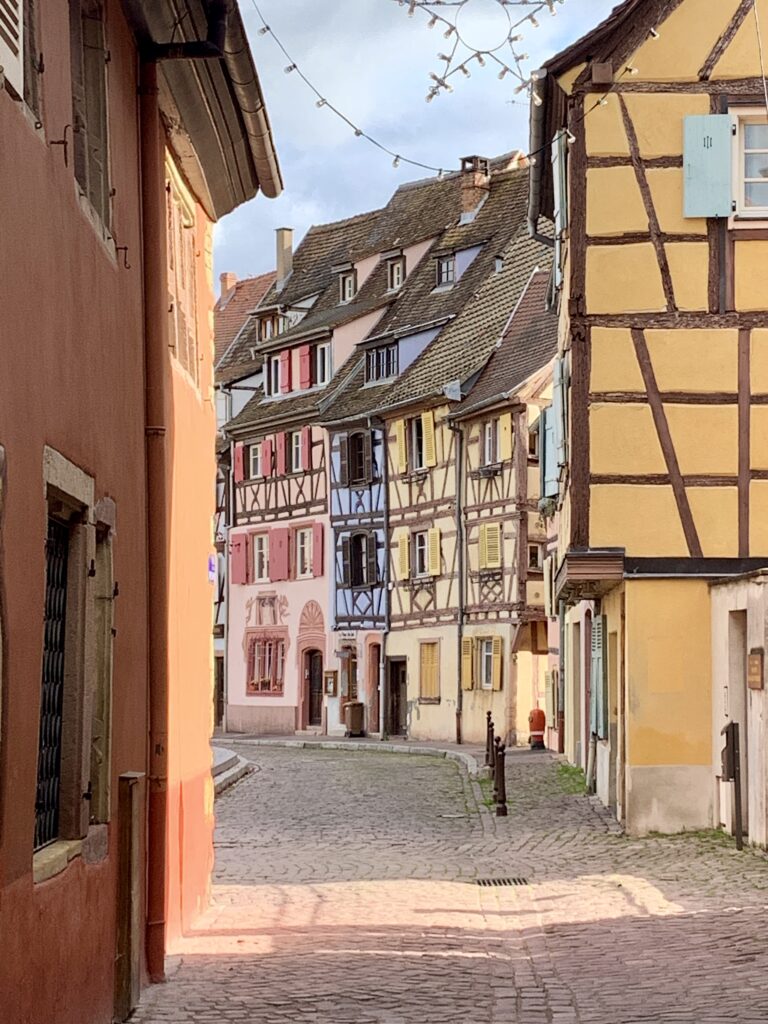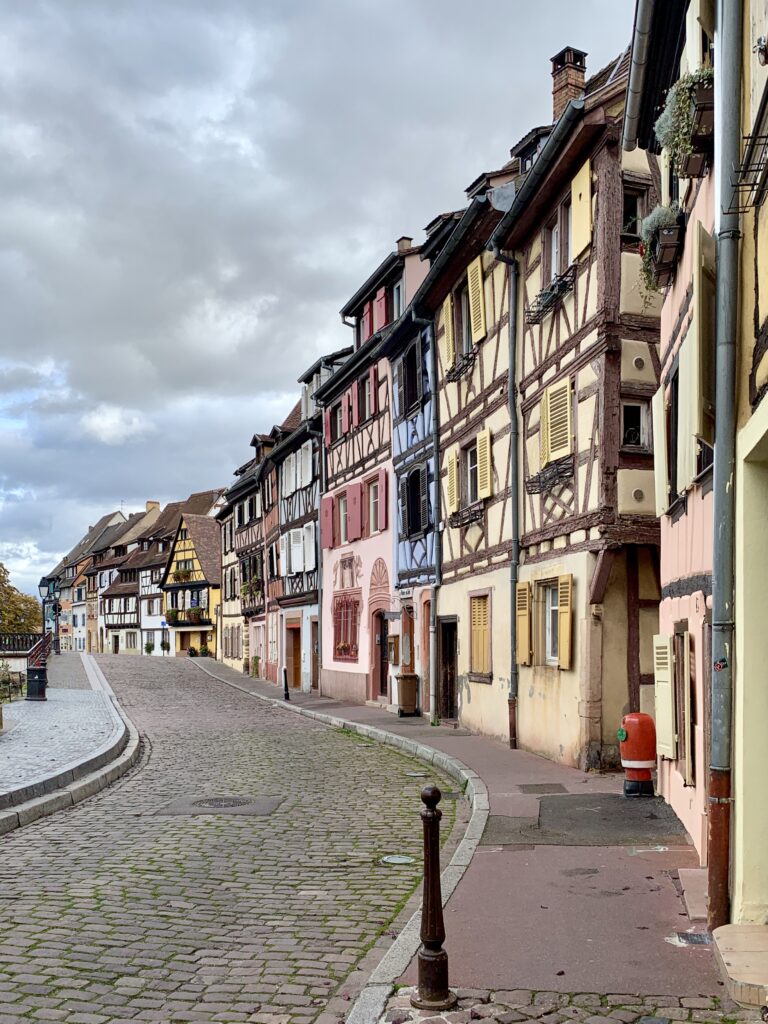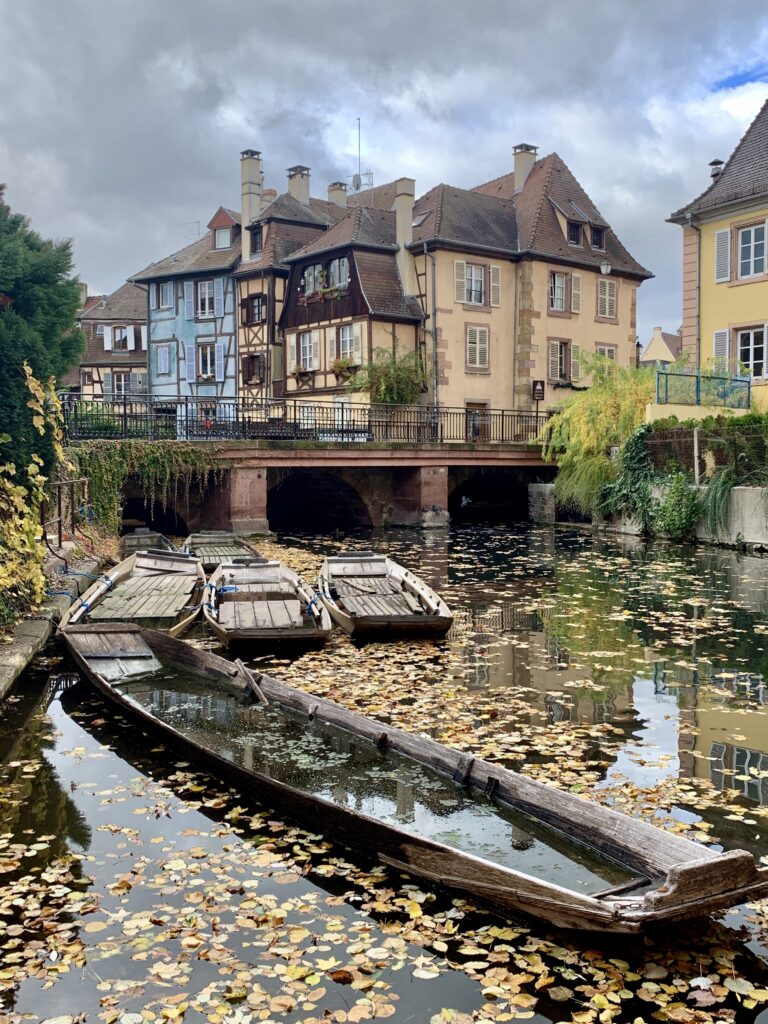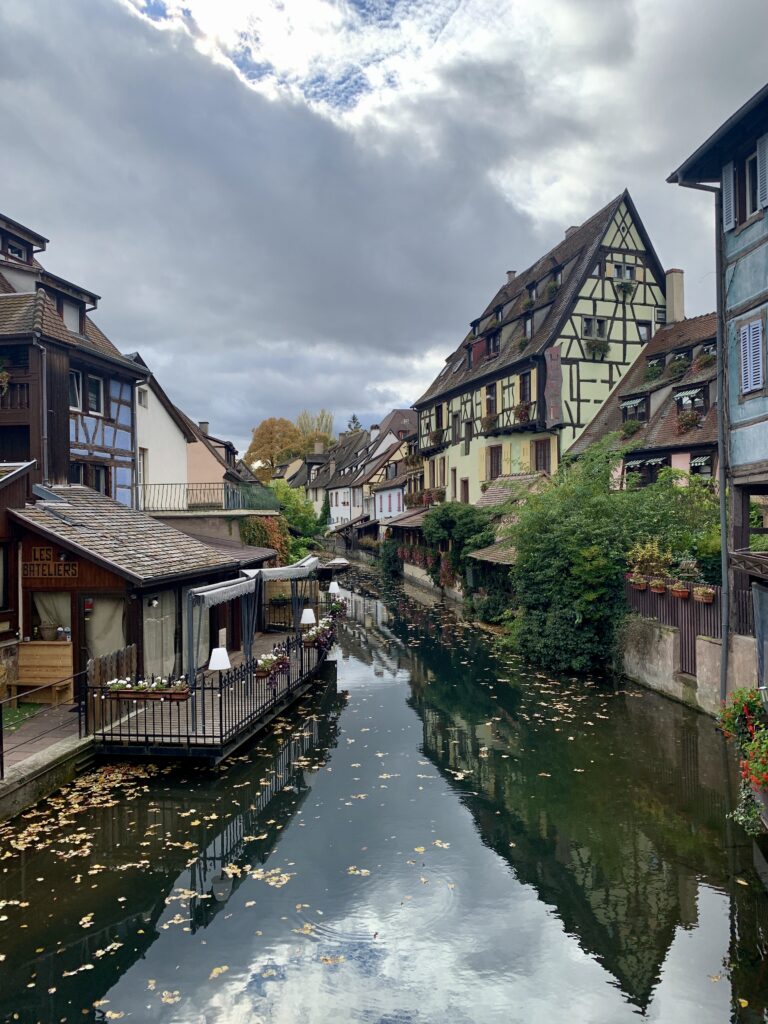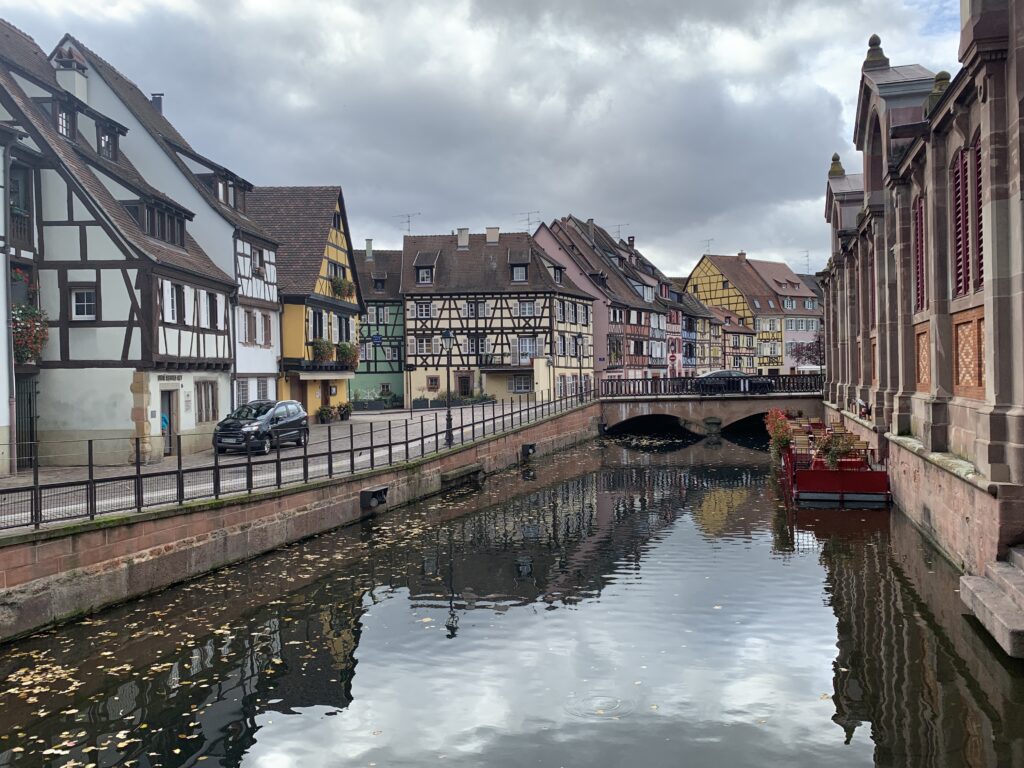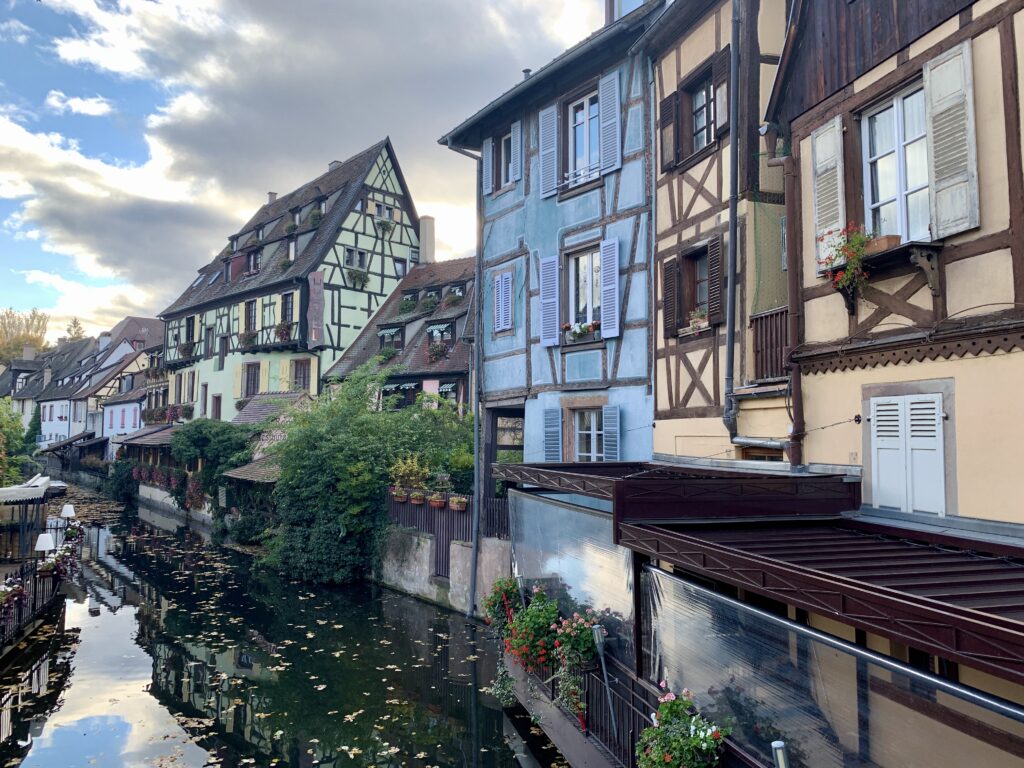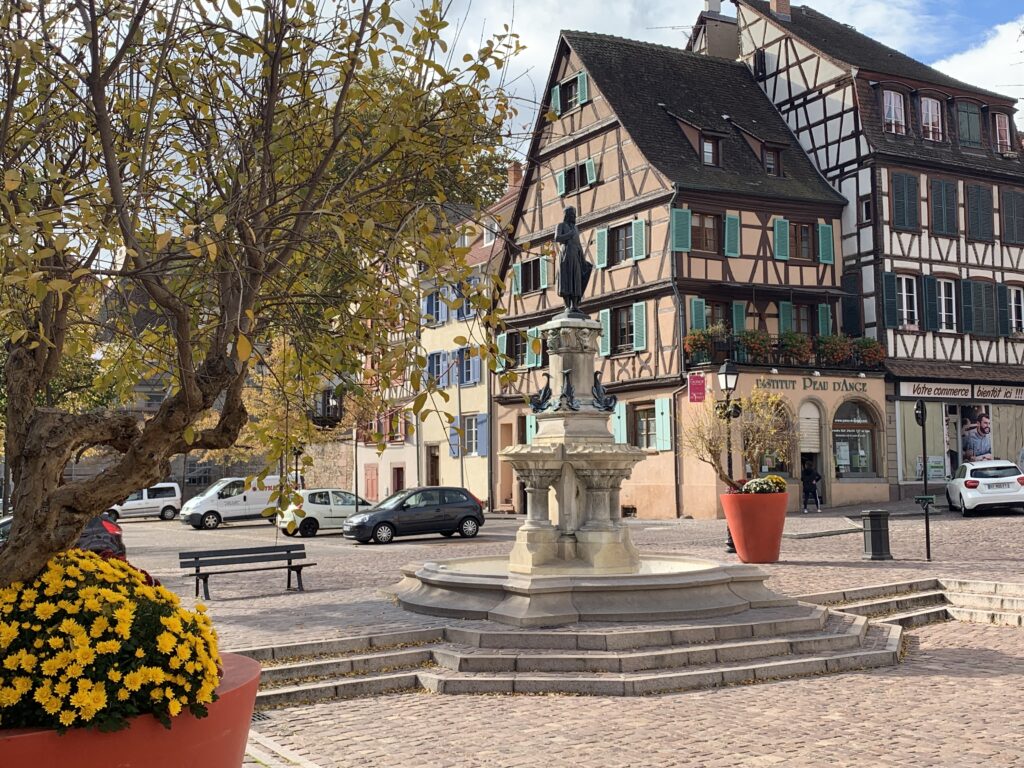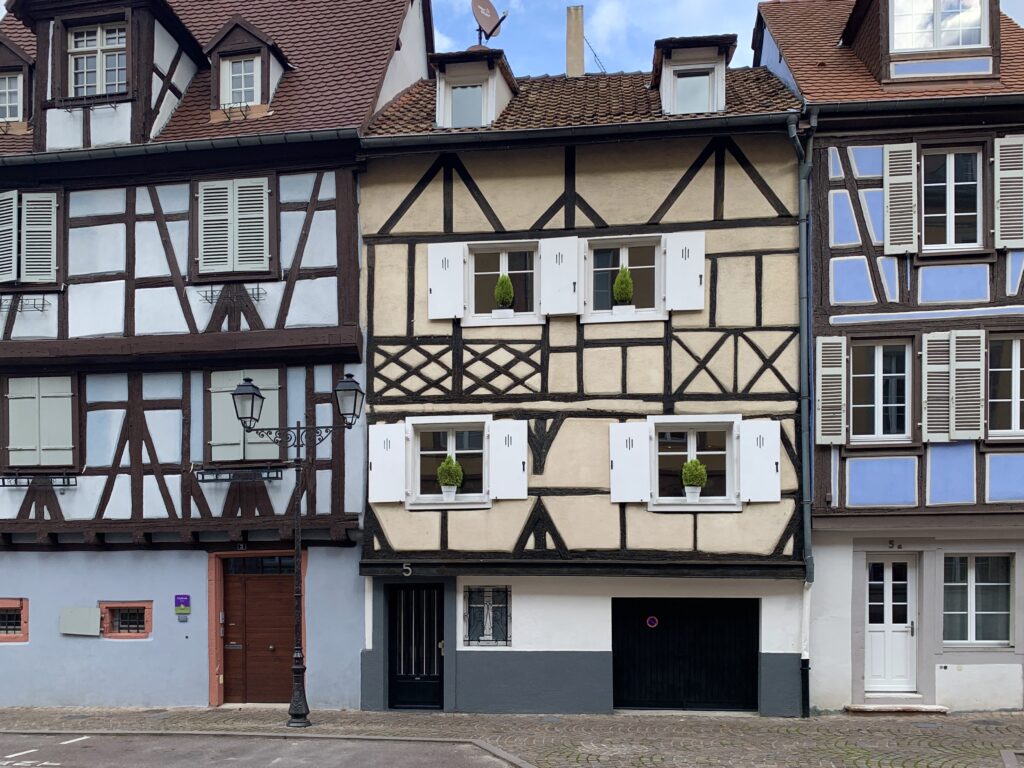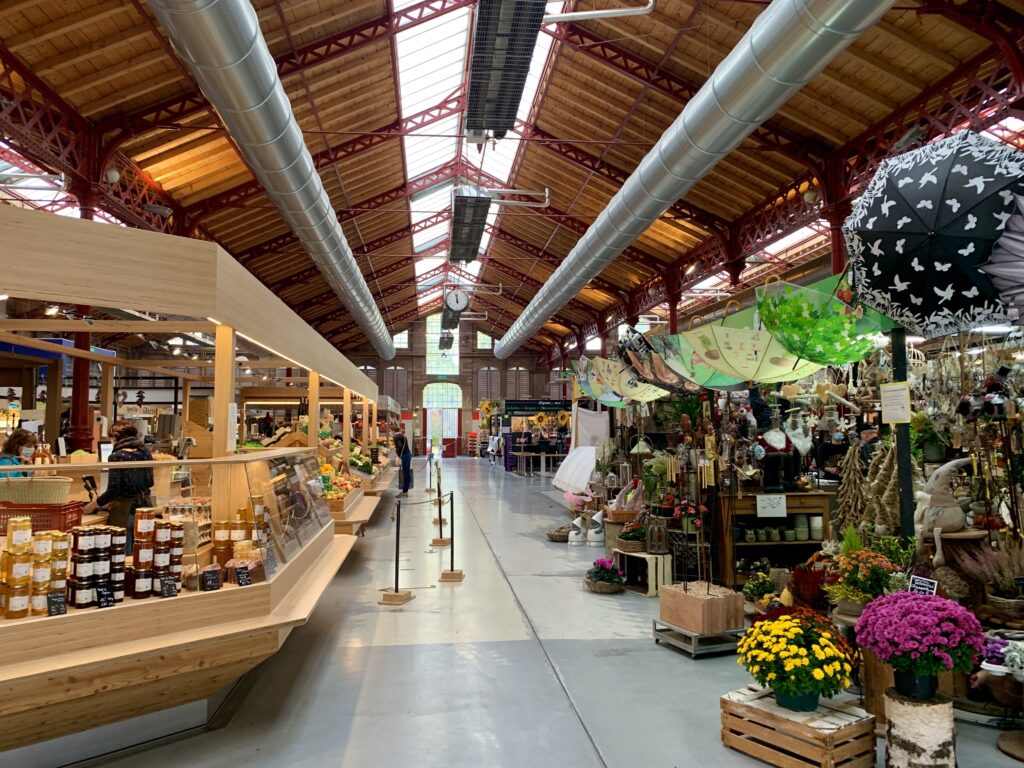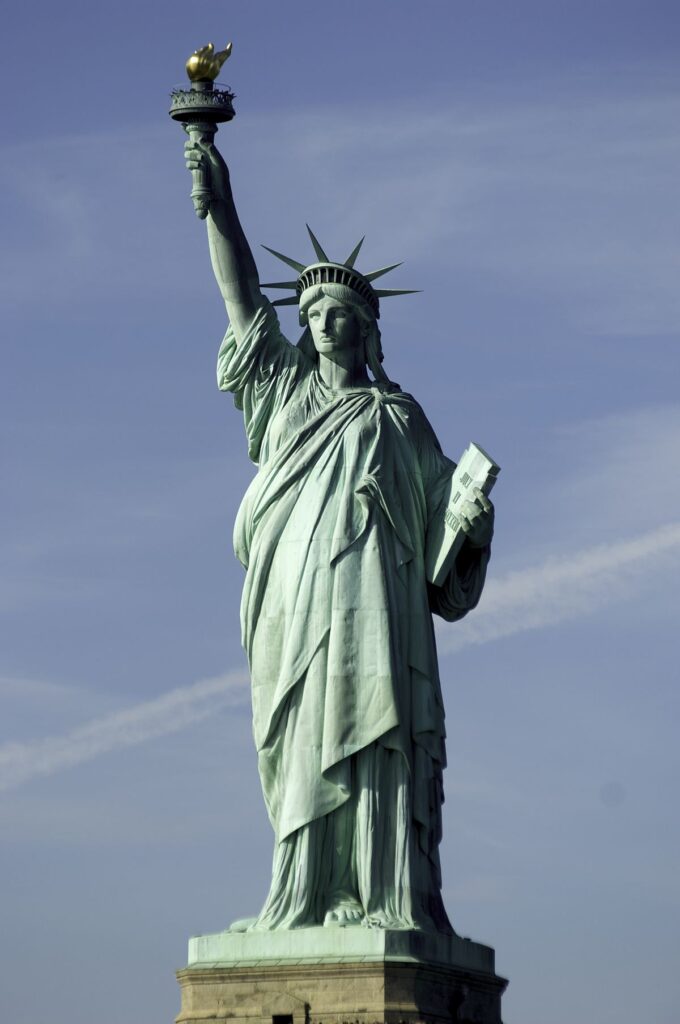Our current plan is to be in Spain for when Spain play Italy in the first of the two European Championships Semi-Finals. There was time therefore for one more overnight stay in France before we crossed the border. We settled on the small town of Villeneuve les Beziers which sits on the Canal du Midi and is within walking distance (4.5 miles) of Beziers.
I didn’t know it at the time but the drive south would take us over the 2.4 km Millau Viaduct which spans the Tarn Valley. Designed by Norman Foster and completed in 2004 it was, and perhaps still is, the tallest bridge tower in the world at over 1100 feet and it has the highest road bridge deck in Europe at 890 feet. It’s an incredible feat of engineering and quite beautiful although Vanya wasn’t in the least impressed as we drove over it – that is her acrophobia at work again.
Shortly after crossing the viaduct and with the weather still bad, but getting brighter all the time, we pulled off the motorway at Clermont L’Herault with a view to having lunch at one of two nearby beauty spots; either the Cirque de Moureze (with it’s strange rock formations) or the supposedly pretty Lac de Salagou, whichever we reached first.
Clermont l’Herault itself is a really quite unremarkable little town but from there Lac de Salagou was well signposted. Lac de Salagou was not that much more interesting and is best remembered for the unbelievably loud noise made by the cicadas (cigales in French) as the rain finally ceased and the sun came through. Honestly the sound was almost deafening. The other thing about the place is the strange red soil in the area which days later is still coating the Van.
We reached Villeneuve les Beziers soon enough and the sun was still shining as we parked up in a small campsite, Les Berges du Canal, which sits right on the Canal du Midi. The Canal is another engineering marvel stretching as it does some 240 kilometres from Toulouse to the Mediterranean Sea. It was built during the reign of Louis XIV (between 1667 and 1681) and connects the River Garonne to the Etang de Thau thus enabling canal boats to travel all the way from the Atlantic to the Mediterranean. Many of those canal boats have since been converted into really comfortable living accommodation…
Villeneuve les Beziers has a very pretty and surprisingly large old town. The 1oth century church of St Stephen is surrounded by narrow streets and lanes which in all likelihood haven’t changed much since the French Revolution. We had just missed the town’s annual Latin Festival with it’s concerts and salsa and flamenco dancing but were happy enough to simply wander the old town and stop for drinks in a local backstreet bar.
After exploring Villeneuve I left the dogs with Vanya and set off westwards along the Canal to Beziers which is, I am told, the major tourist attraction in this region. There was never going to be time for me to see all that much of Beziers but, sad person that I am, I was delighted to stumble upon the Beziers Aqueduct which takes the Canal du Midi over the River Orb. Another fine piece of engineering but also visually impressive with it’s arcaded walkways under the canal itself. Unfortunately, those walkways are closed to the public but one can walk the tow paths at the top. The aqueduct took 4 years to build and was completed in 1858 but the Chief Engineer died a few weeks beforehand and it had to be finished by his son.
The view from the aqueduct over Beziers and towards the Cathedral of Saint Nazaire is impressive. The cathedral is unusual in that it looks more like a castle than a church. It was built that way to impress upon the Cathars the might and power of Catholic Rome – not that there would have been many Cathars left in Beziers after the 1209 massacre which initiated the Albigensian Crusade.
By the time I got back to Villeneuve I was ready for a few beers (the round trip amounted to some 12 miles of walking) and Vanya and I found a real local’s bar where we enjoyed the cheapest beers of the tour so far.
Dinner followed at a fine restaurant on the canal front, with the restaurant owners once again being very accommodating so far as our dogs were concerned. We ordered a mixed tapas followed by a particularly salty pizza (far too many anchovies for me) to share. The tapas were great except for one dish, which I thought were mushrooms but proved to be duck hearts – uugghh!!

